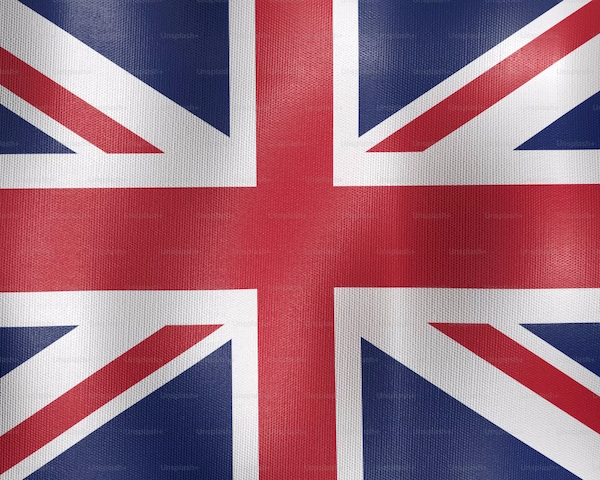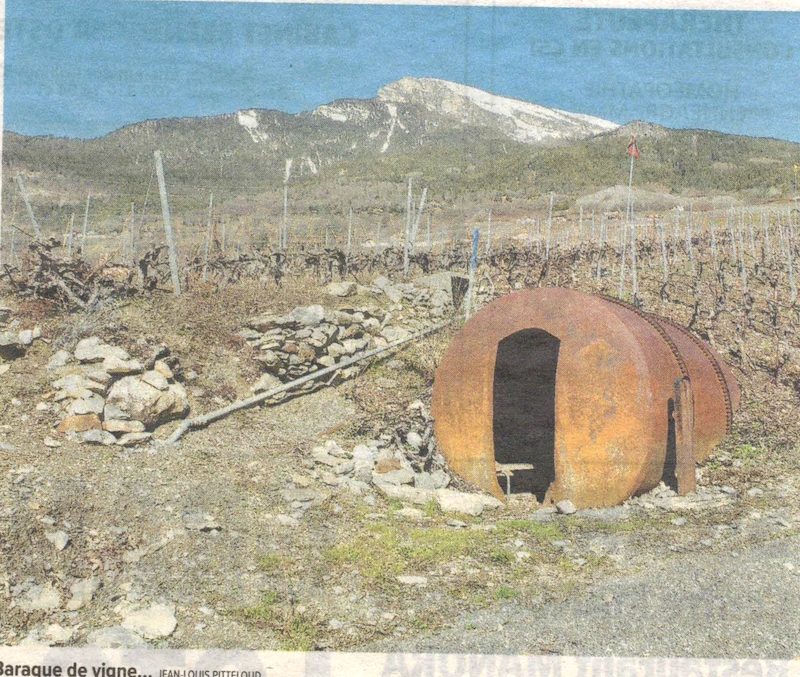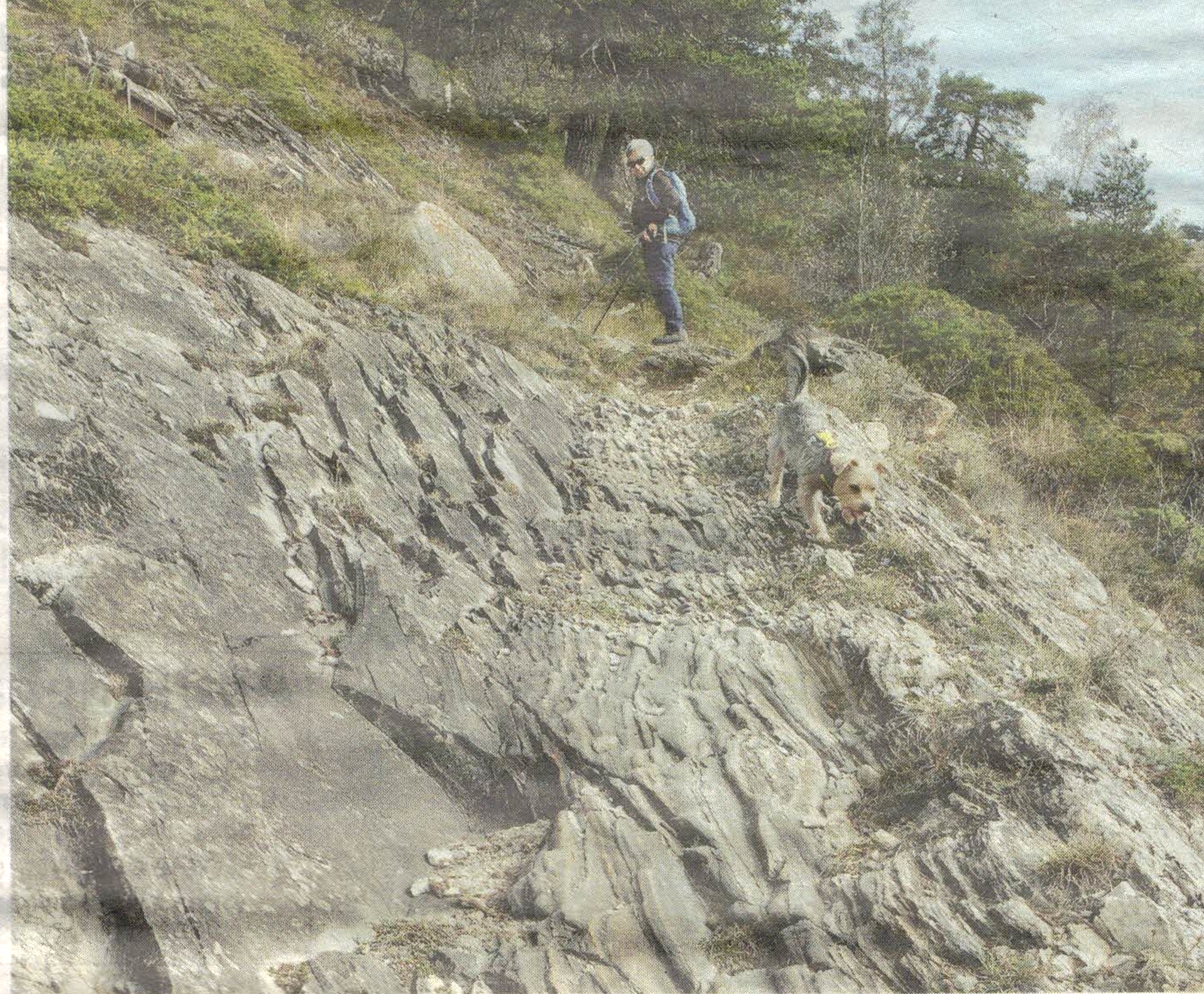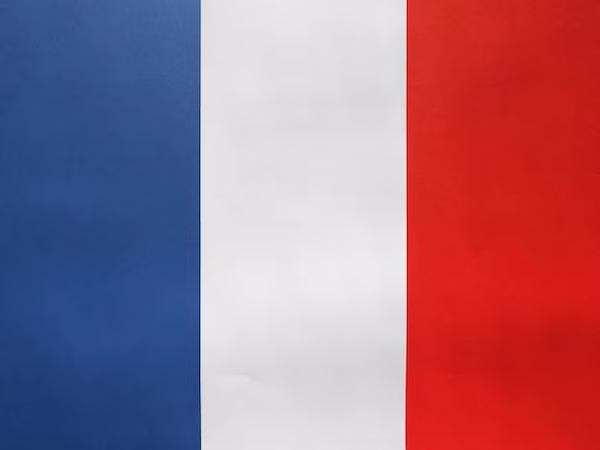


Boucle au soleil / Loop in the sun
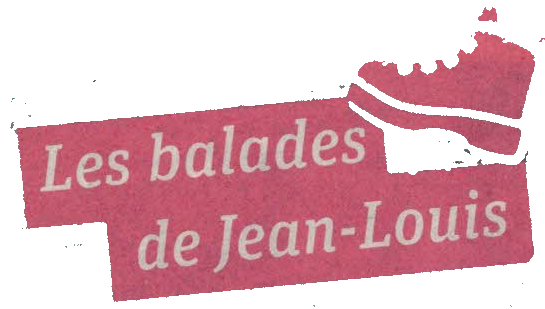
Sur la cote dorée de Viège / On the golden coast of Visp

Nouvelle voie au Saipal
Expédition de la section genevoise du CAS au Saipal
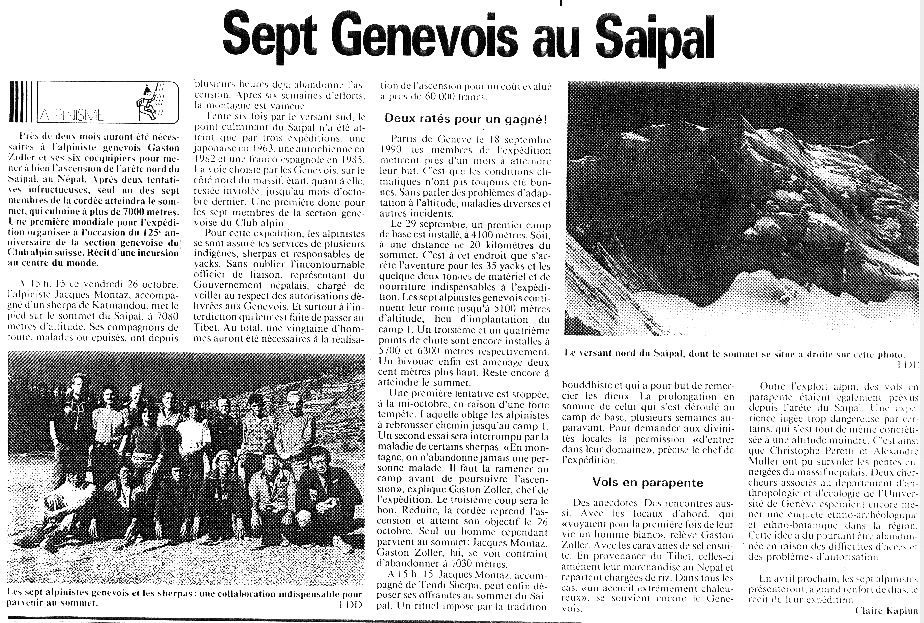
Katmandou et marche d’approche
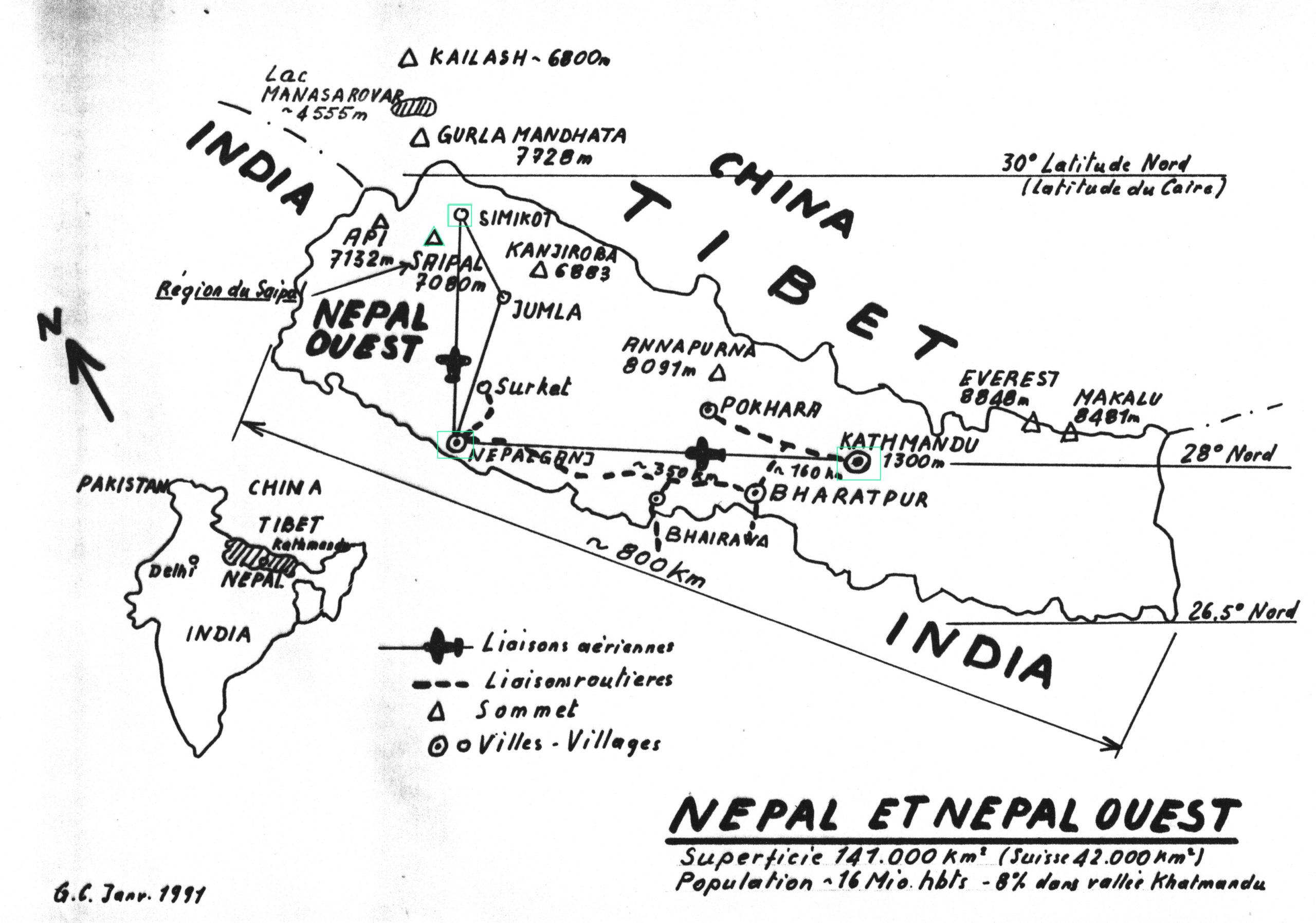
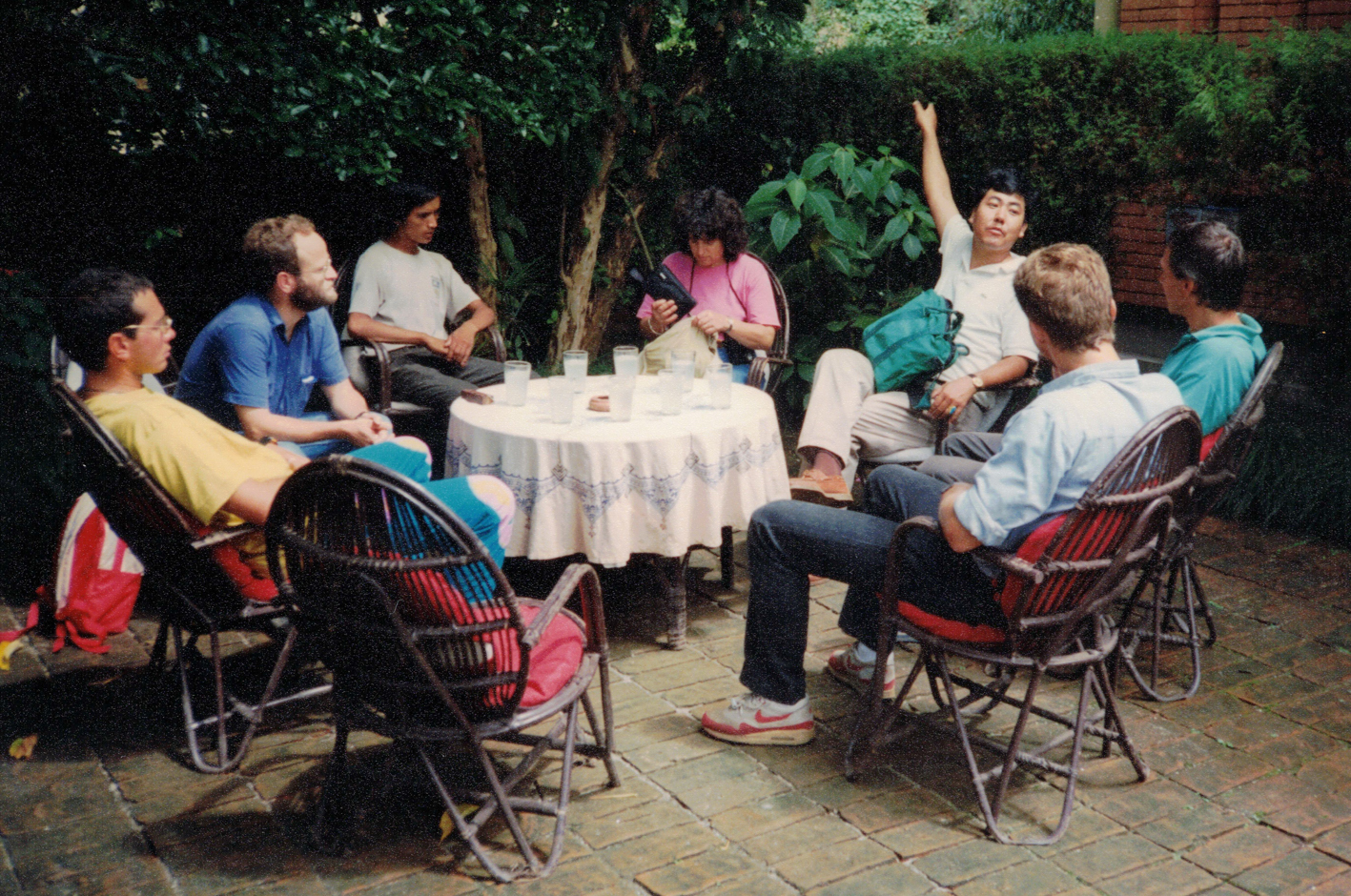
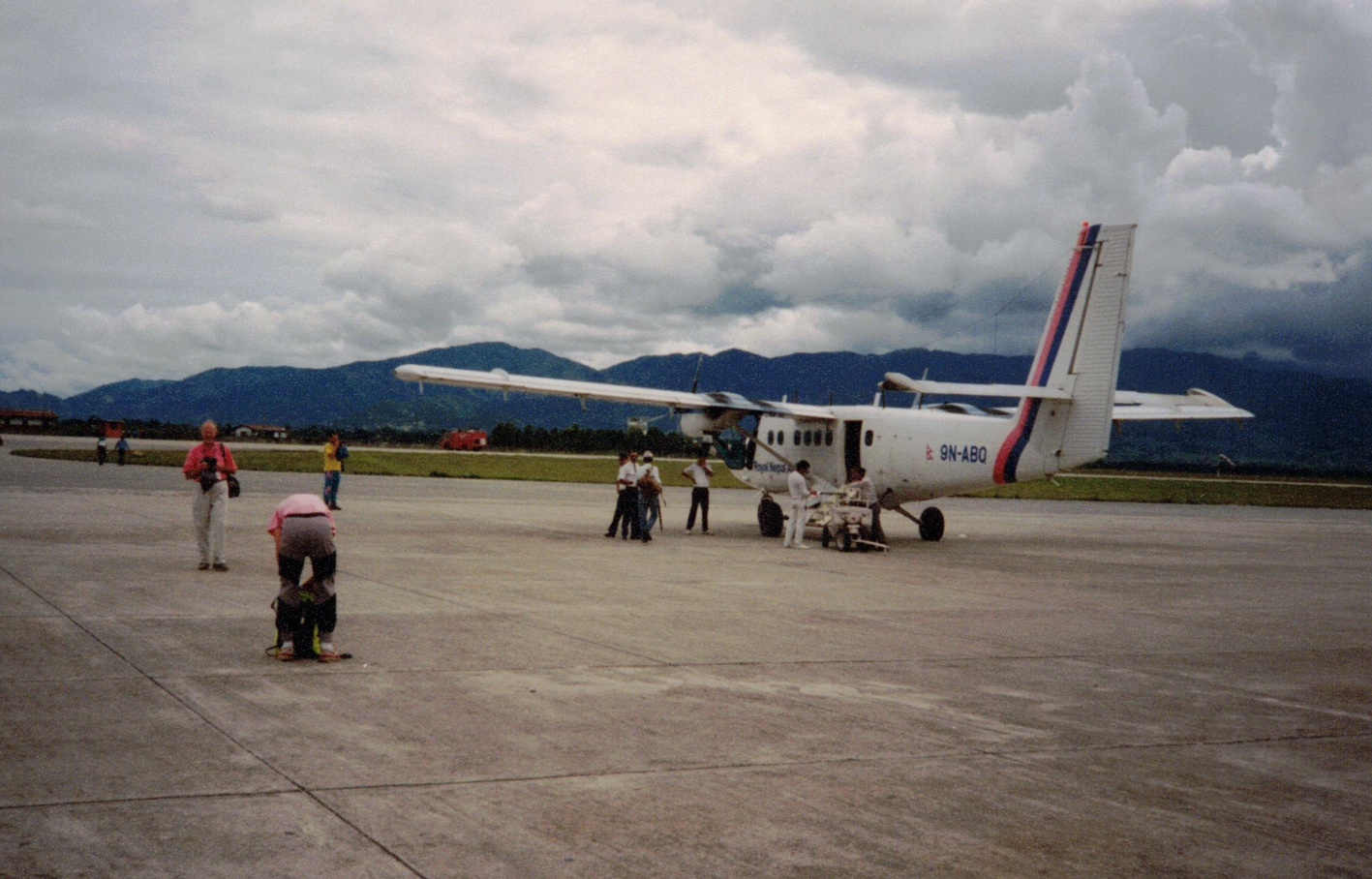
En passant près d’un temple nous nous sommes fait bénir par l’apposition d’une marque rouge sur le front « le Tika« .
21 septembre
Réception et réparation du sac de compression
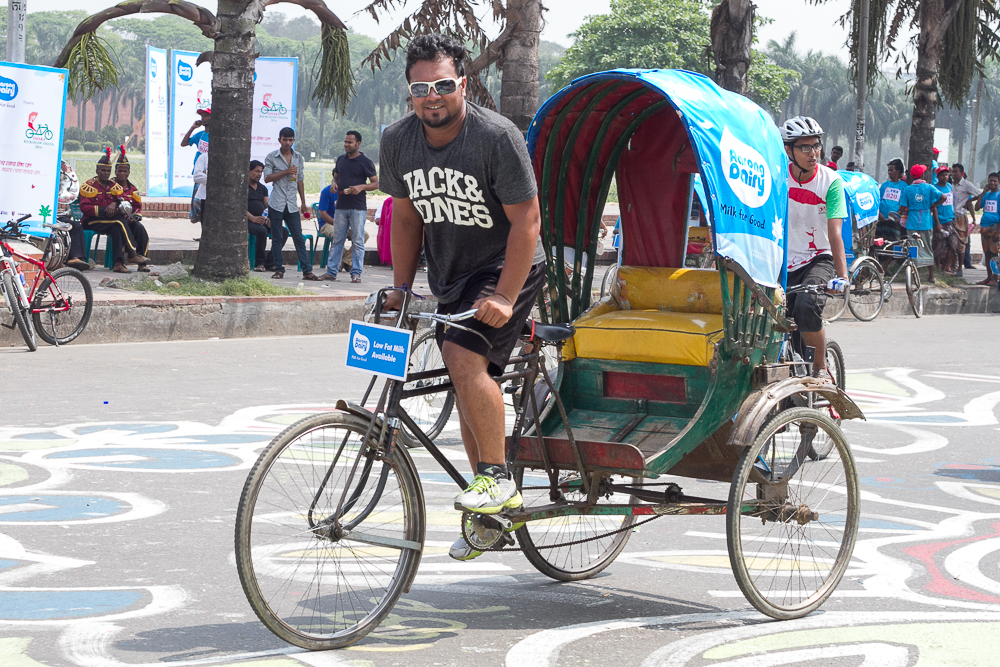
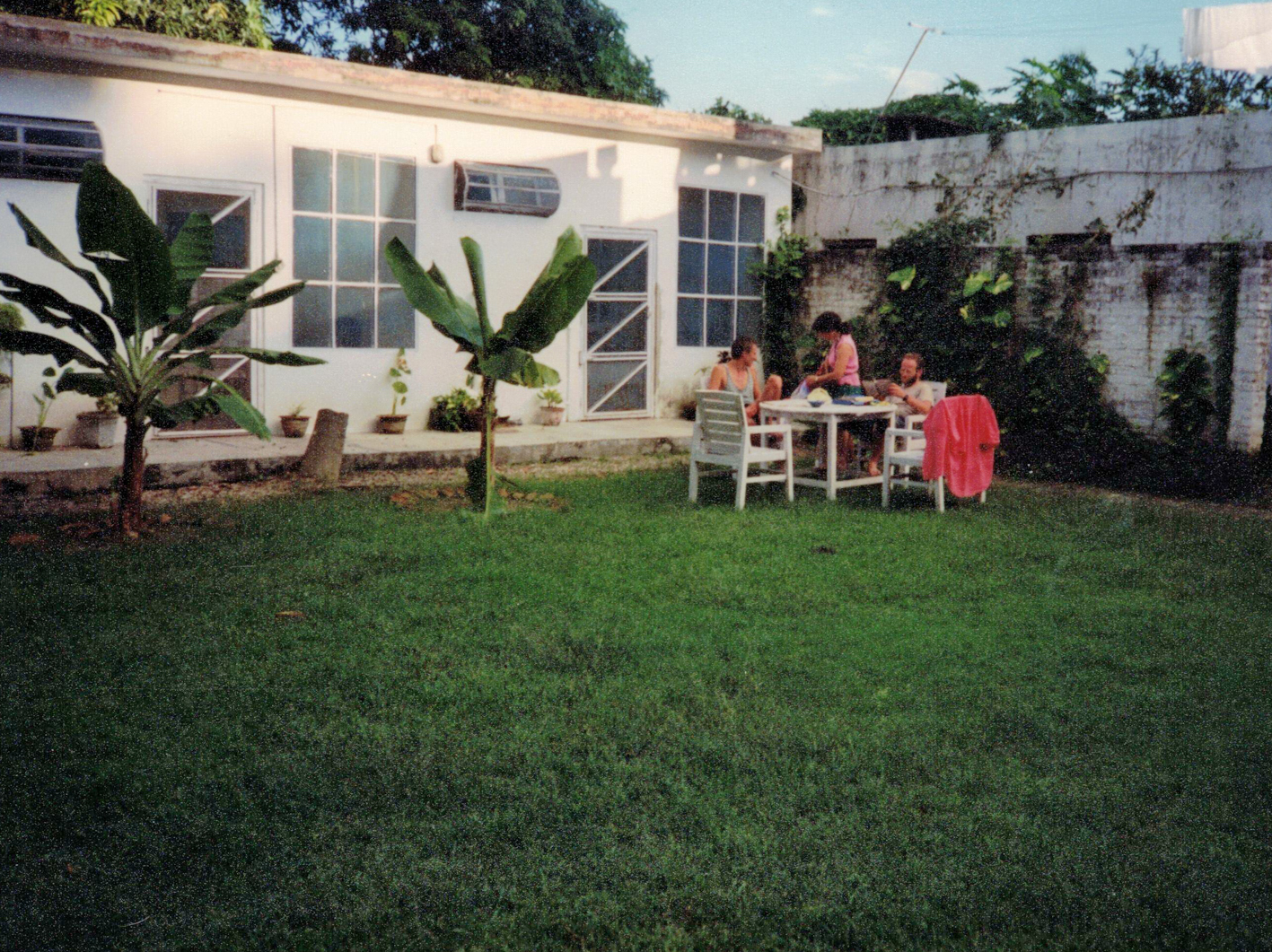
Notre hôtel, de style colonial,
est planté au milieu des rizières,
à 10 mn du bazar en rickshaw.
22 septembre
Départ du vol pour Nepalganj à 12h30, sur un Twin Otter, après un pique-nique à la buvette de l’aéroport.
Nous volons à 3300 m. d’altitude, et distinguons l’Annapurna puis le Dhaulagiri. Atterrissage parfait à Nepalganj (150 m.). Il fait chaud (35°) et très humide.
Des rizières à perte de vue et de grosses rivières boueuses. Ville typiquement indienne.
Les locaux préparent activement la fête « Dashain« .
23 septembre
Départ pour Simikot. Réveil à 04h15, décollage de l’avion vers 06h45. Nous volons à 4115 m. parmi les nuages.
Simikot est une ville des montagnes du nord-ouest de l’Himalaya népalais, située à 2910 m. d’altitude.
Le pilote a du mal à distinguer la piste. Au 4ème passage… enfin une éclaircie sur la piste en terre battue de 500 m.
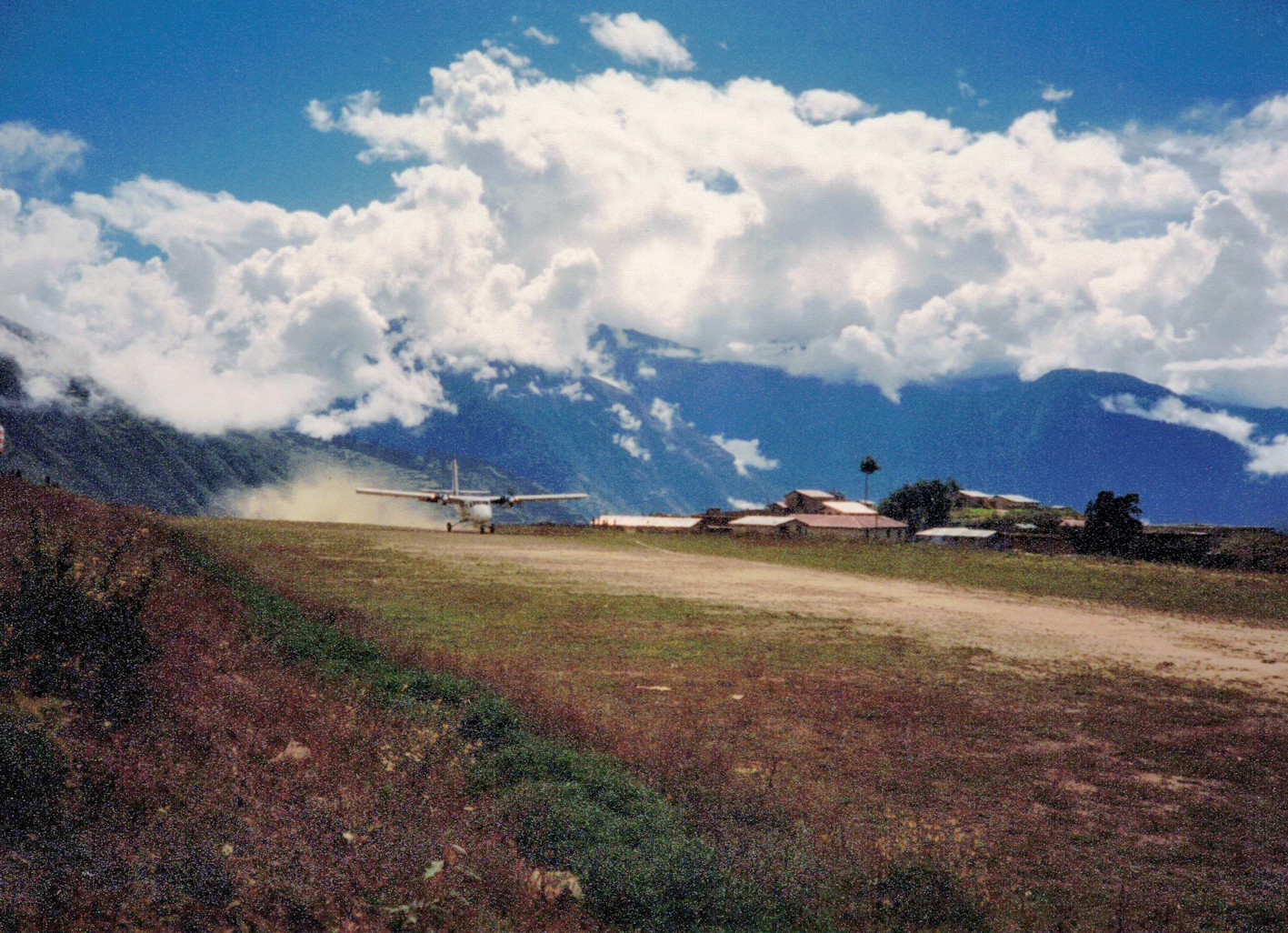
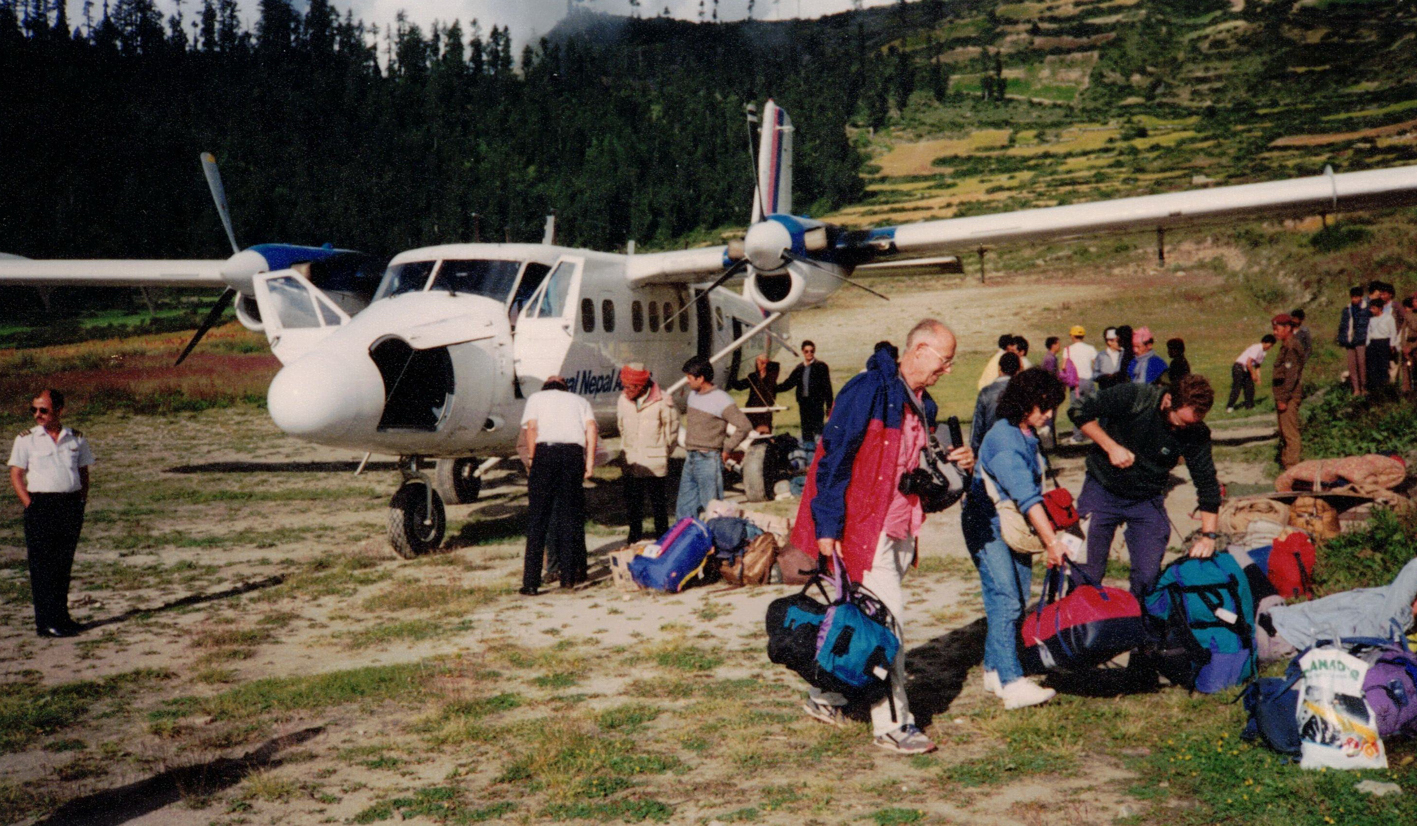
Déchargement. Tout le village est là… c’est le fête !
Le gros du matériel était déjà arrivé sur place la veille, avec un sherpa et un aide-cuisinier.
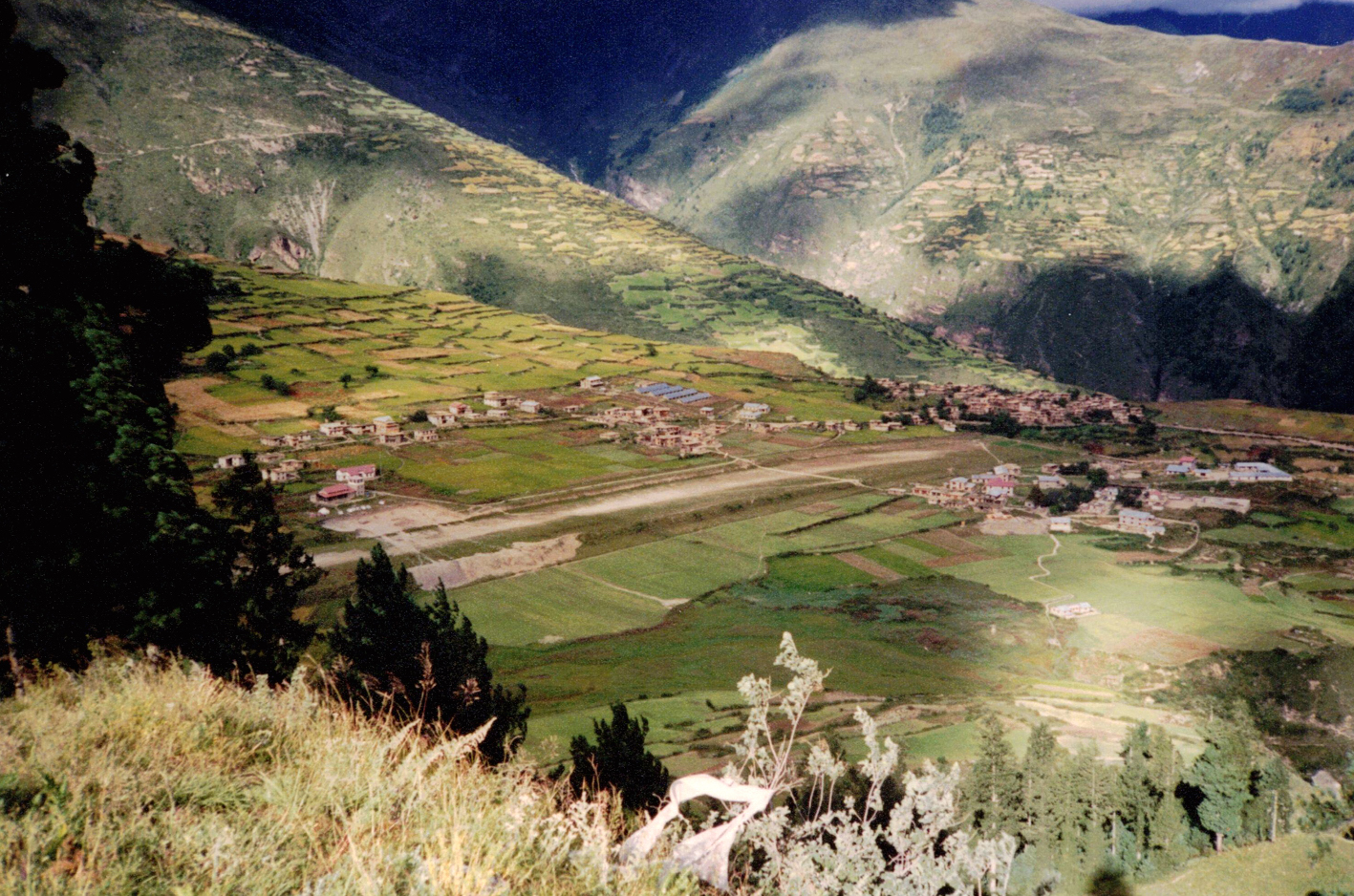
Simikot
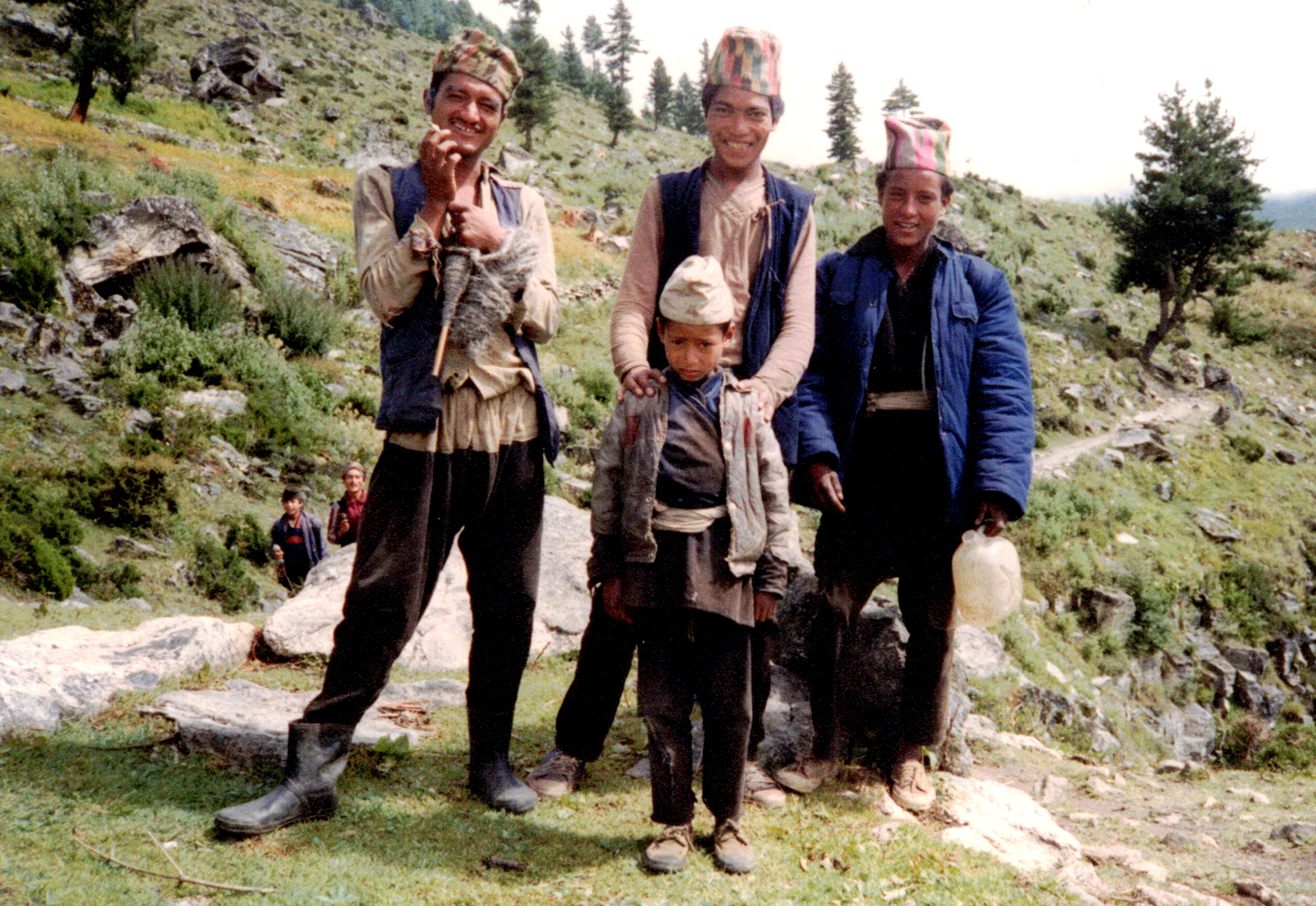
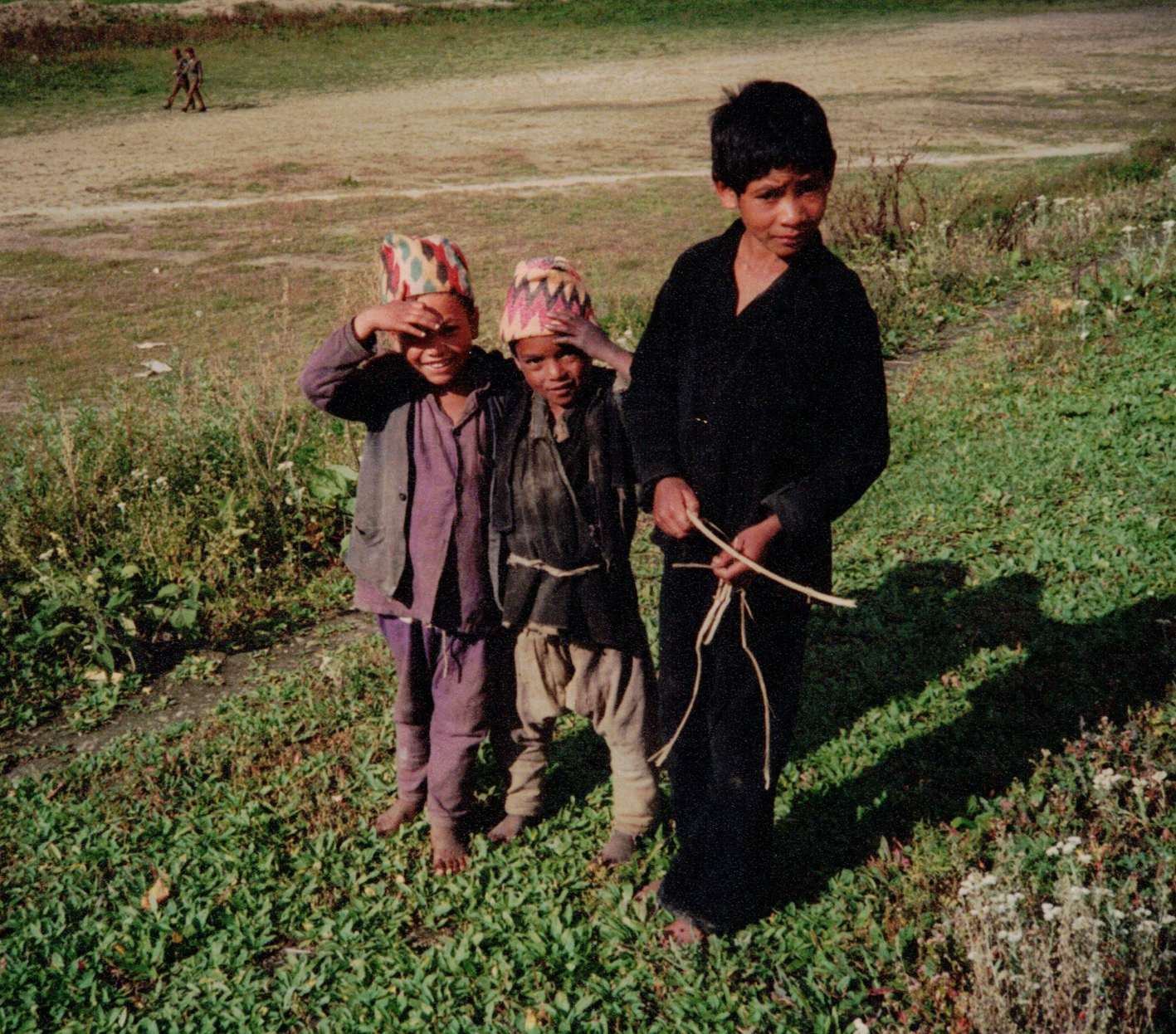
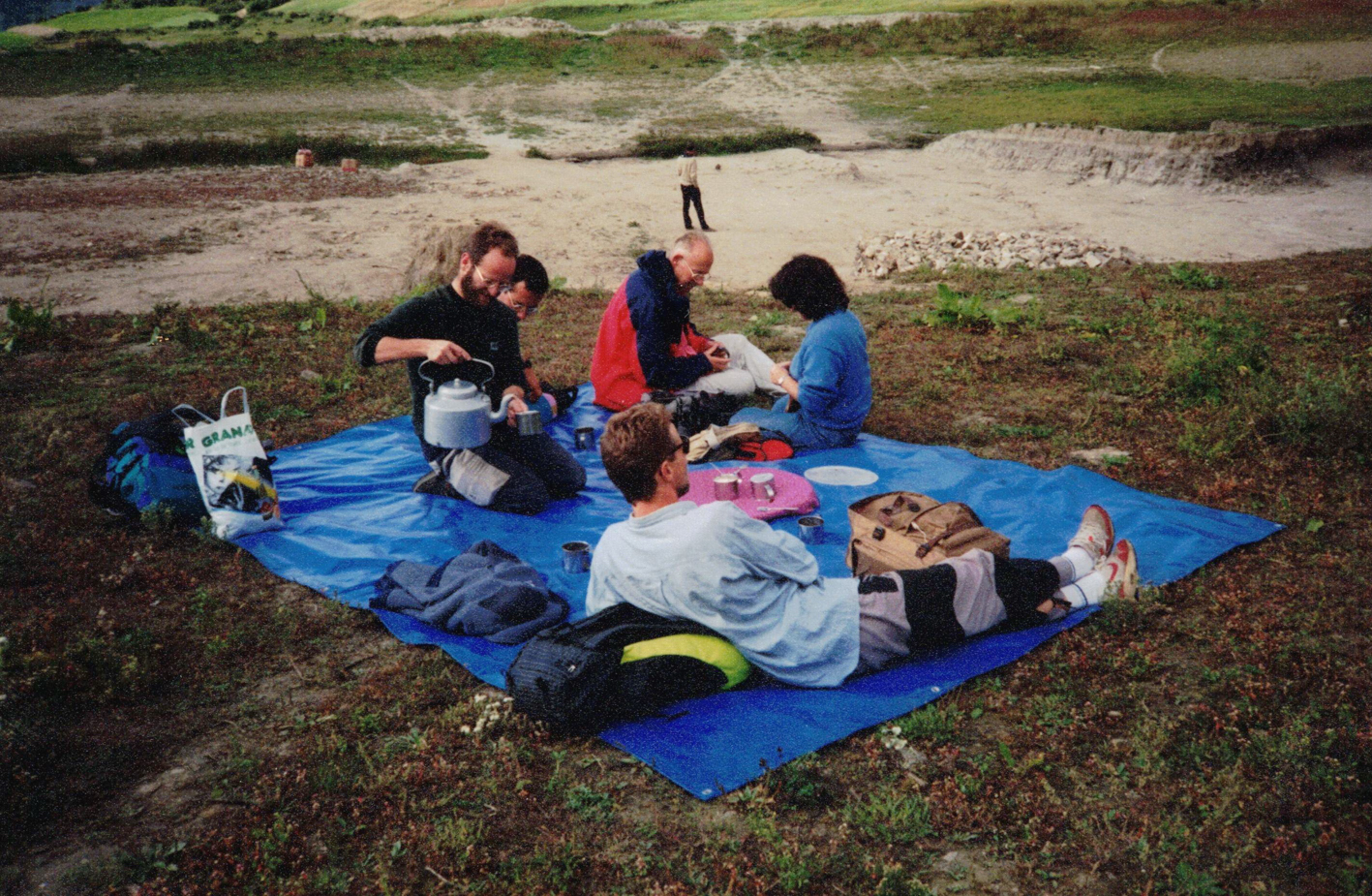
La cuisine fume. Une grande bâche plastifiée est étalée pour nous accueillir avec le thé traditionnel.
Nos tentes sont montées. Les coutures imperméabilisées et les fermetures éclair passées au savon pour améliorer leur fonctionnement.
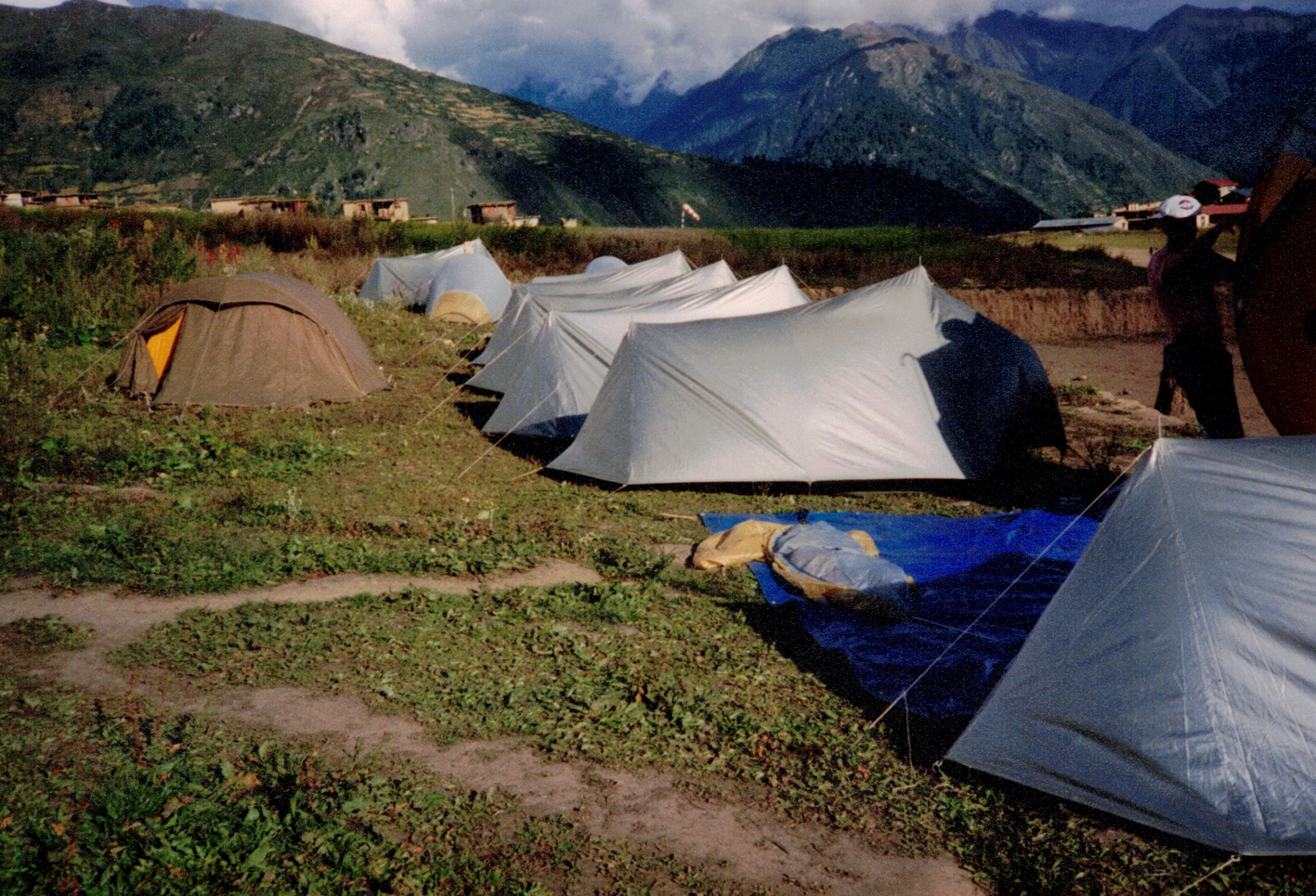
Le souper est servi sous la tente-mess à la lueur d’une lampe à kérosène.
24 septembre
Petit déjeuner servi par le personnel népalais à l’entrée de la tente. J’accompagne Alex à la fontaine du village pour une lessive et quelques ablutions. L’après-midi, visite de Simikot et balade vers un « Chörten » (un des symboles de la religion bouddhiste). Les yaks tant attendus ne sont toujours pas arrivés.
25 septembre
Réveil à 06h30. Les yaks sont là. Nous plions nos tentes et départ.
A la vue du désordre par manque d’organisation, Georges s’enfuit suivi de Geneviève, notre infirmière. Je ne tarde pas à les suivre.
Descente très raide vers le fond de la vallée. Nous suivons le chemin du bas, les yaks celui du haut, plus long mais plus facile.
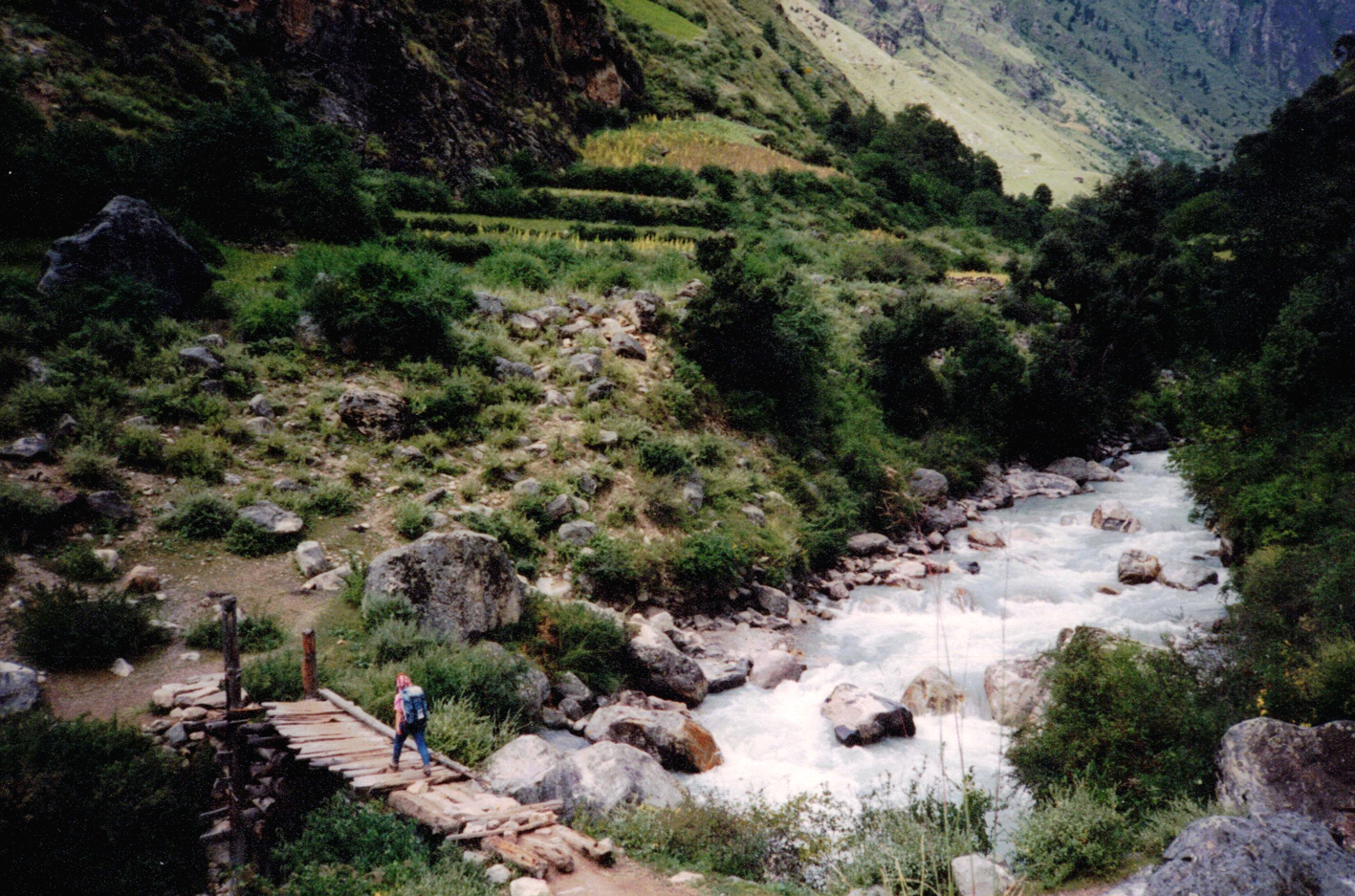
En traversant un hameau, Geneviève donne son reste de pique-nique à une petite fille. La maman nous offre des pommes de terre en robe des champs, délicieuses.
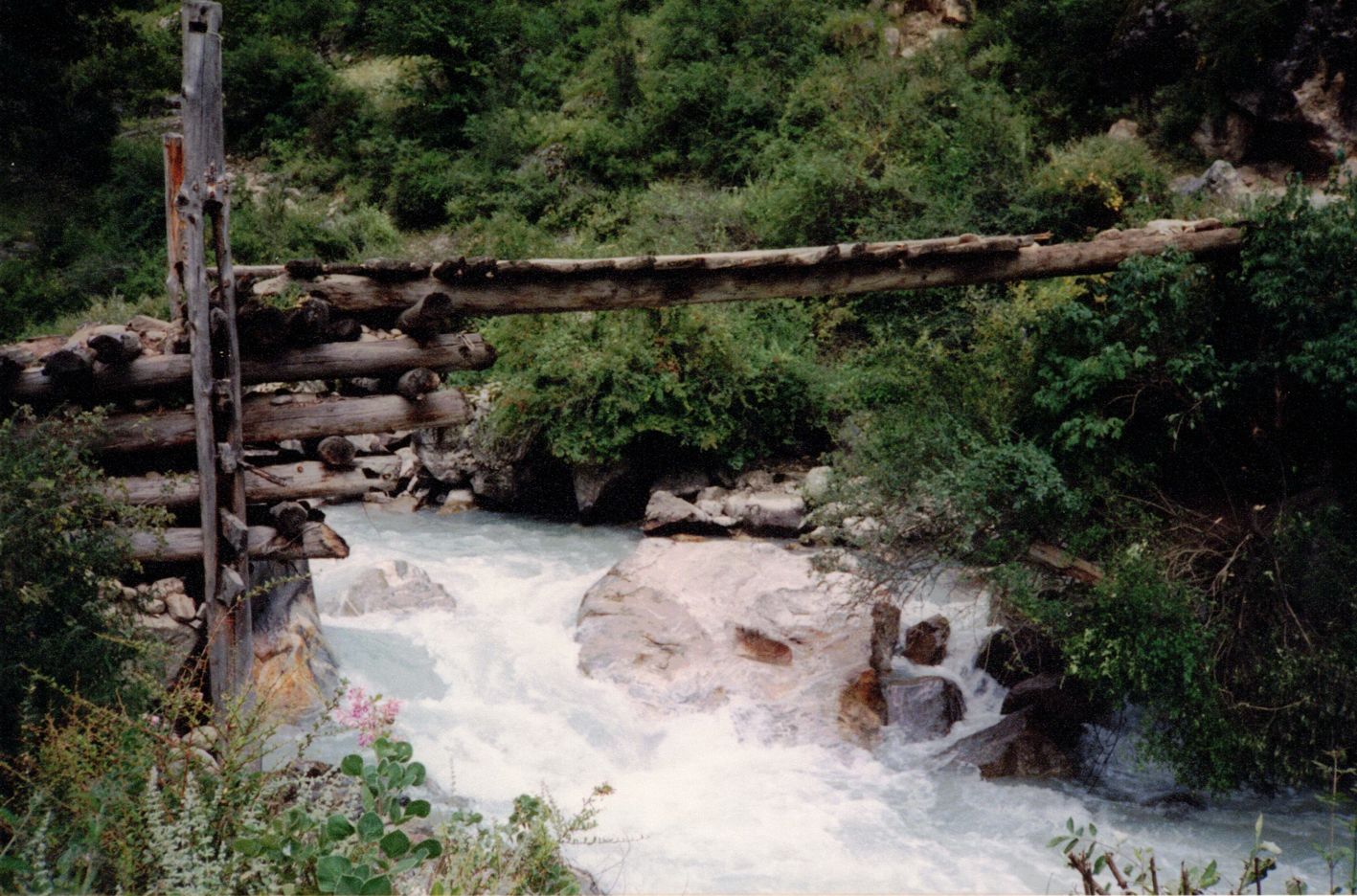
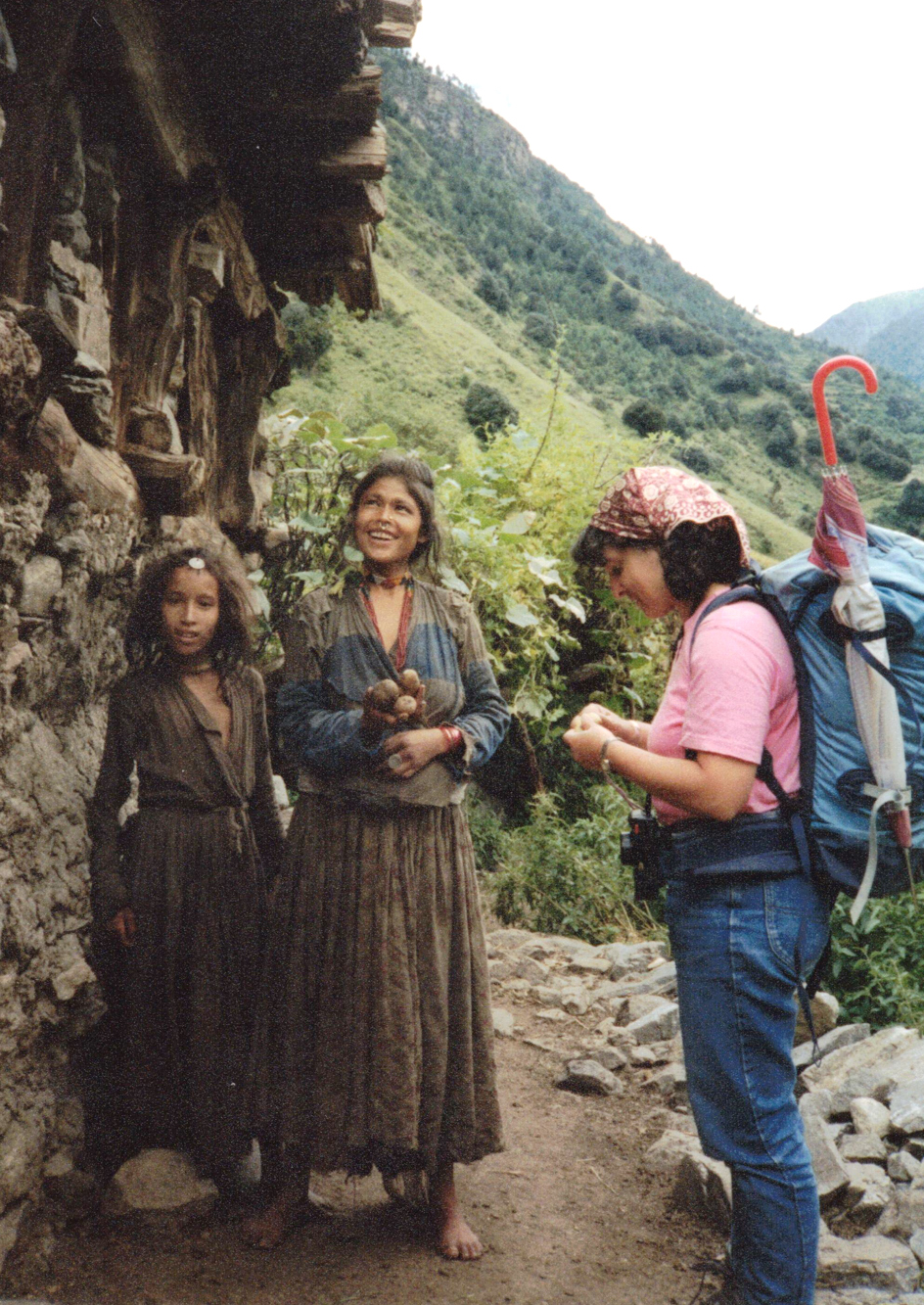
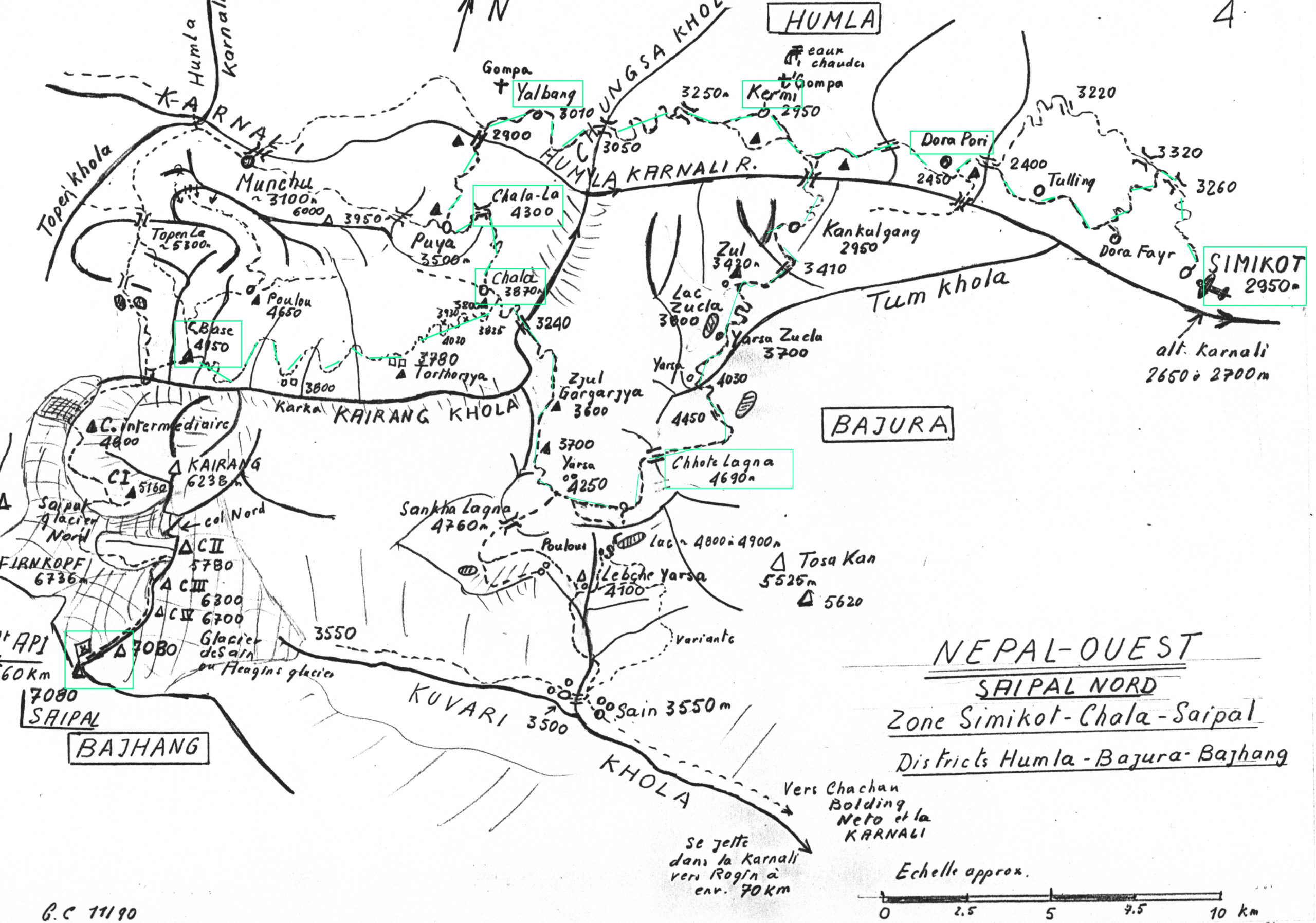
A Dara Pori nous croisons une fillette de 7-8 ans qui porte un jerrycan d’eau de 20 litres.
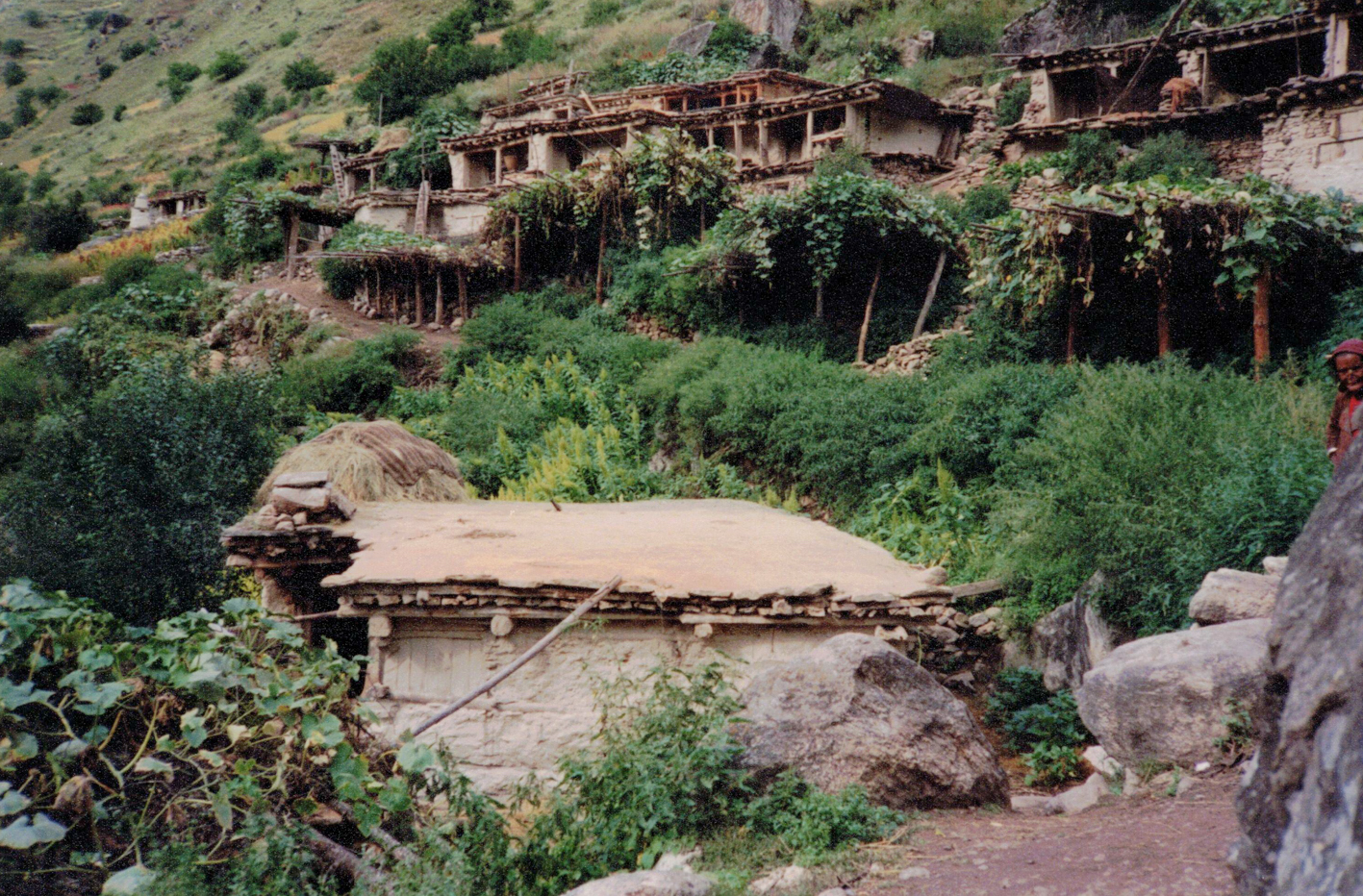
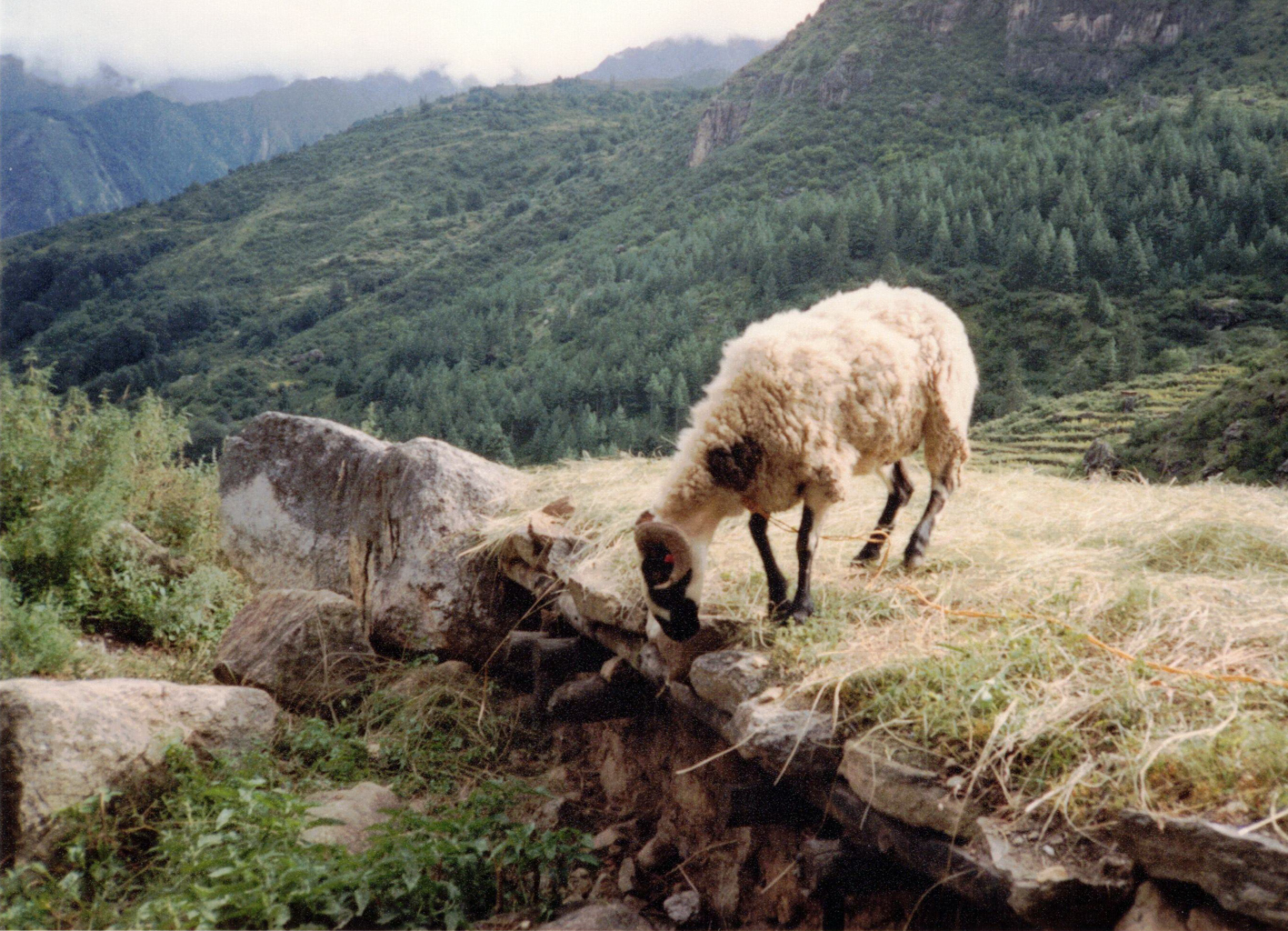
Les toits servent de pâture
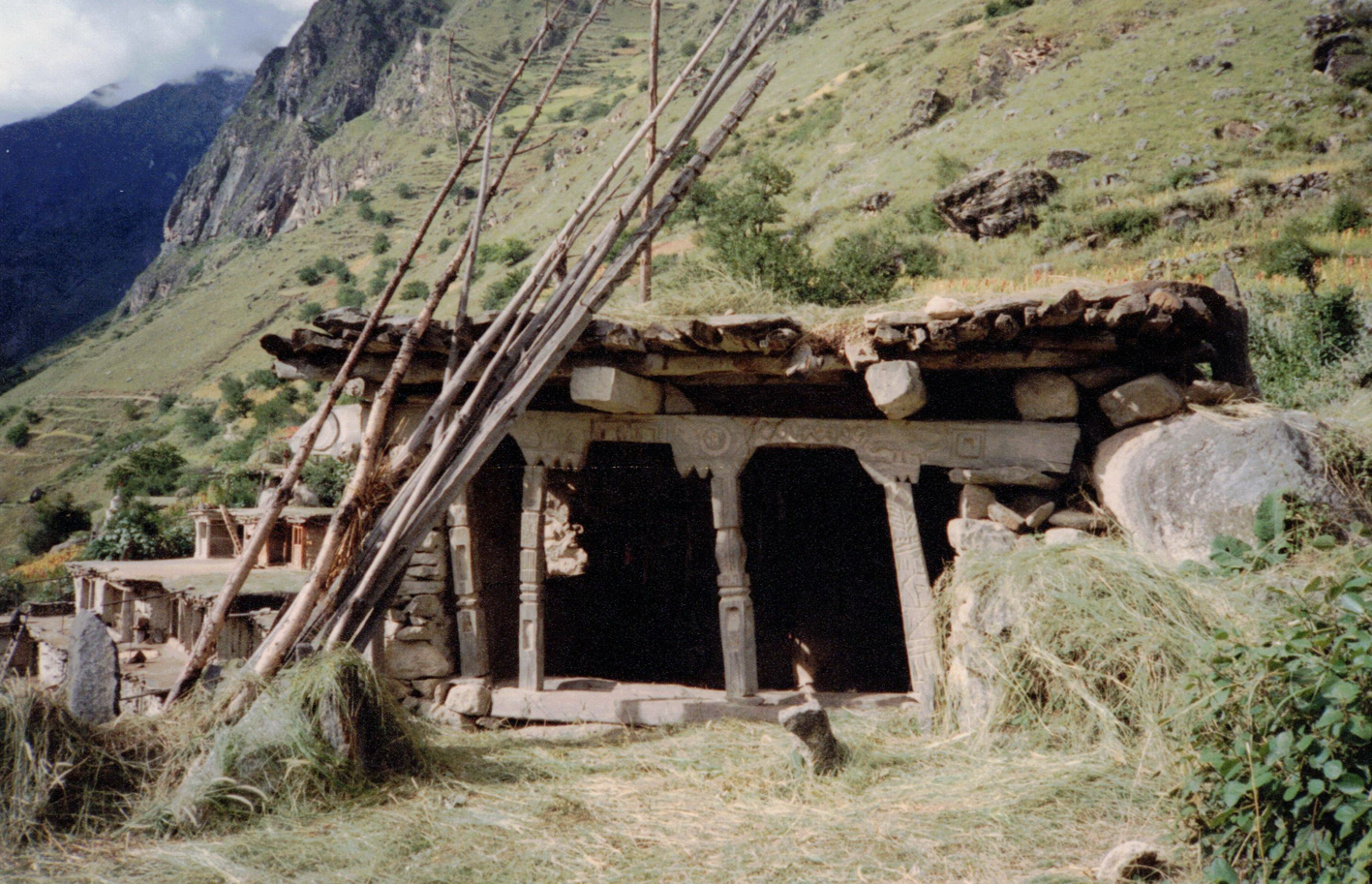
Le temple bouddhique du village
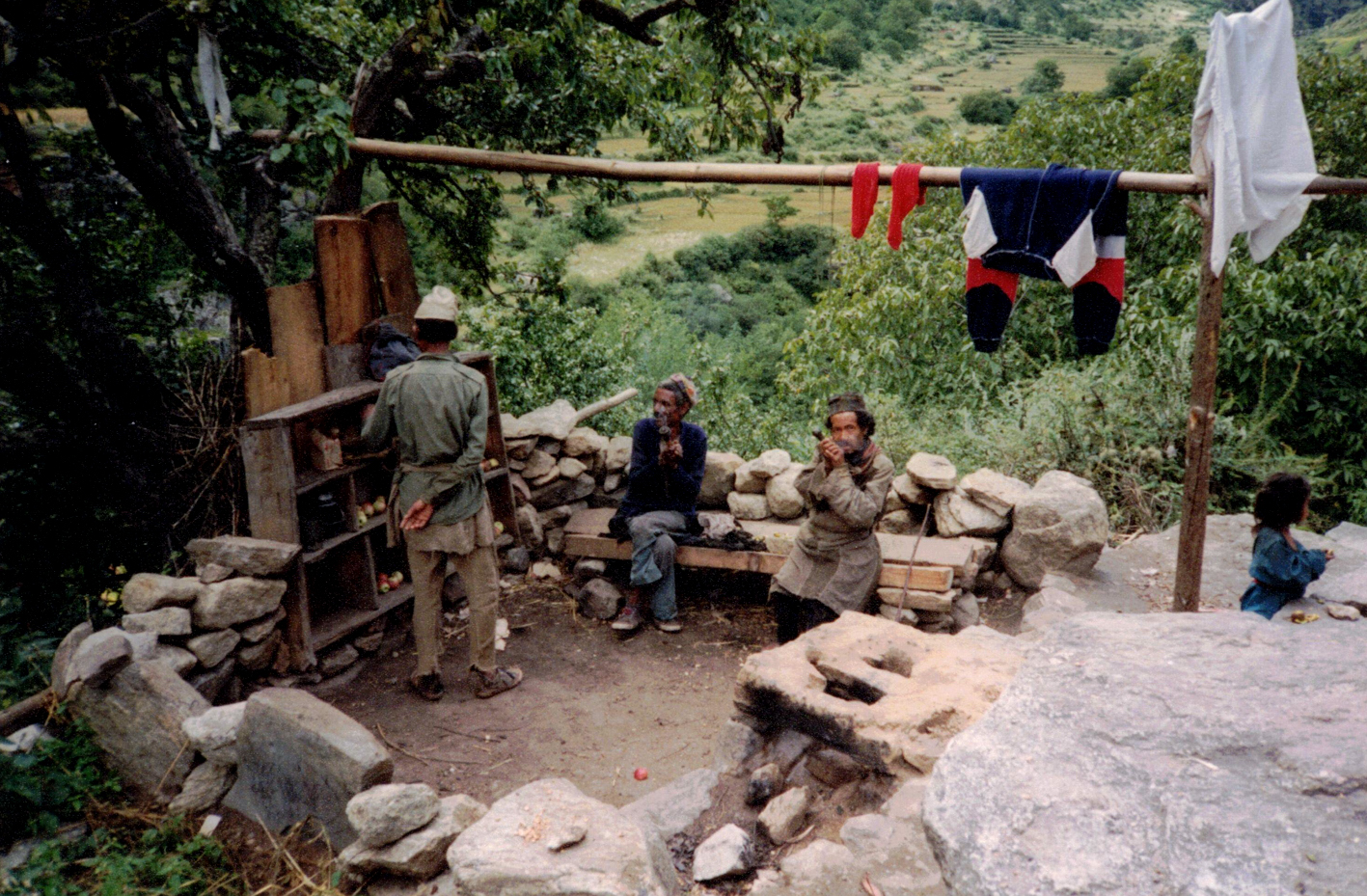
La boutique du village
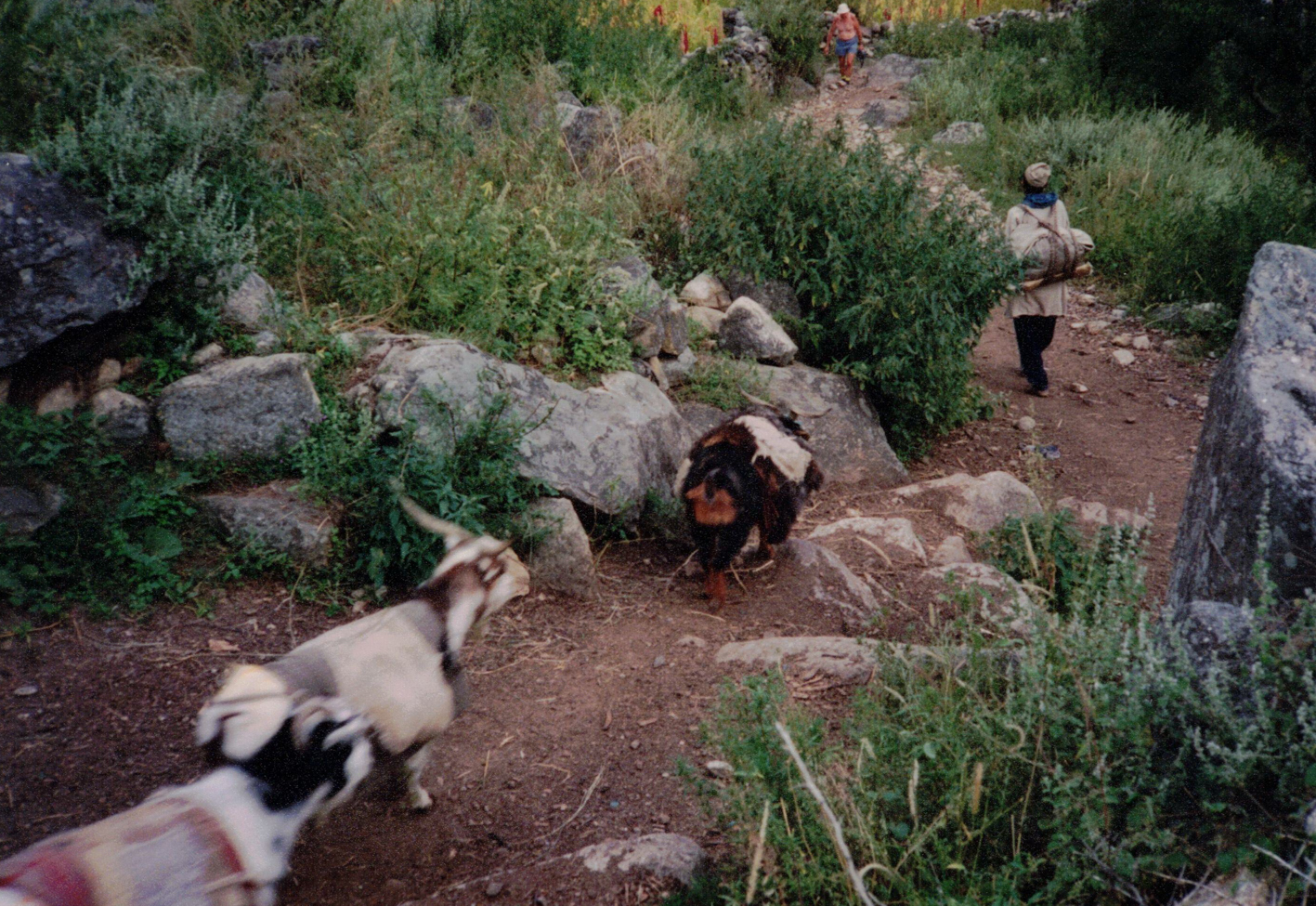
Nous croisons une caravane de chèvres qui fait la navette entre le Népal et le Tibet.
La caravane descend du Tibet avec du sel pour remonter ensuite avec le riz : un troc indispensable.
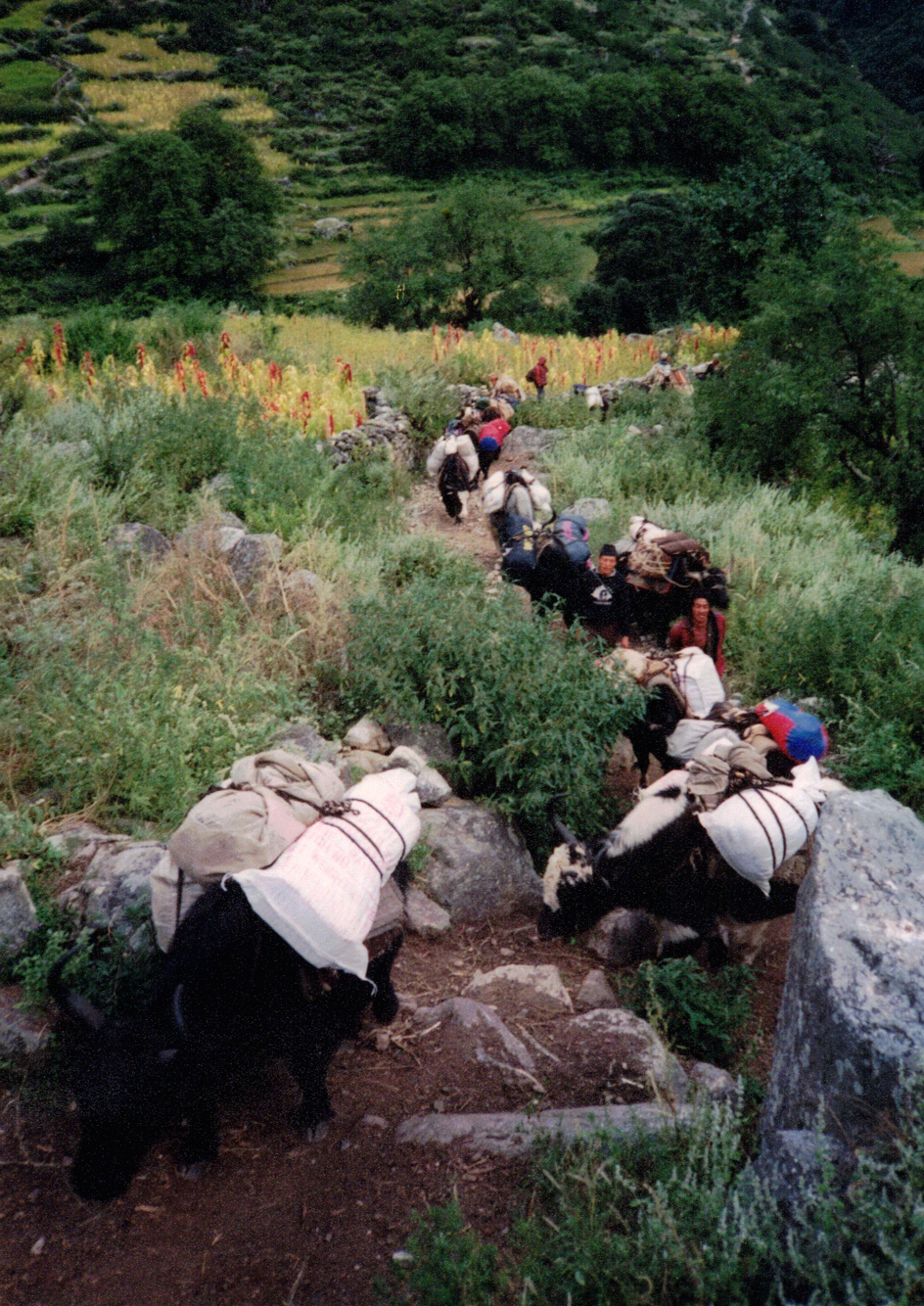
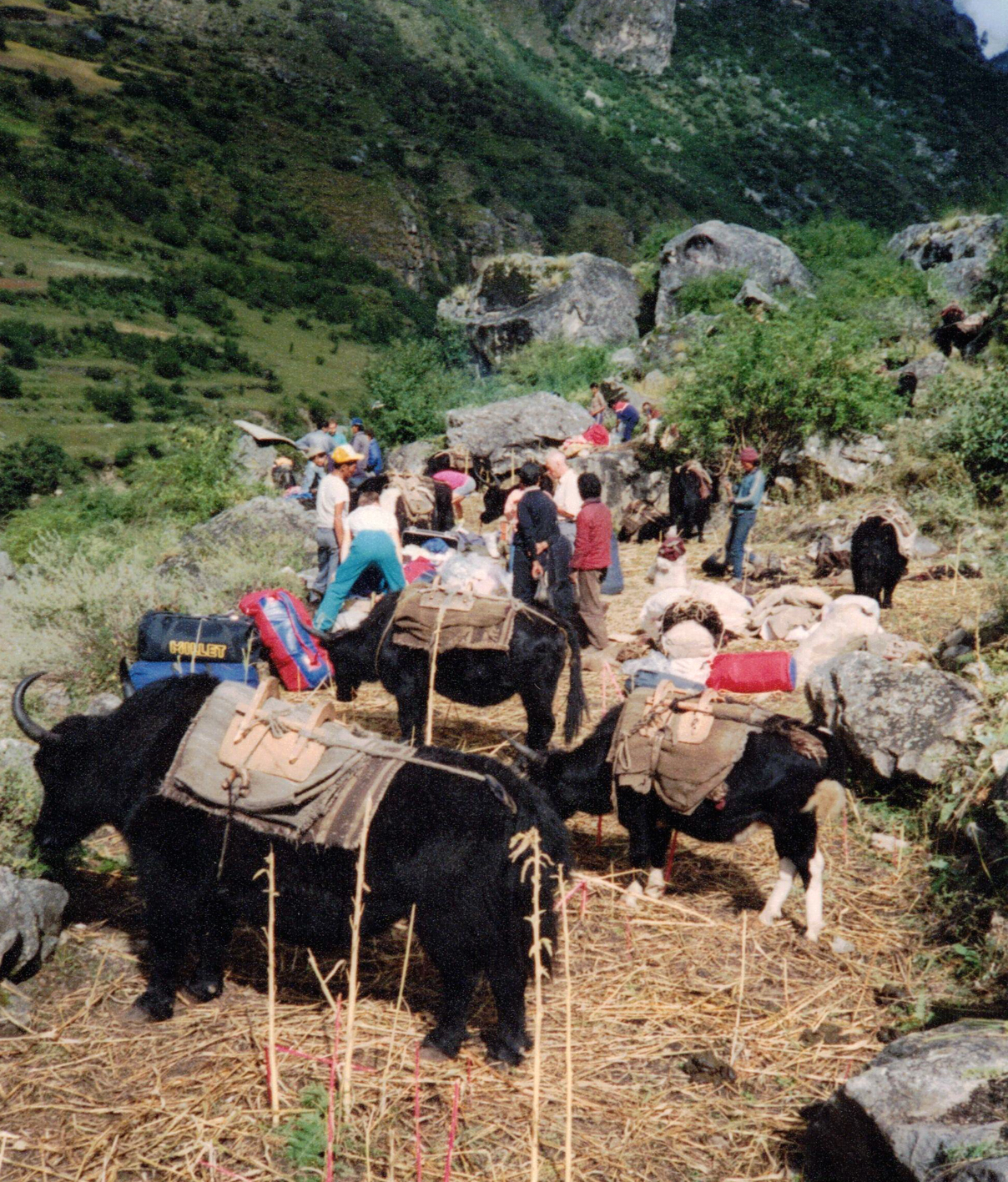
Notre caravane de yaks, elle, monte vers le prochain camp qui sera installé près de la rivière Karnali.
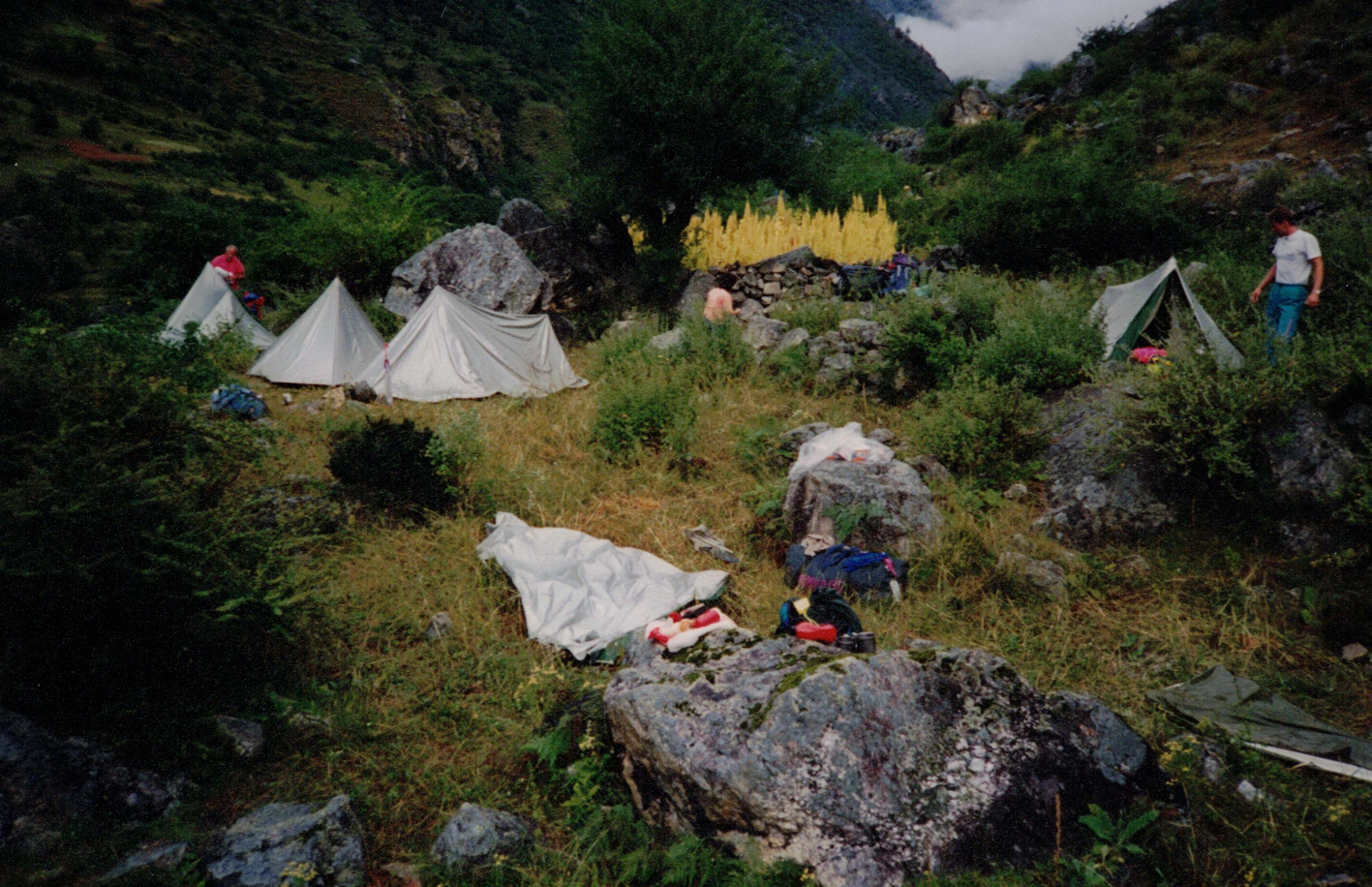
26 septembre
La veille nous avons perdu un yak.
Aussi ce jour : Jacques engueule les yakmen et leur ordonne de constituer 6 groupes de yaks marchant à distance respectable les uns des autres. Les charges transportées sur le dos des yaks souffrent moins.
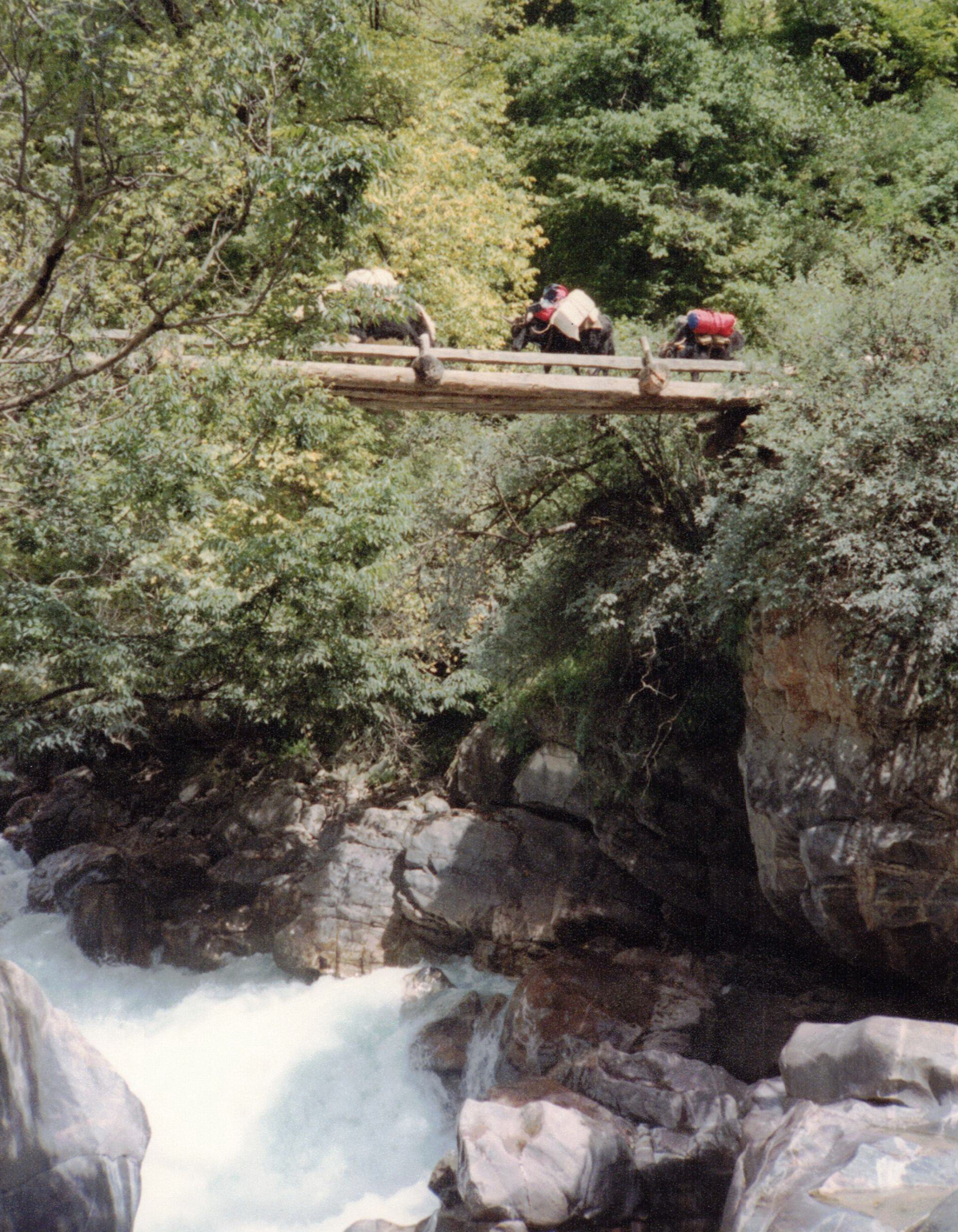
Nous regagnons la rive droite de la rivière
et montons de 500 m. environ jusqu’au village Kangalgaon.
Nous déjeunons à l’entrée de Kangalgaon entourés d’enfants.
Une fois dans le village nous sommes accueillis cordialement et invités à monter sur le toit des maisons.
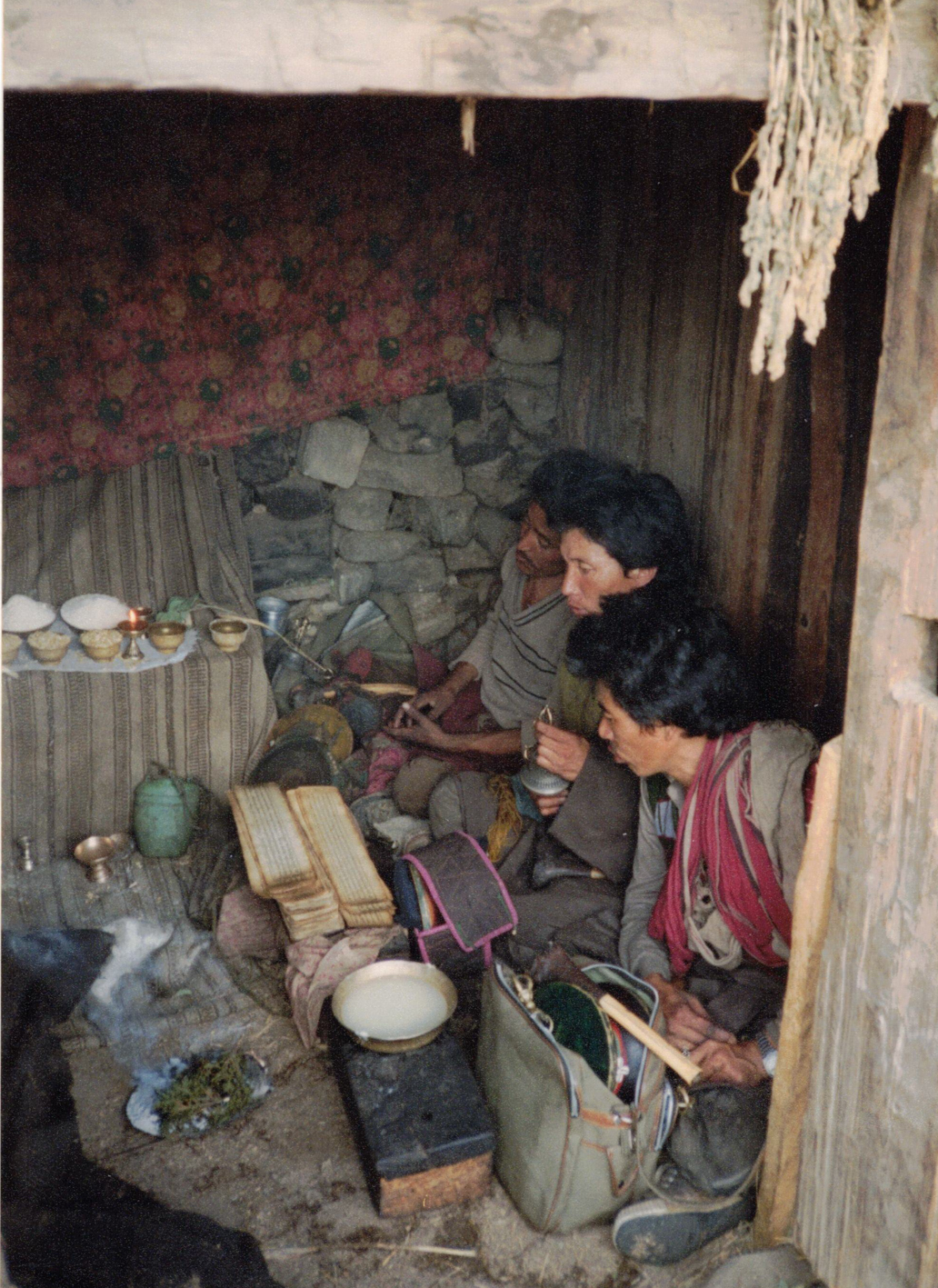
Jacques nous apprend que les gens vivant là
n’ont pas vu de Blancs depuis cinq ans.
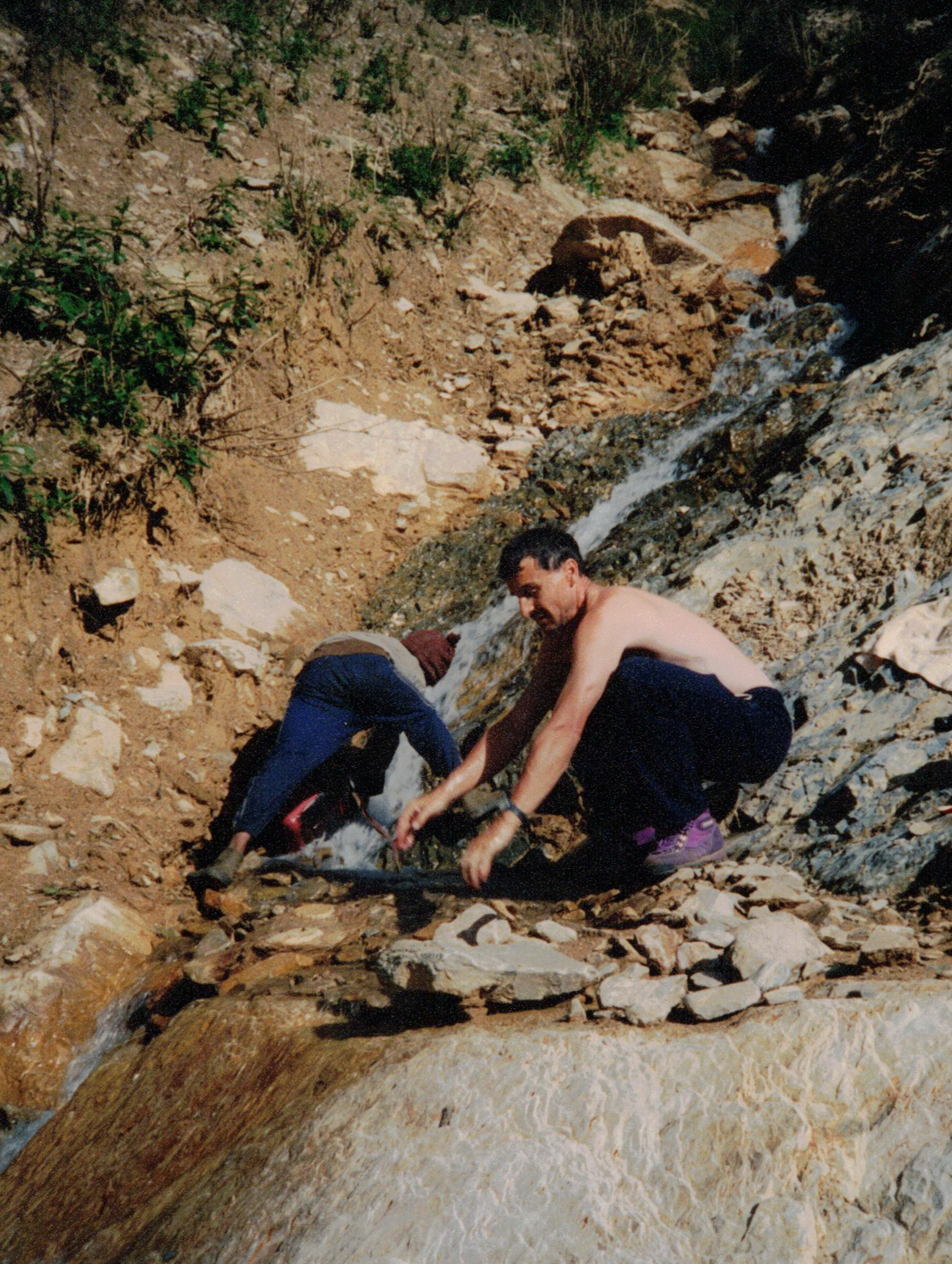
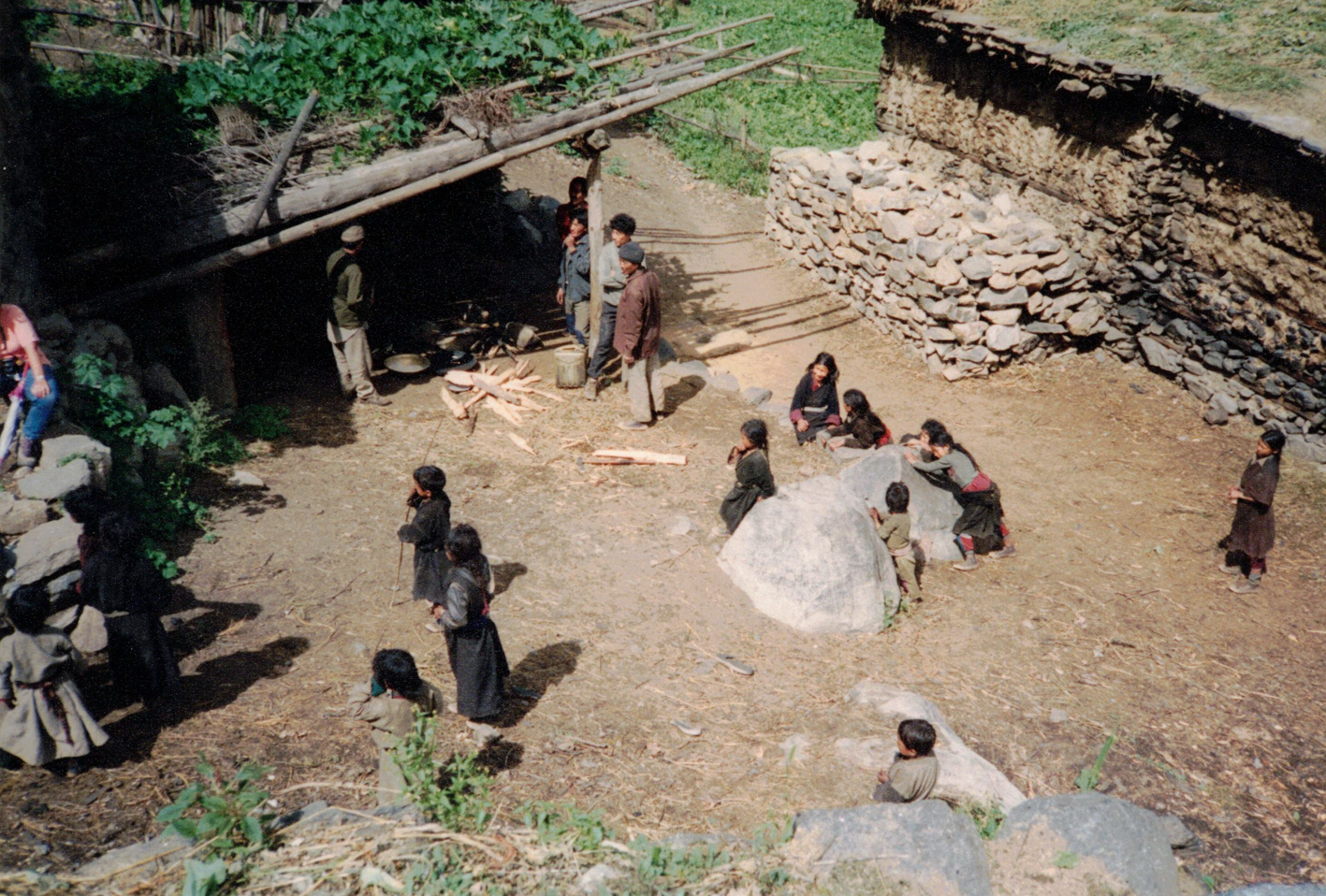
Sommes également conviés à assister à une cérémonie religieuse dans une petite pièce.
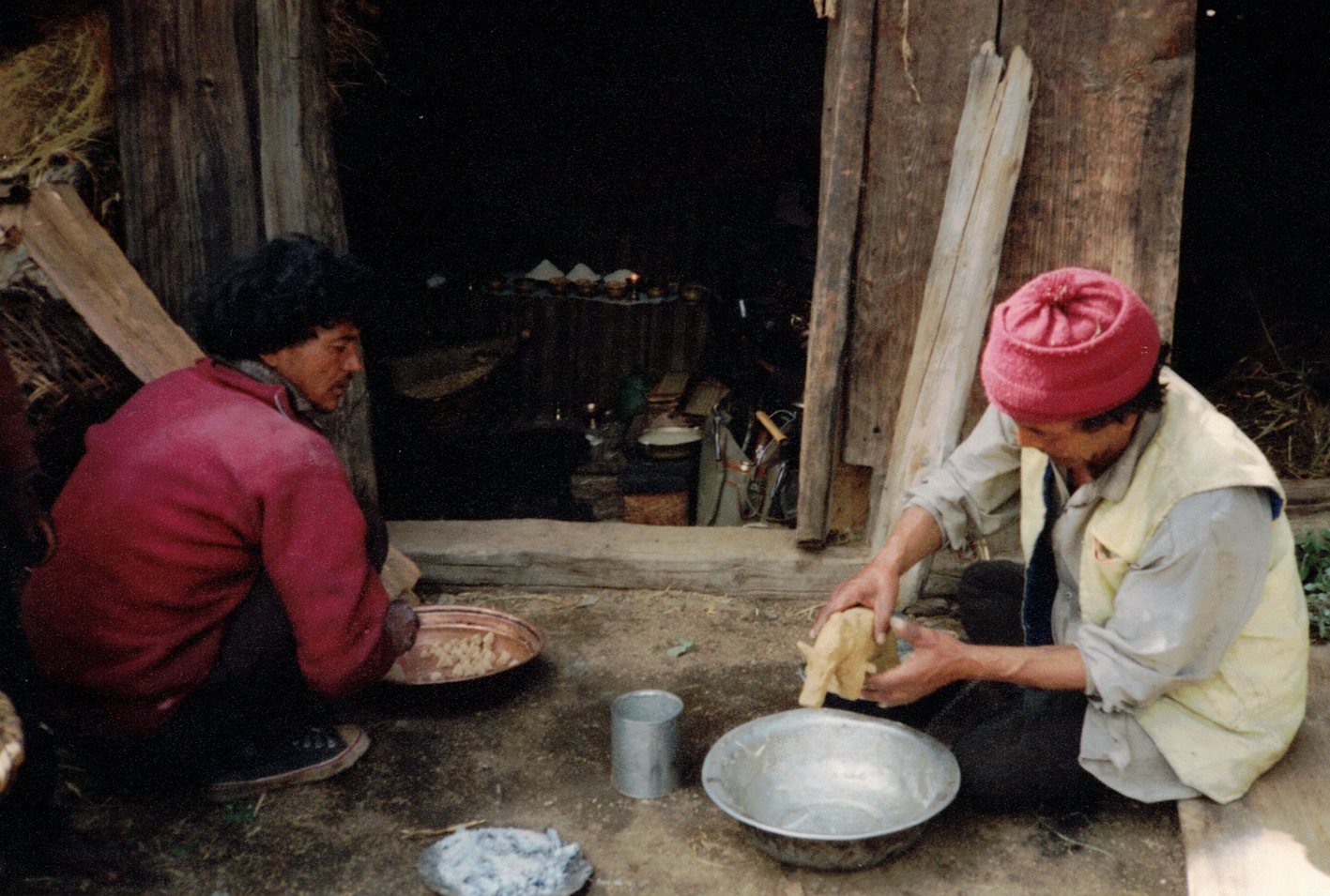
Une toilette (presque) parfaite dans un torrent
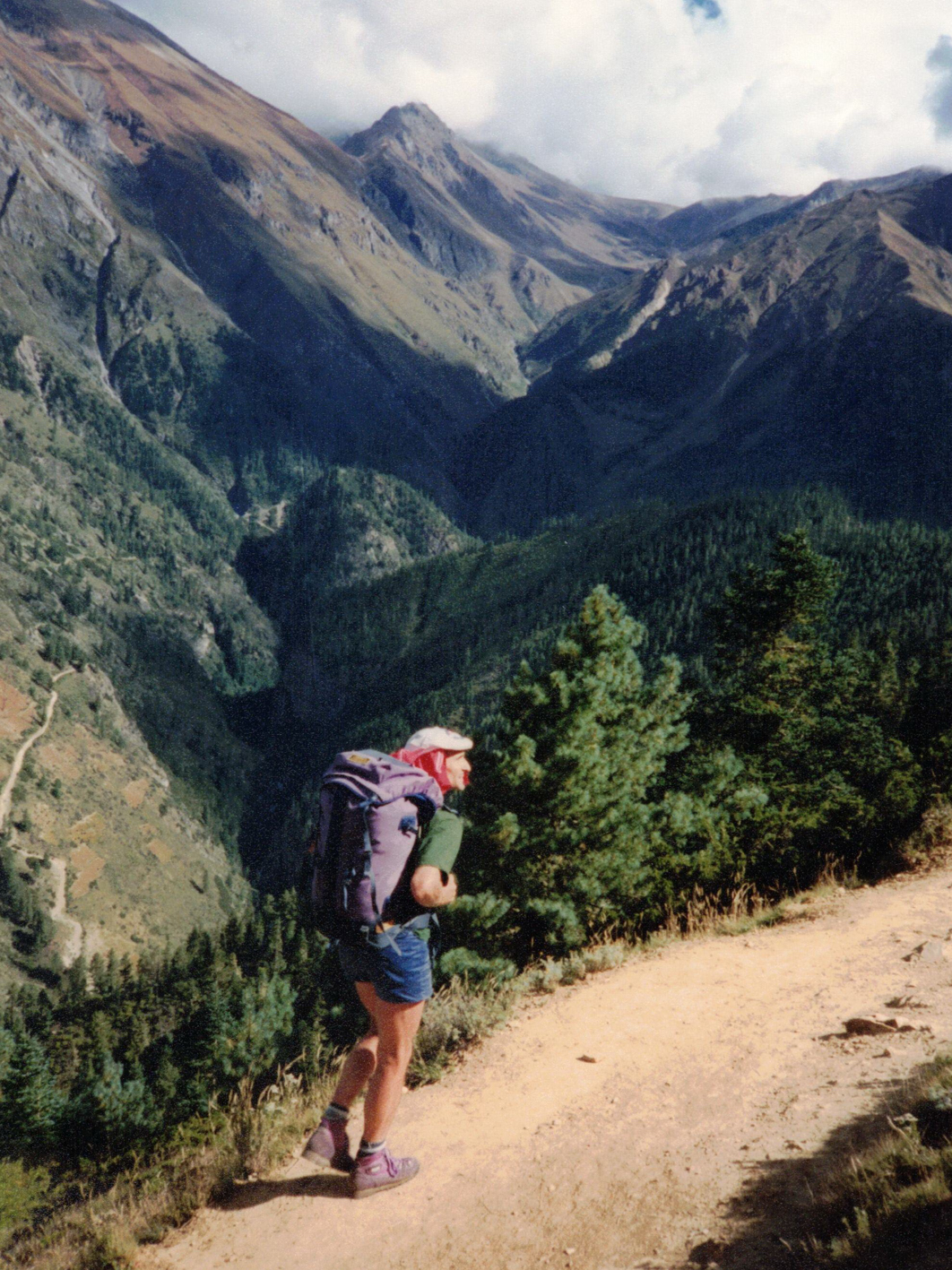
Rude montée pour atteindre notre camp de ce soir
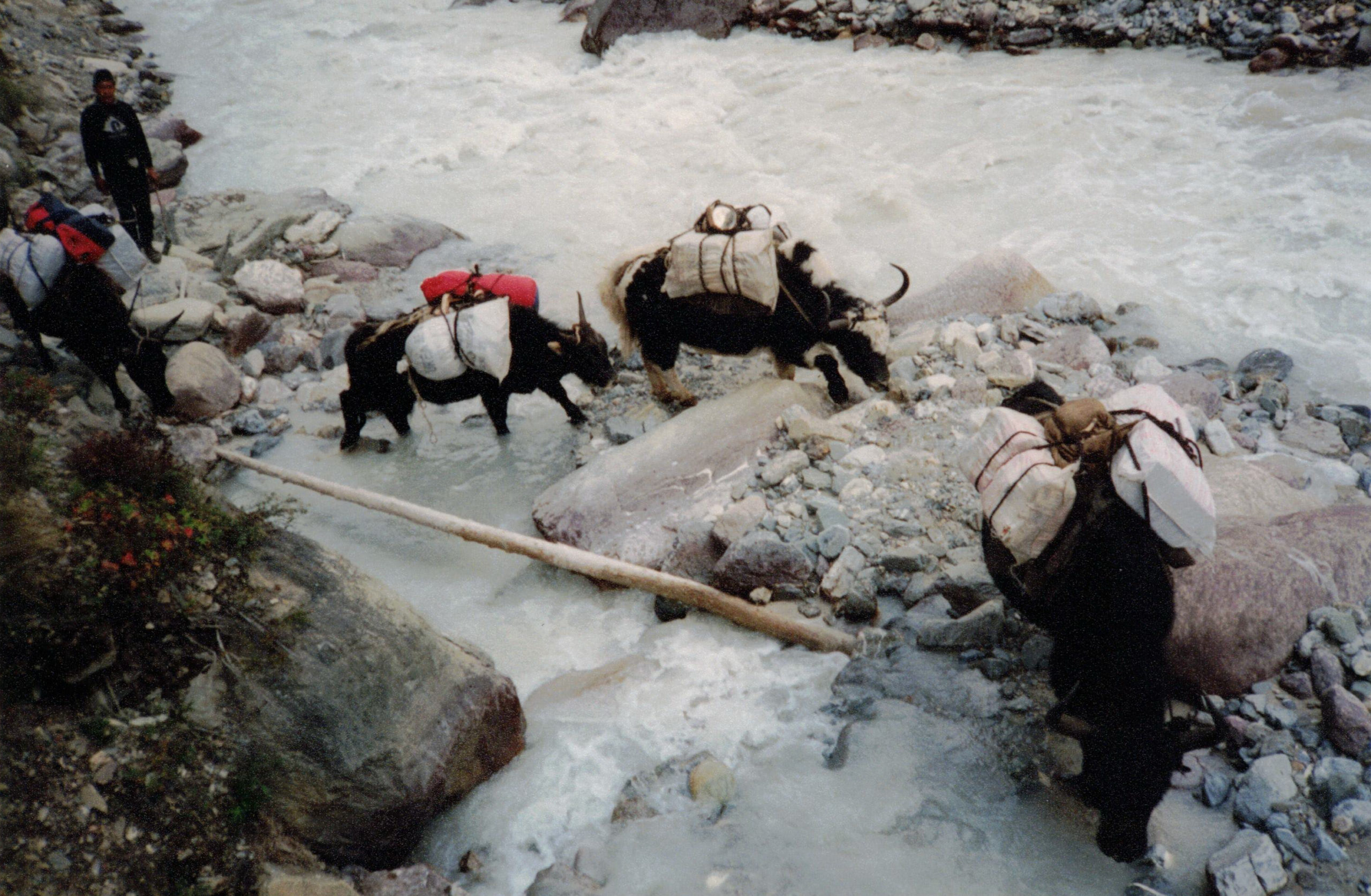
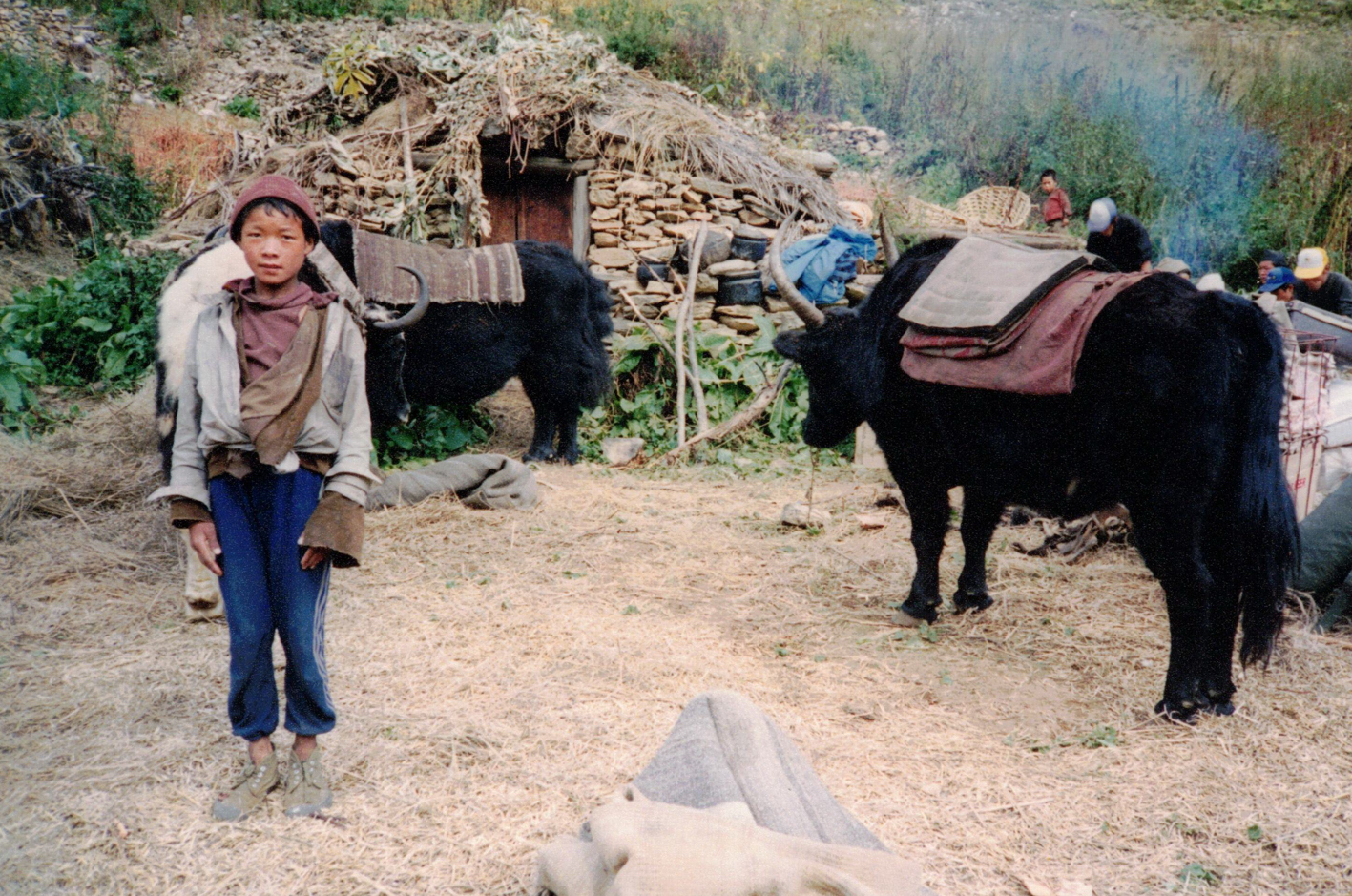
Un jeune yakman
Nous atteignons enfin Jumla,
après avoir passé le col Jumlakolagna.
Lors d’une cérémonie à laquelle nous avons été convié, les officiants jouaient de la trompette,
taillée dans un tibia humain.
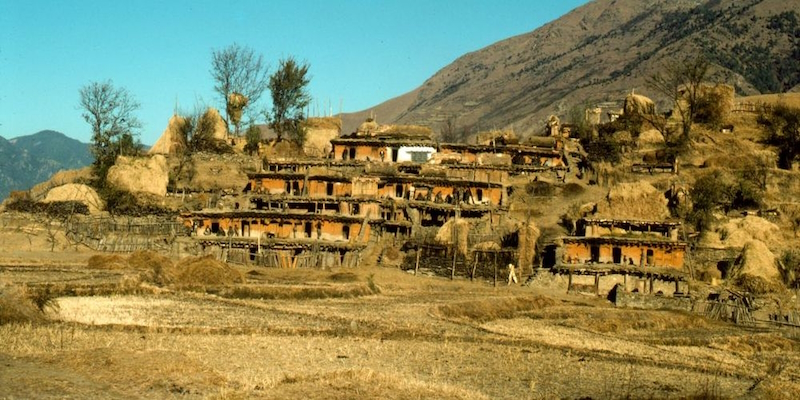
27 septembre
Le camp de Jumla a été rebaptisé « camp du serpent et des deux aigles ».
En effet, Georges s’est réveillé avec une superbe vipère dans sa tente, lovée à 30 cm de sa tête.
Cette nuit, comme les précédentes, il a plu. Ce matin il fait beau.
Elles nous offrent le Gorgour Tchaï et du petit lait. Nous leur donnons des piments rouges en échange.
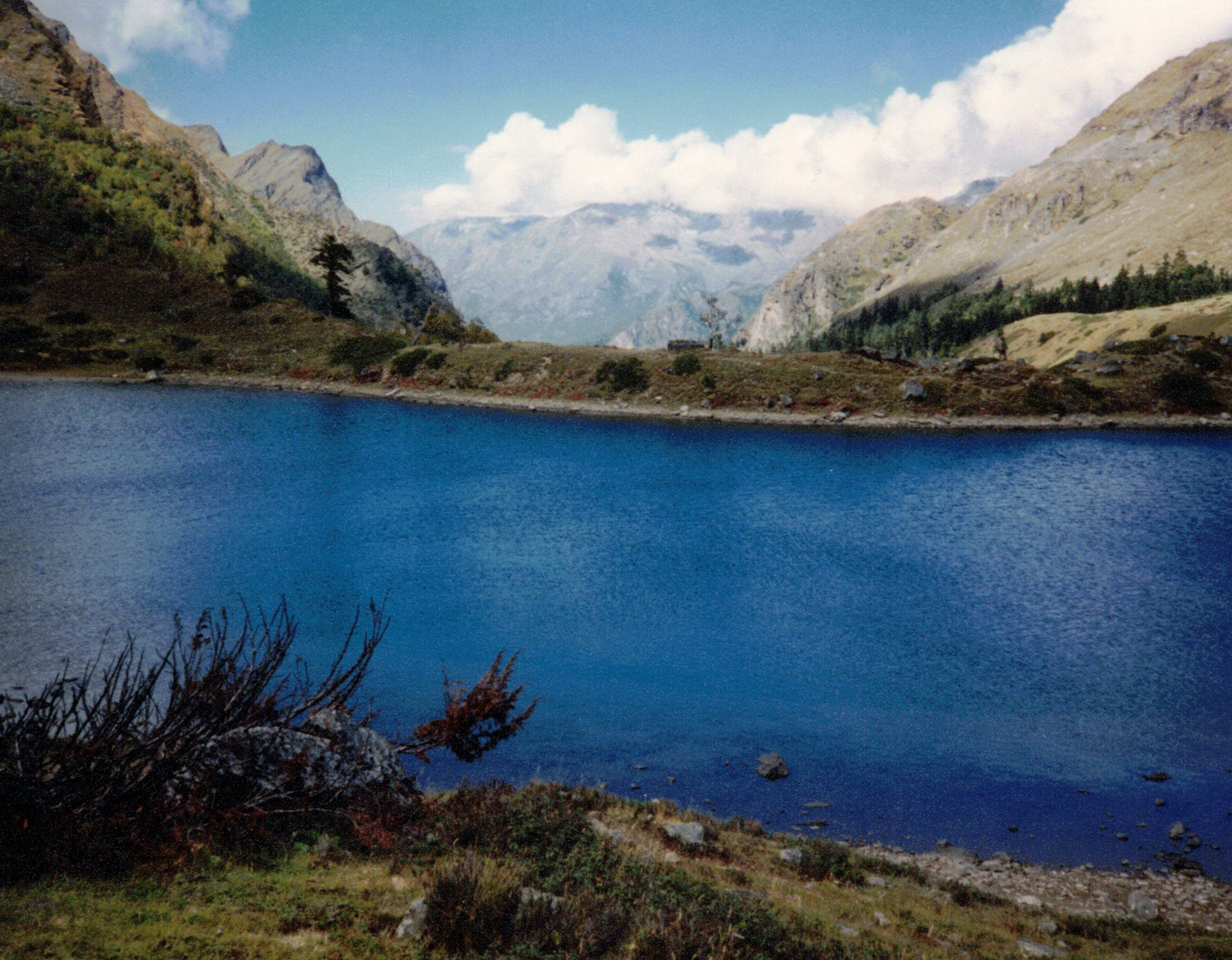
Repas et ablutions
au bord d’un charmant lac.
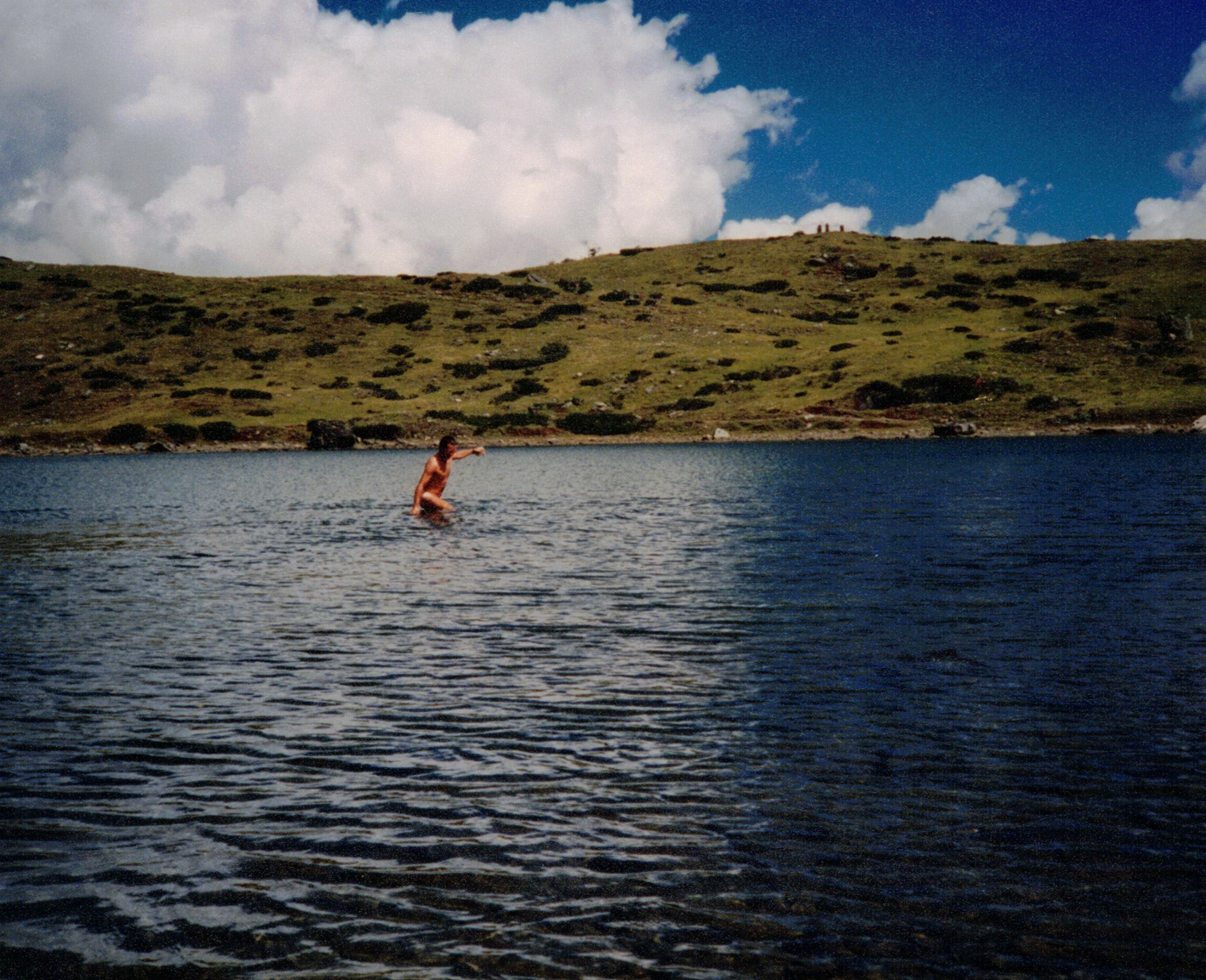
La montée au col Chhotelagna est long. Nous sommes, Geneviève et moi, distancés. Je suis les traces et me repère aux jumelles sur Georges qui apparaît par moment au loin.
Arrivés au col nous sommes à 4690 m. La descente est vertigineuse. Nous arrivons au camp à la nuit tombante. Shanka Lama nous aide à tailler les terrasses pour nos tentes.
28 septembre
Le matin je découvre que le flacon de shampoing s’est ouvert dans ma trousse de toilette…. Tout a été nettoyé, sauf mes cheveux.
Il fait beau. Rude descente vers le pont qui traverse la Kairang Khola. Nous passons près de Chala et faisons une longue traversée jusqu’à Tothorya.
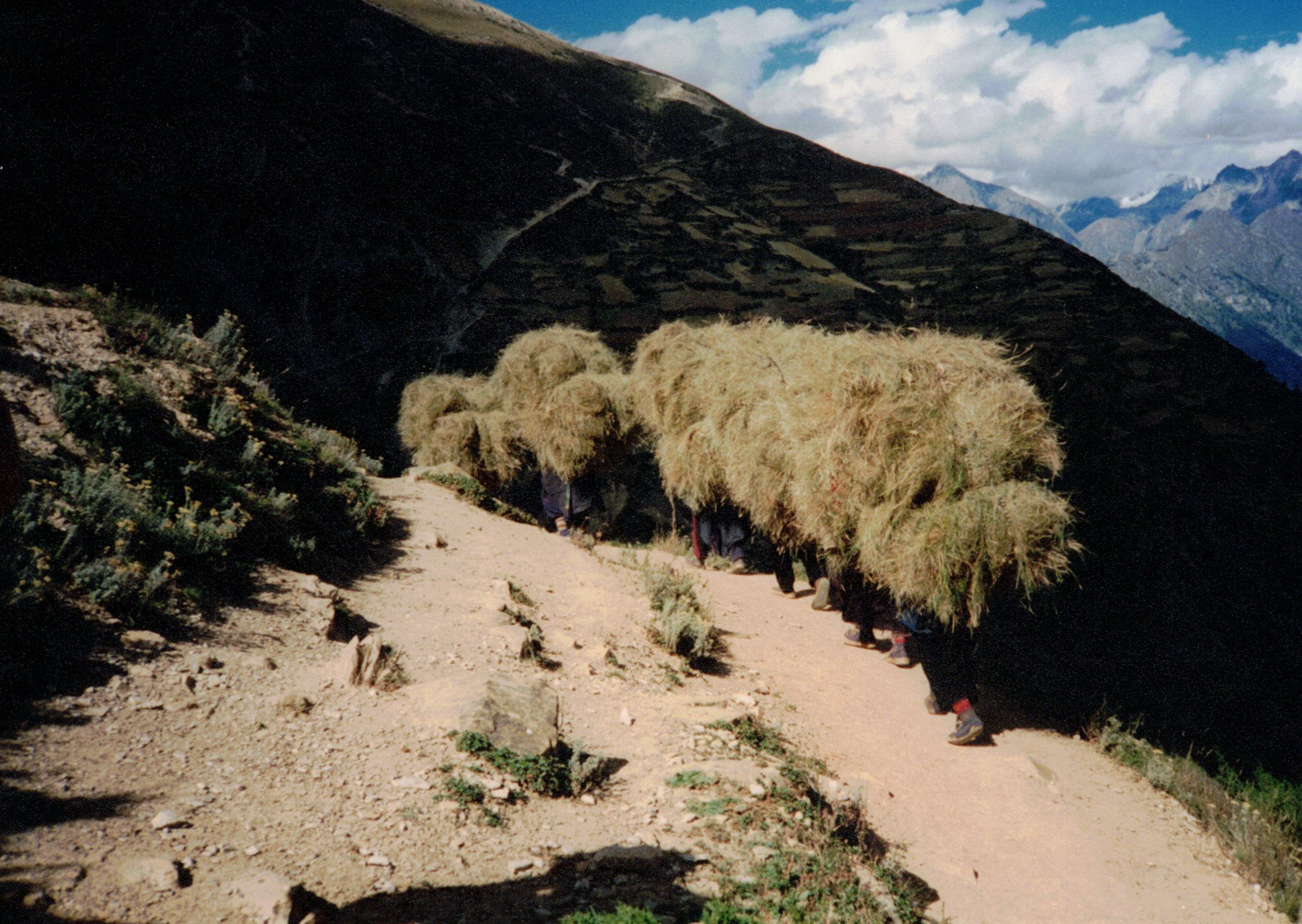
Nous croisons des porteuses de foin…
…et deux femmes qui égrainent du sarrasin avec les pieds.
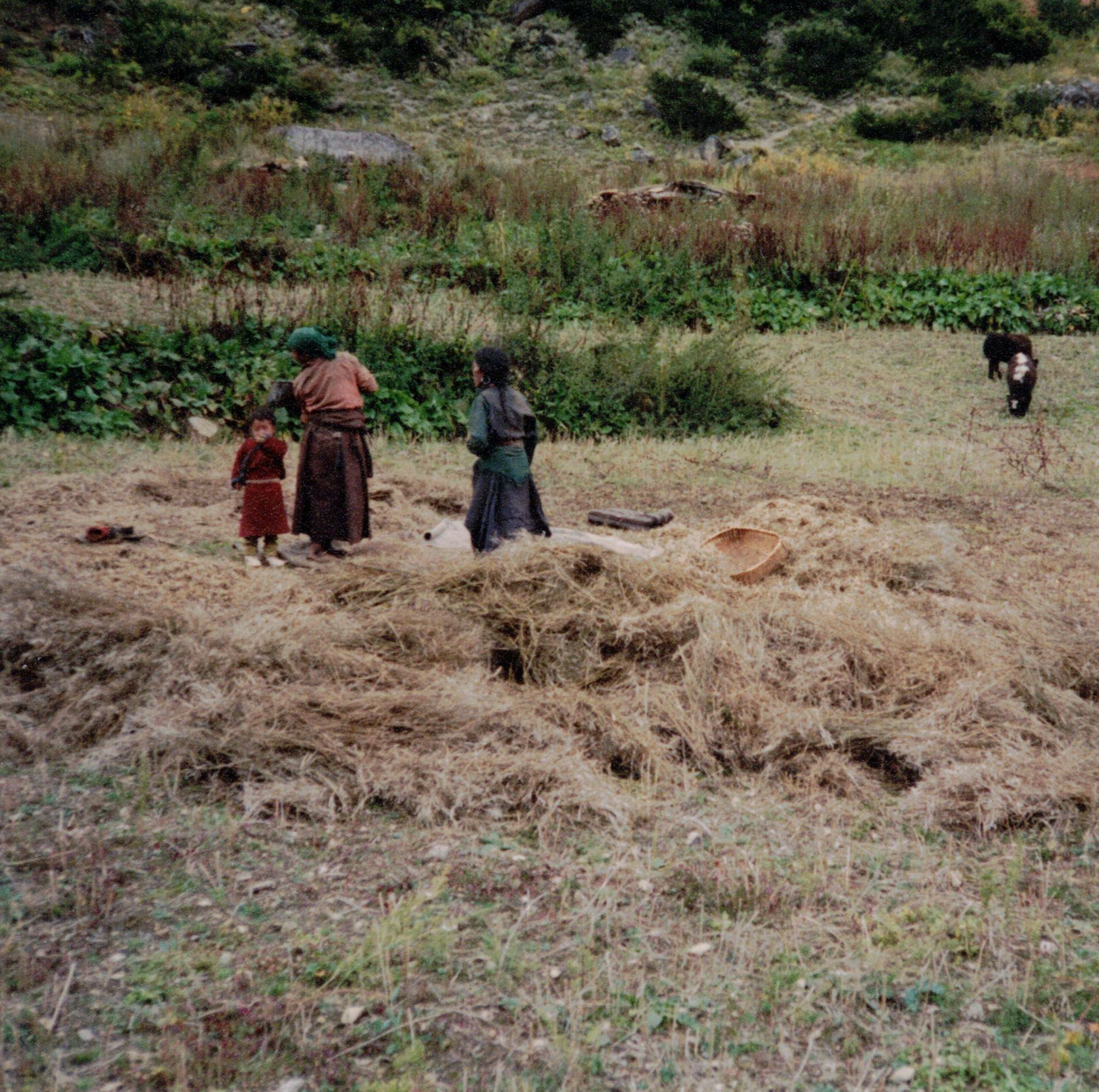
Le yak perdu est revenu… mais sans sa charge !
29 septembre
L’officier de liaison jeûne jusqu’à 10h15 et organise ensuite une petite cérémonie pour fêter le Dashain. Le Dashain est le plus grand festival célébré au Népal. Cette fête dure environ 15 jours.
Après la cérémonie, nous nous remettons en route pour la dernière étape, celle qui va nous mener au camp de base. La progression devient plus délicate, surtout pour les yaks. A un endroit les sherpas doivent tailler une sente d’une trentaine de centimètres dans le flanc de la moraine. Nous pique-niquons au bord d’un torrent sous les bouleaux. Le camp de base est attient vers 15h30.
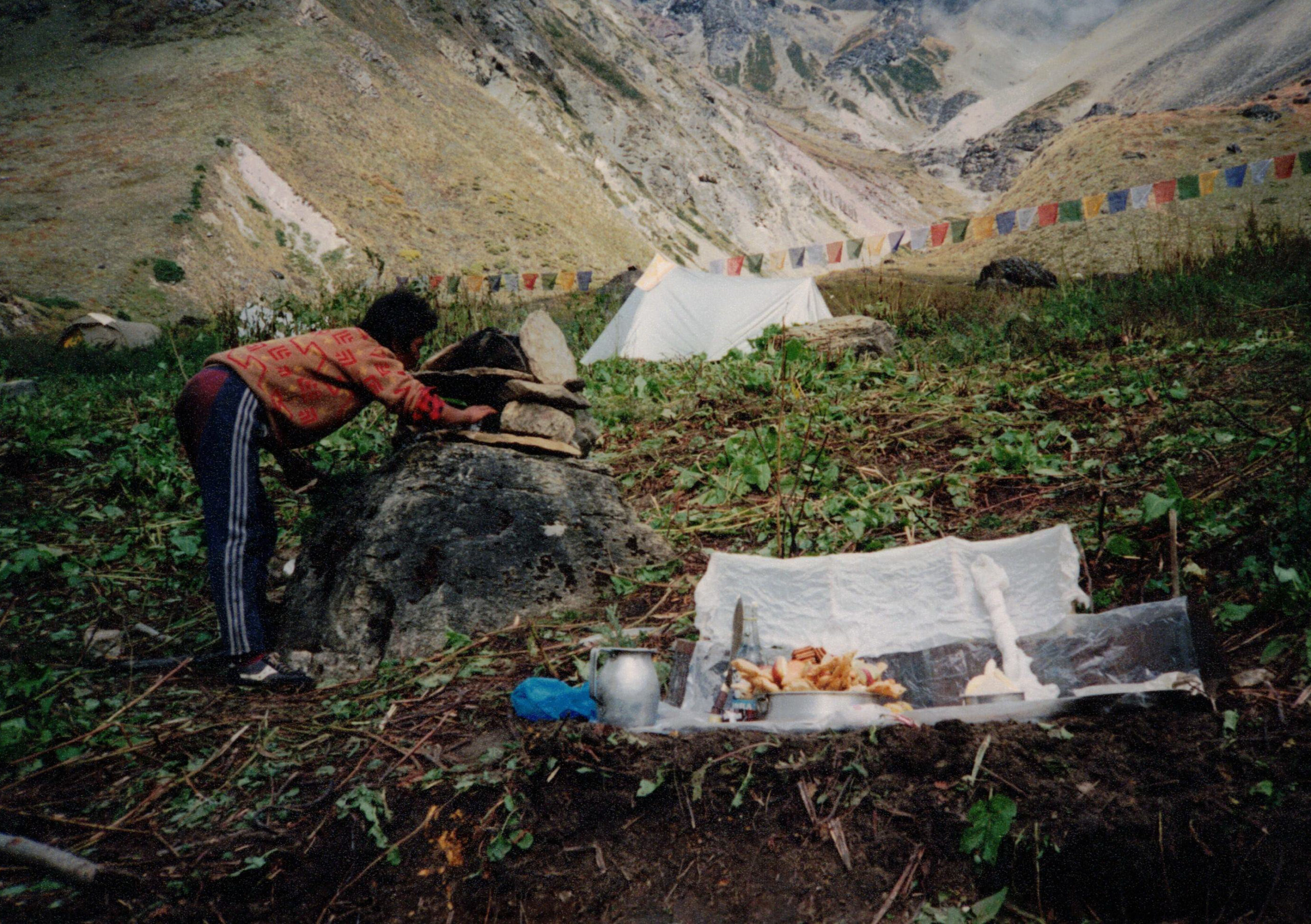
Chacun prépare un emplacement pour sa tente.
Je taille une plate-forme à l’aide du piolet
et l’étaye avec quelques grosses pierres.
30 septembre
La diane est à 8h. Le soleil réchauffe déjà le camp. Les yakmen sont payés et nous leur donnons un paquet de cigarettes à chacun. Ils quittent le camp avec toutes les bêtes et nous nous sentons tout à coup isolés au milieu de l’Himalaya. Chacun vaque à ses occupation : lessives, lettres, aménagements…
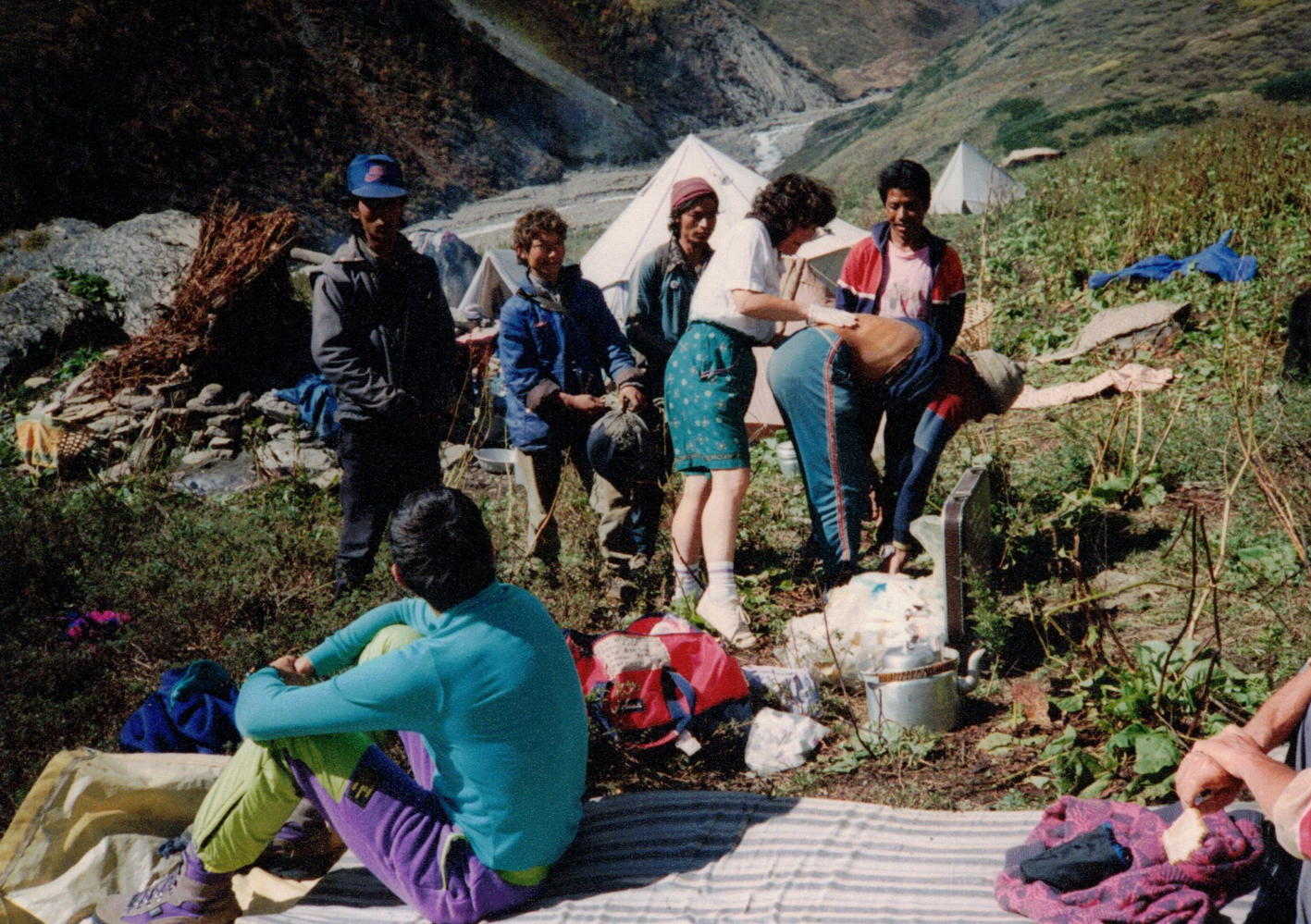
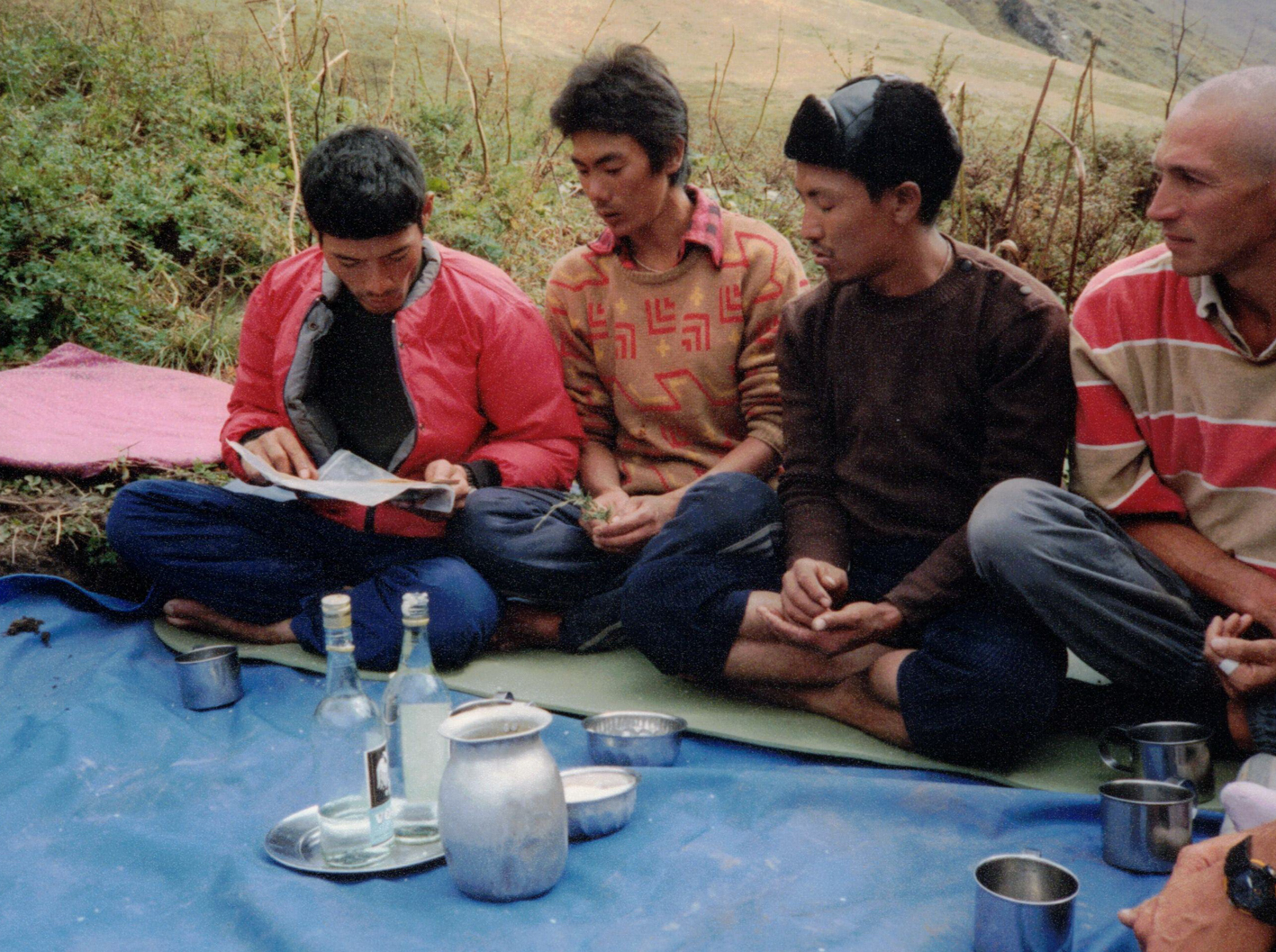
Geneviève l’infirmière prodigue quelques soins.
Je suis moi-même soigné pour une petite infection à l’index gauche.
Le camp de base (4150 m) et ascension
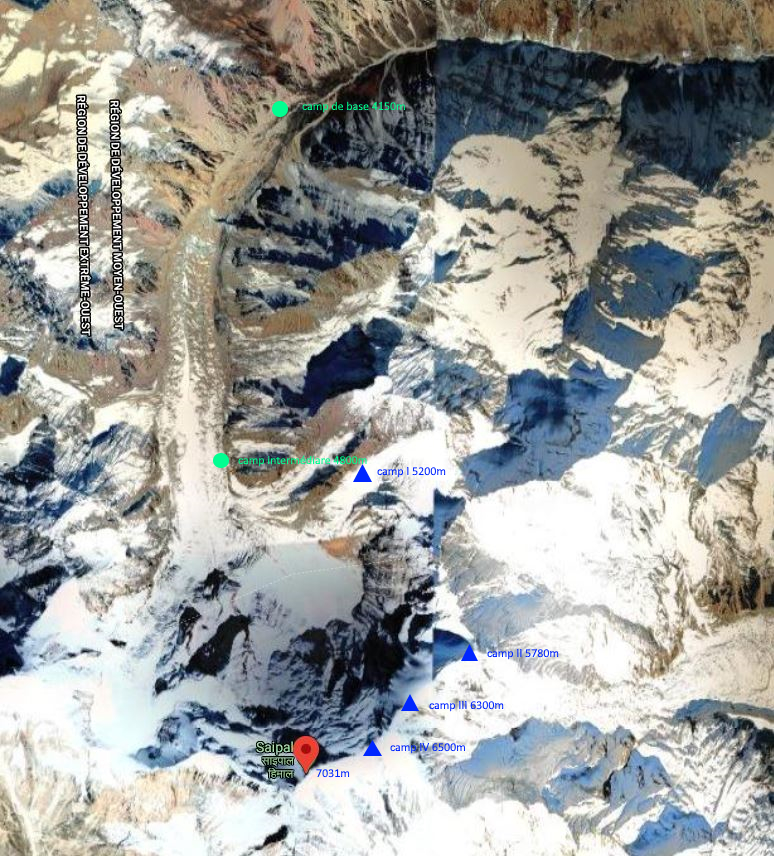
1er octobre
A 7h30 un sherpa nous apporte une tasse de thé sous la tente. Une agréable tradition que j’ai appréciée lors de toutes mes expéditions ou treks au Népal. Copieux petit-déjeuner sous la tente-mess : omelettes, galettes Paratha et tsampa (farine grillée), accompagnées de thé.
A 10h, les Népalais organisent une cérémonie pour conjurer le sort et amadouer les dieux de la montagne (Himalaya = montagne des dieux). Ils dressent un petit autel et tendent au-dessus du camp des petits carrés de tissus, de 5 couleurs différentes (représentant les 5 éléments). Ce sont les drapeaux de prière.
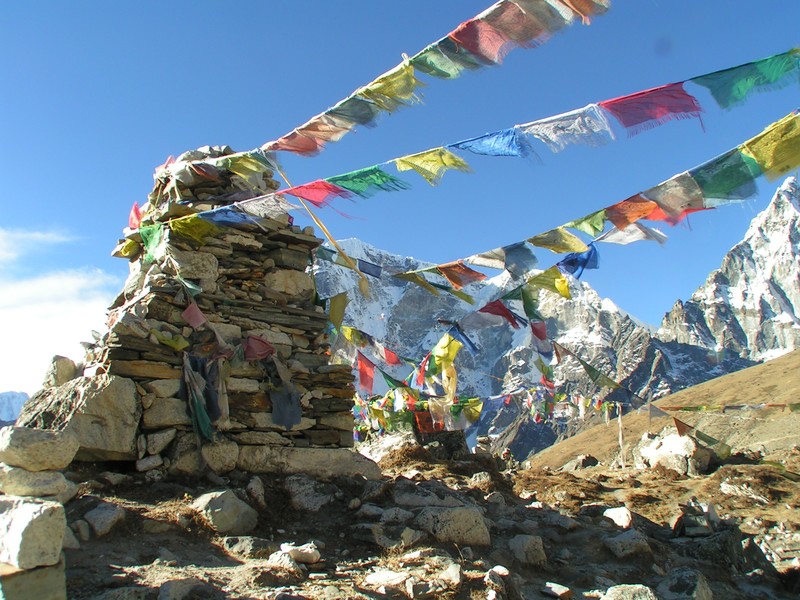
L’après-midi est consacré à la préparation du matériel d’altitude et à la construction des deux piliers du pont par assemblage de gros blocs de pierre.
Le lendemain, ces piliers seront reliés par une poutre provenant de la cuisine.
Les drapeaux de prière sont de petites pièces de tissu rectangulaires colorées et imprimées, suspendues au passages des cols, au sommet des montagnes, au croisement des chemins, sur le toit des maisons, sur les ponts, à l’extérieur des temples. Selon les adeptes du bouddhisme tibétain le vent qui souffle, caressant au passage les formules sacrées imprimées, les disperse dans l’espace et les transmet ainsi aux dieux et à tous ceux qu’il touche dans sa course.
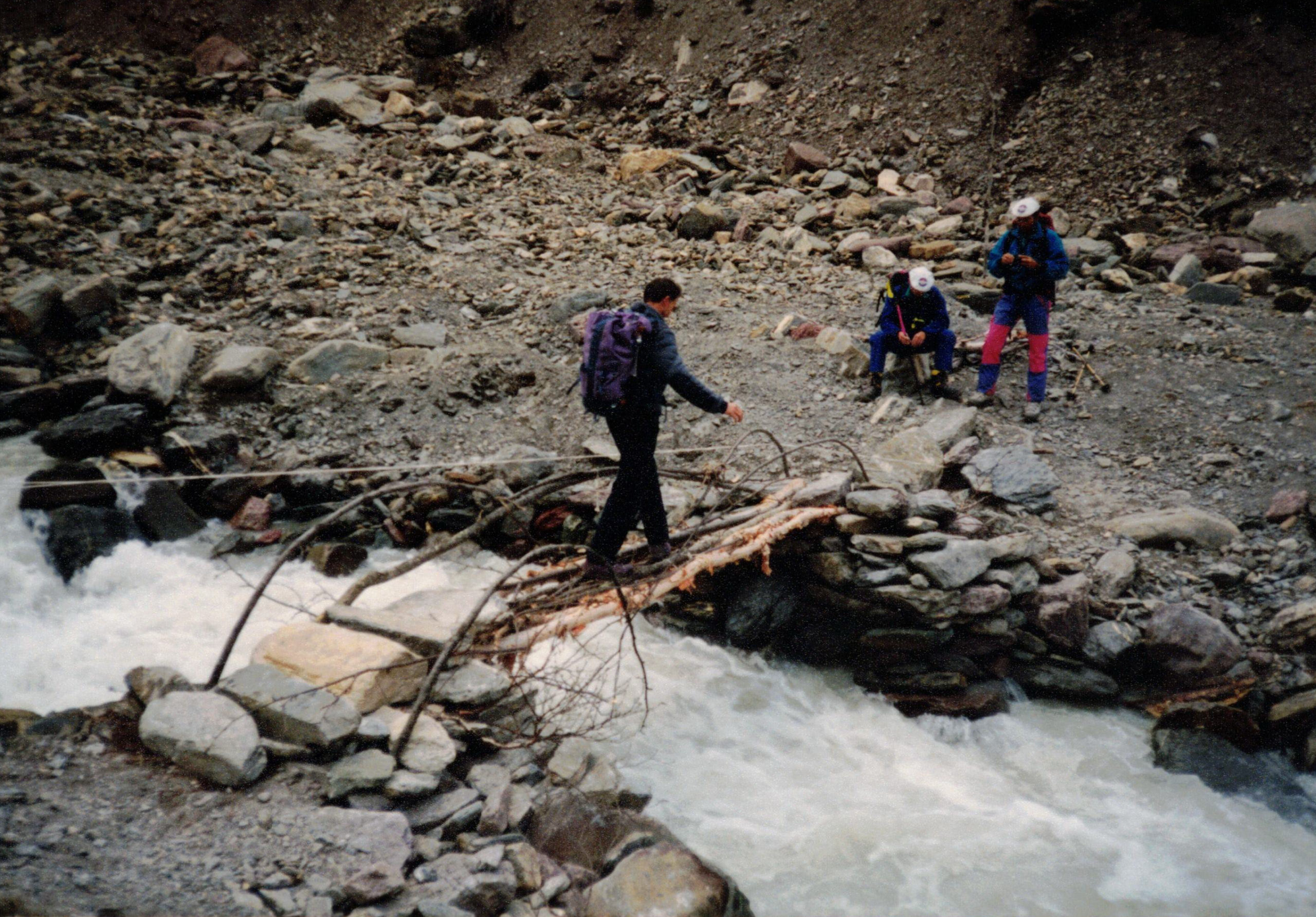
2 octobre
Dans la nuit la température a baissé et la neige est apparue vers 4500 m.
Nous commençons à monter du matériel au camp intermédiaire (4800 m). Tentes, nourriture, bois pour la cuisine ainsi que le matériel technique nécessaire pour l’ascension du Saipal.
En chemin nous construisons des cairns sur le pierrier et la moraine pour assurer le cheminement en cas de brouillard.
Longue montée avec un sac à dos particulièrement lourd. Les chevilles souffrent. La fatigue et le froid perturbent mes fonctions digestives. je suis malade et la nuit est agitée pour cause de vomissements et de diarrhées.
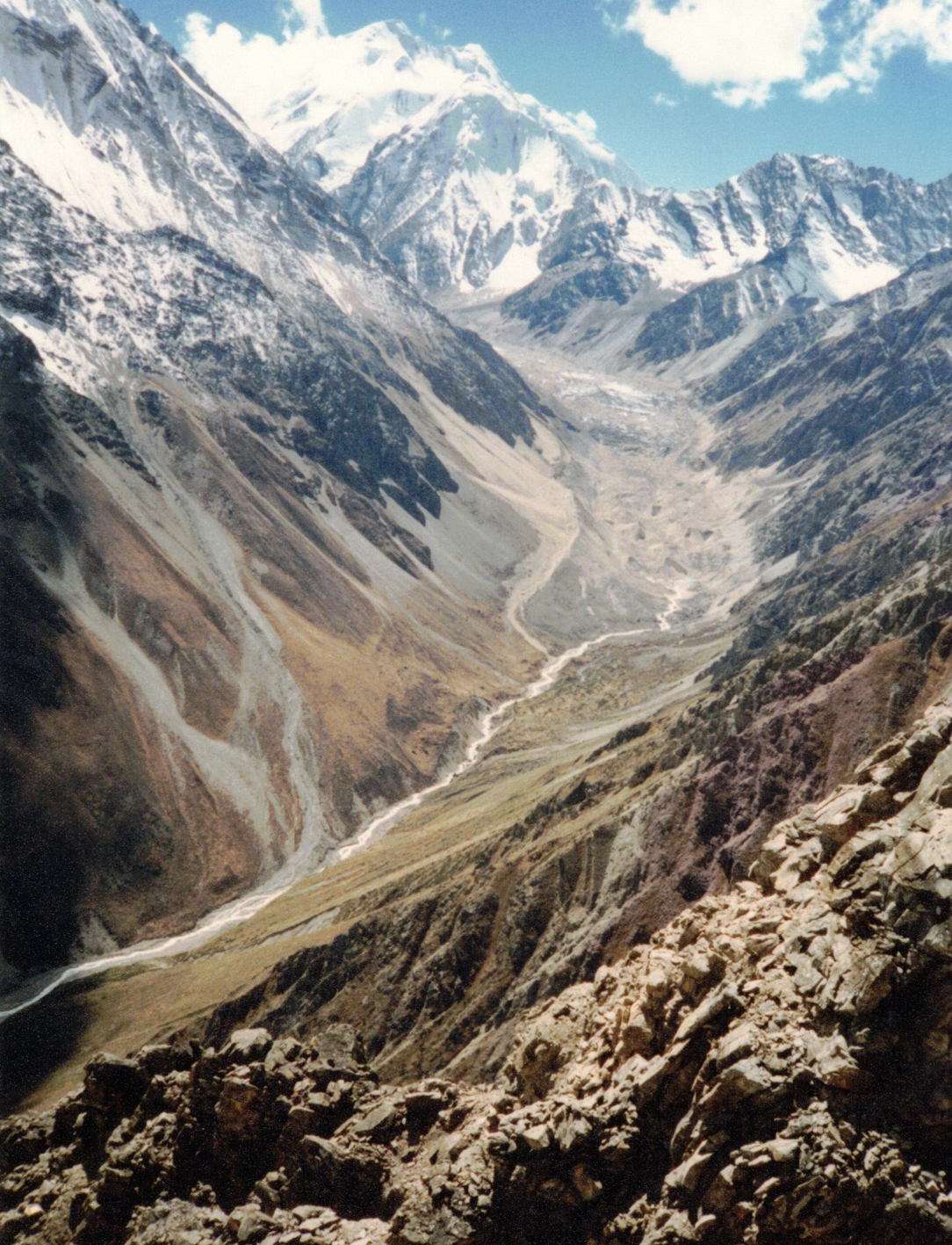
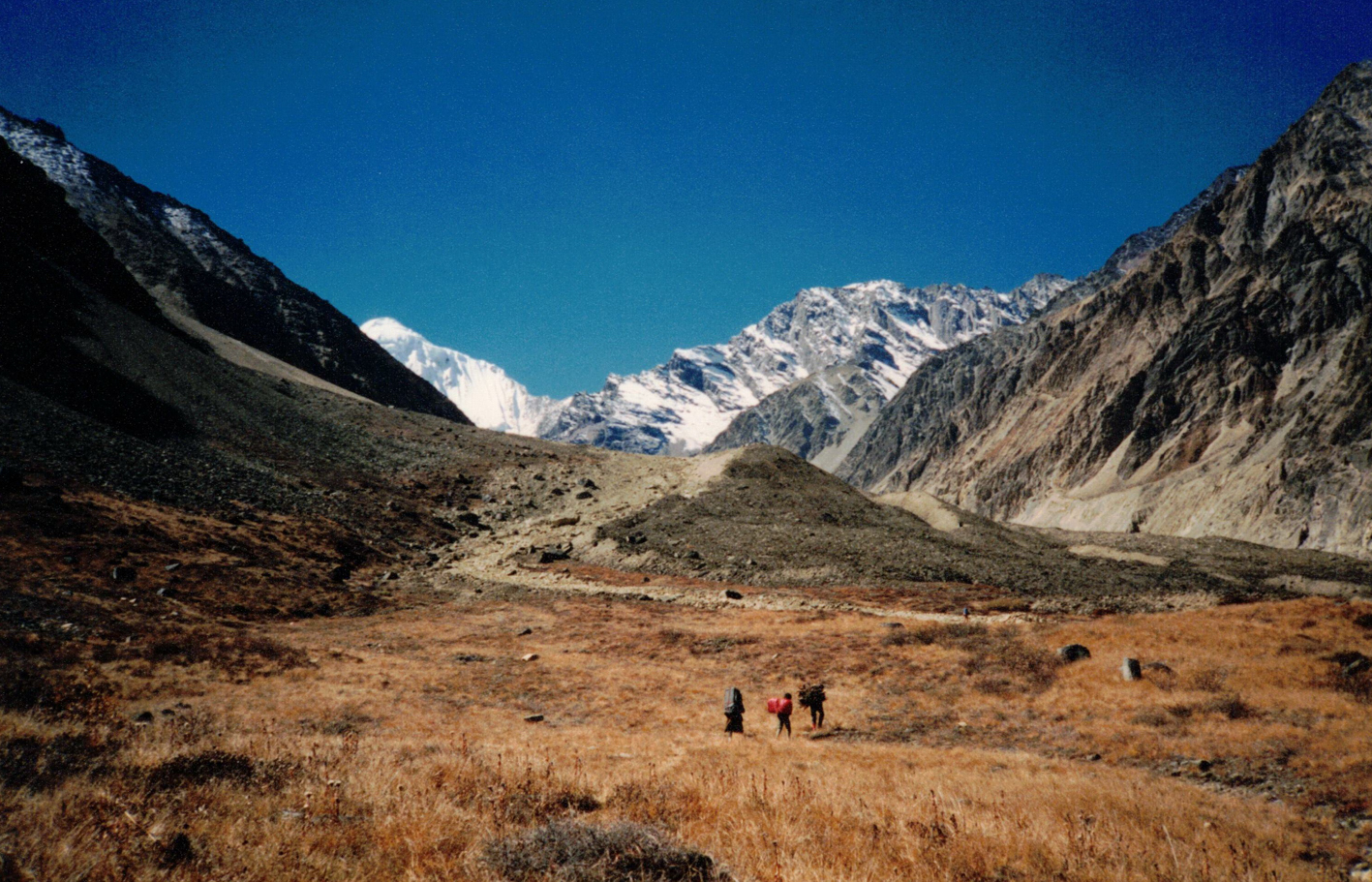
3 octobre
Je ne suis pas vaillant et je reste au camp de base avec Geneviève et Georges. Les autres remontent pour passer la nuit au camp intermédiaire et poursuivent avec l’installation du camp I à 5200 m.
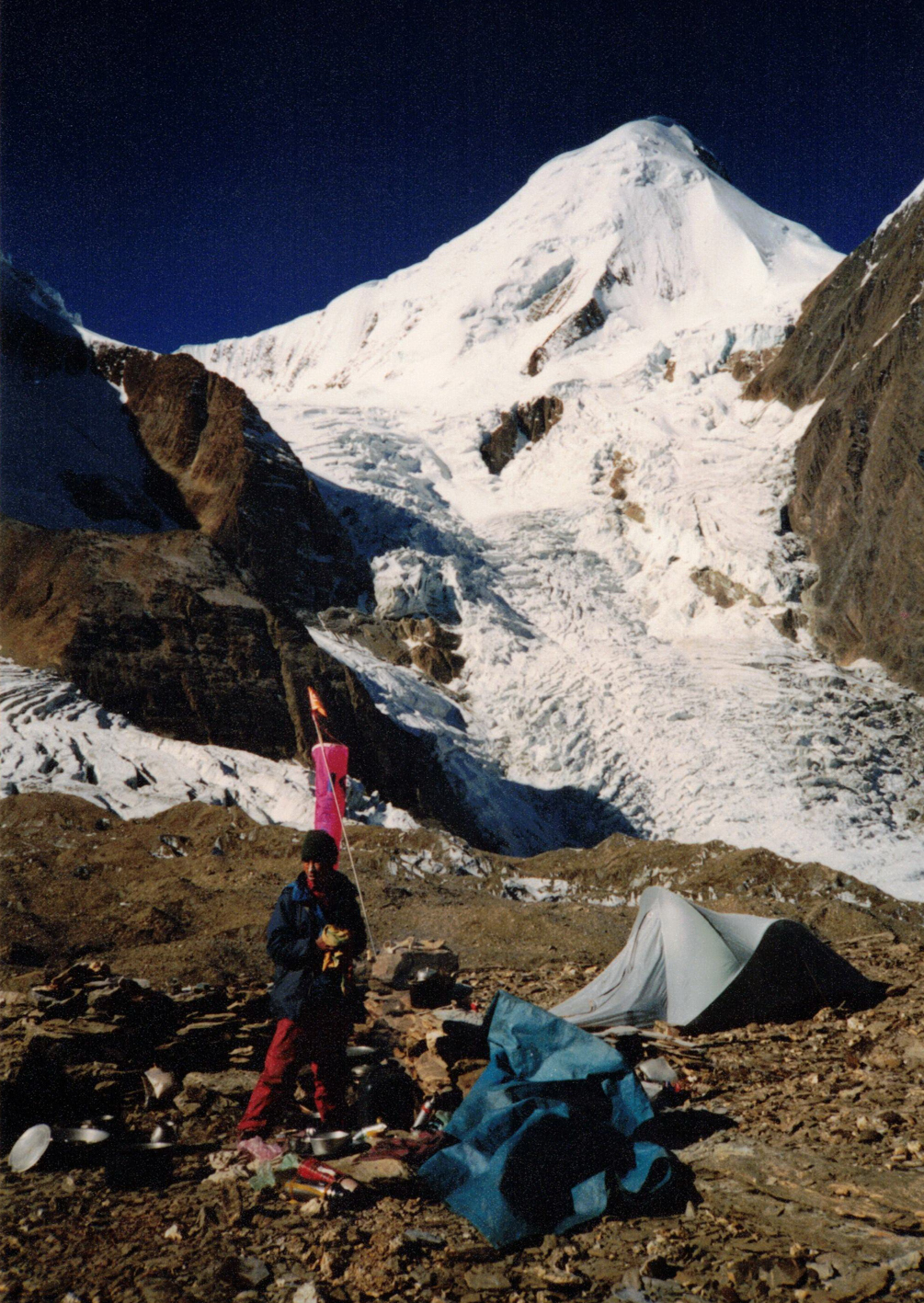
Notre objectif se précise
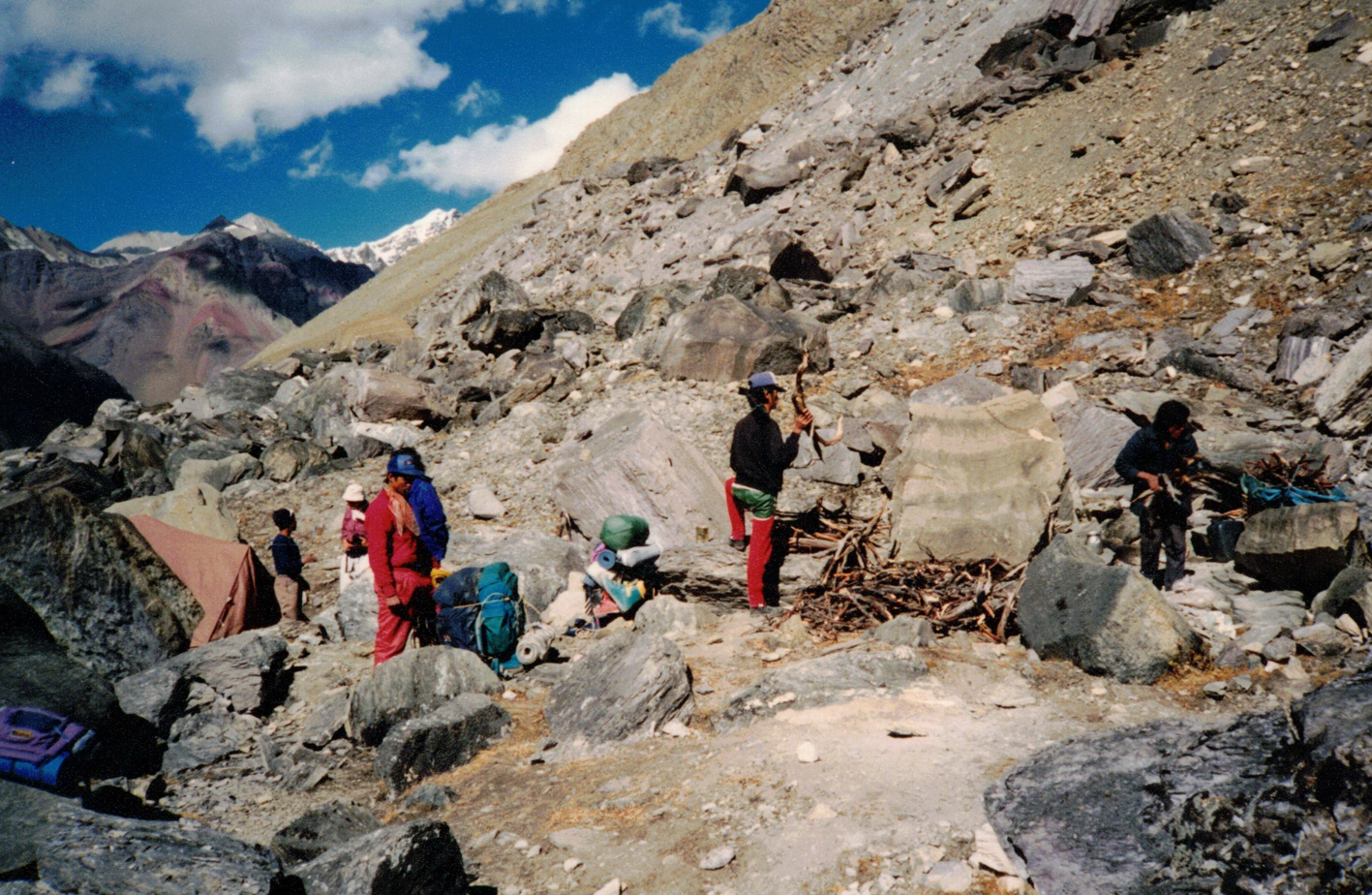
Camp intermédiaire
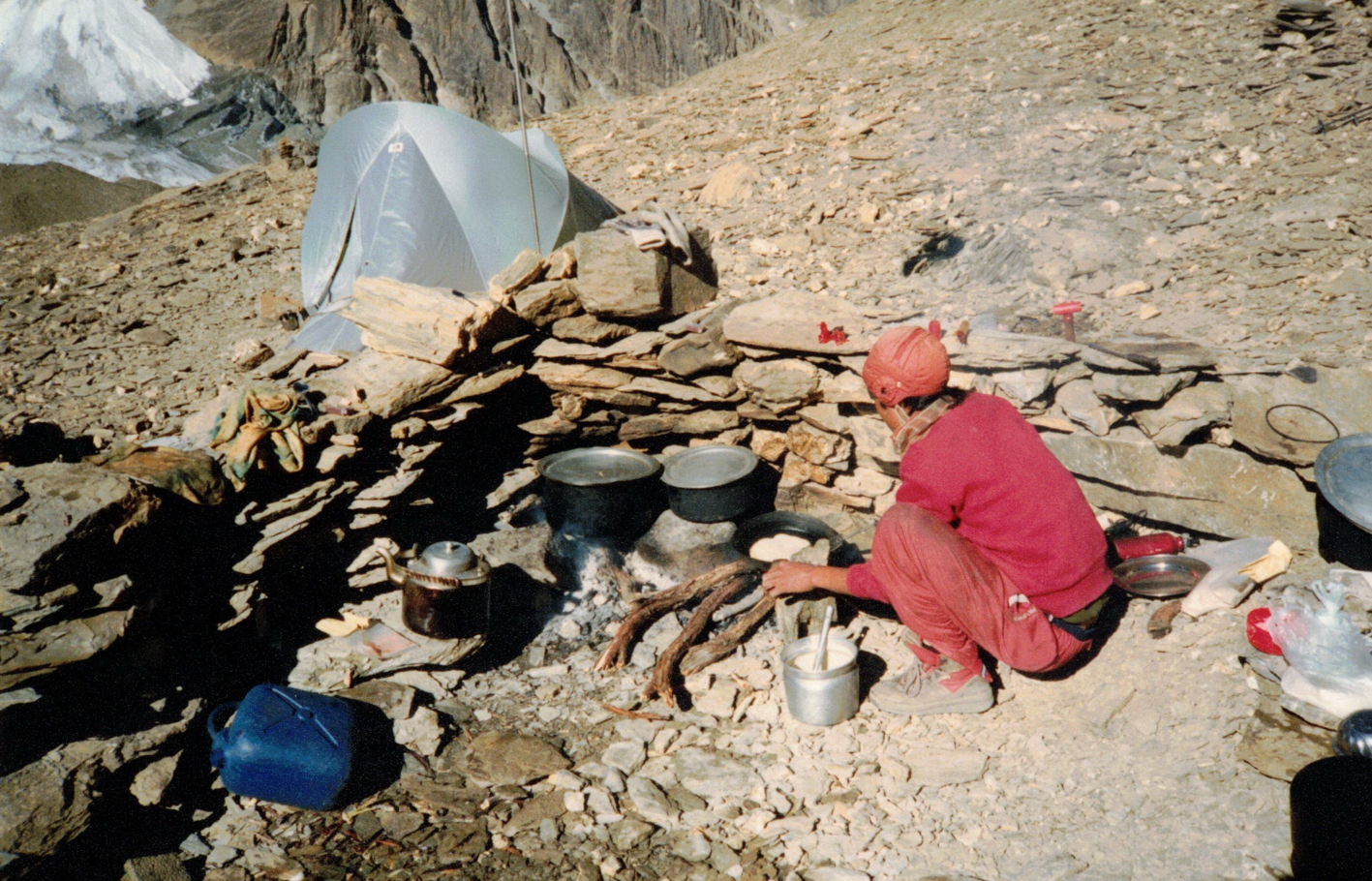
4 octobre
Je me sens mieux. Il fait beau mais froid. Je pars en reconnaissance en direction du nord avec Geneviève et Georges pour une ascension éventuelle, puis je les laisse pour gravir un des sommets avoisinnants. La roche est tellement pourrie que je dois renoncer à 4900 m. Le même jour, un sherpa accompagné de l’aide-cuisinier et de deux porteurs sont montés au camp I avec du matériel et du ravitaillement. Nous gardons trois porteurs de Chala pendant quelques jours pour ravitailler le camp I en bois et en nourriture. Geneviève avait préparé des unités de médicaments avec notes explicatives pour chacun des camps supérieurs.
Les vacations (communications avec talkie-walkie à heures fixes) entre le camp de base et les camps suivants se font à 12h et 18h et fonctionnent très bien.
5 octobre
Grand beau. Je décide de faire un portage au camp intermédiaire et de redescendre le même jour. Départ à 09h30, arrivée à 13h30. Alex et Christophe sont là, les autres au camp I. Retour au camp de base à 16h30.
6 octobre
Une longue caravanne quitte le camp de base, Geneviève, Georges, Pimba le cuisinier, trois porteurs et moi. Le camp intermédiaire est atteint vers 13h30. Nous y rencontrons trois sherpas. Après un certain flottement nous décidons de continuer jusqu’au camp I. Ce fût une erreur. Le camp I était encore peu pourvu en nourriture. En outre le seul porteur qui avait continué, a abandonné au pied de la goulotte délitée qui conduit au-dessus de la moraine. Ce qui fait que ni bois ni ustensiles de cuisine ne sont arrivés au camp I. Nous nous réfugions dans la tente-mess et pique-niquons avec ce que l’on trouve.
Le même jour Gaston, Jacques et deux sherpas ont installés le camp II vers 5800 m.
7 octobre
Je décide de redescendre au camp intermédiaire. Je prends un paquet de biscuits et quitte le camp I vers midi. Arrivé en bas : personne. Vacation avec Alex à 14h, puis 16h, et enfin 17h. Toujours personne. Fort vent du sud. Je puise l’eau dans une mare du glacier et je la désinfecte. Au menu : haricots secs, nouilles trouvées sur place et la moitié des biscuits.
8 octobre
Réveil à 06h30. Petit-déjeûner avec jus de fruits chaud et le reste des biscuits. A 07h30 arrivent les deux sherpas et Pemba. Nous remontons au camp I, sauf qu’ils y arrivent une heure avant moi ! Le parcours sur glacier se fait à l’ombre, sur cailloux et roches brisées, festonnées de givre et par endroits glissantes. Lorsque je m’arrête pour la vacation de 9h un effroyable craquement du glacier retentit sous mes pieds. Je remballe tout en vitesse et rejoint la moraine aussi vite que les vingt kilos de mon sac me le permettent. J’arrive au camp I vers 10h30. Les quatre alpinistes sont partis équiper le camp II, y dormir, et le lendemain installer les tentes au camp III. Les sherpas mangent puis montent du matériel au camp II.
Le soir du 9 octobre
Nous sommes sept à être blottis sous la tente-mess prévue pour trois à quatre personnes. Très agréable soirée partagée avec les sherpas pour la première fois de l’expédition.
10 octobre
Les sherpas remontent au camp II avec du matériel. A 10h30 Geneviève, Georges et moi partons également pour le camp II. Nous descendons sur le glacier, contournons la base de la moraine et remontons le vallon situé derrière. A un moment, je bifurque à gauche pour rejoindre le fil de l’éperon, mais Geneviève et Georges ne me suivent pas. Il s’avérera qu’ils se sont retrouvés dans des passages difficiles et dangereux. Nous les récupérerons à la descente.
Je quitte l’éperon et effectue une traversée délicate pour rejoindre un replat neigeux. Les derniers 100 m. sous le camp II sont délicats à négocier. Je retrouve là trois sherpas. Il est 13h.
Nous observons nos quatre collègues, répartis en deux cordées de deux, qui attaquent la paroi neigeuse en direction du camp III. Nous nous étonnons qu’ils soient partis si tard. Au bout d’un moment, Christophe quitte sa cordée et redescend. Il reviendra au camp I avec toute l’équipe. Il est 14h15 je suis de nouveau au camp I.
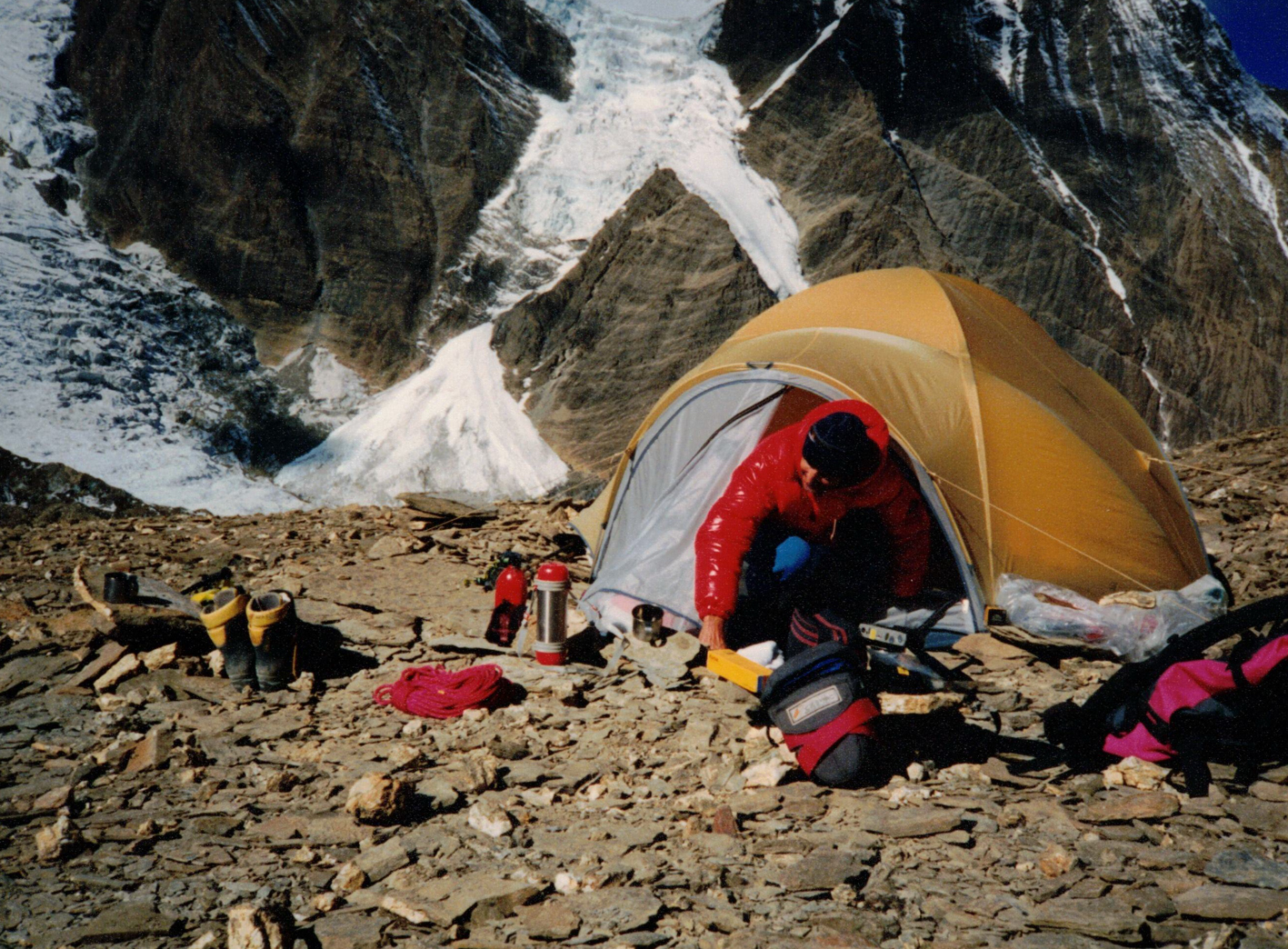
l’auteur du récit au camp I (5200m)
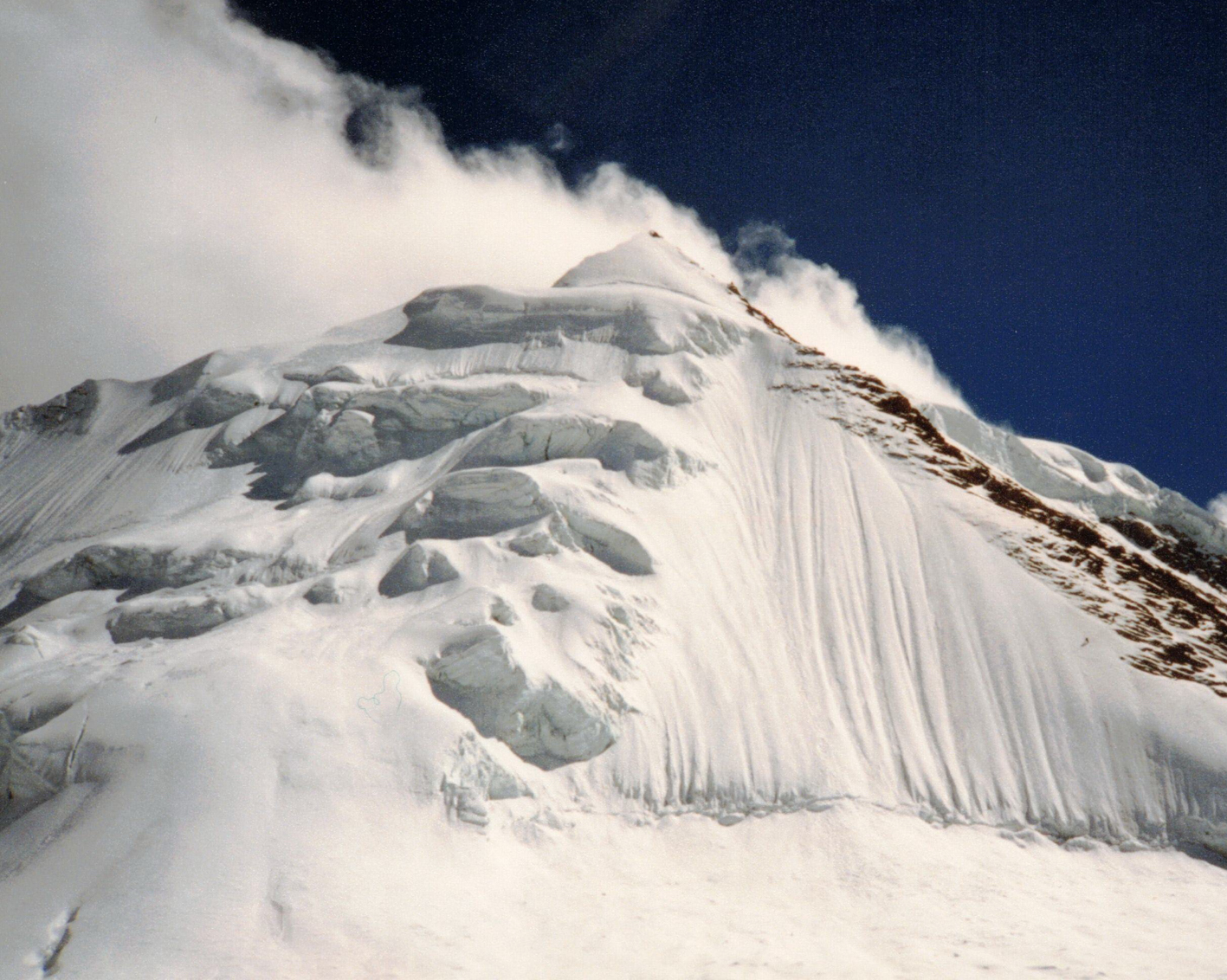
Le Saipal vu du camp I
Ringi qui était descendu ce matin chercher du bois au dépôt n’est toujours pas revenu. Il devait aussi remonter mon matériel de haute altitude. Or je me demande depuis quelques temps déjà si j’en aurai vraiment l’utilité. Je n’ai pas le moral d’un vainqueur. Aujourd’hui, l’équipe de tête a équipé le triangle neigeux qui donne accès à l’arrête sommitale.
11 octobre
Nous observons aux jumelles cinq grimpeurs qui se dirigent vers la pente de neige qui mène vers le sommet de l’antécime. En contre-bas, on aperçoit Christophe grimpant pour les rejoindre. Ce groupe six grimpeurs atteint le replat au pied du deuxième ressaut triangulaire puis redescend. Nous apprenons par radio qu’il leur manque des cordes fixes. Alex et deux sherpas redescendent au camp I.
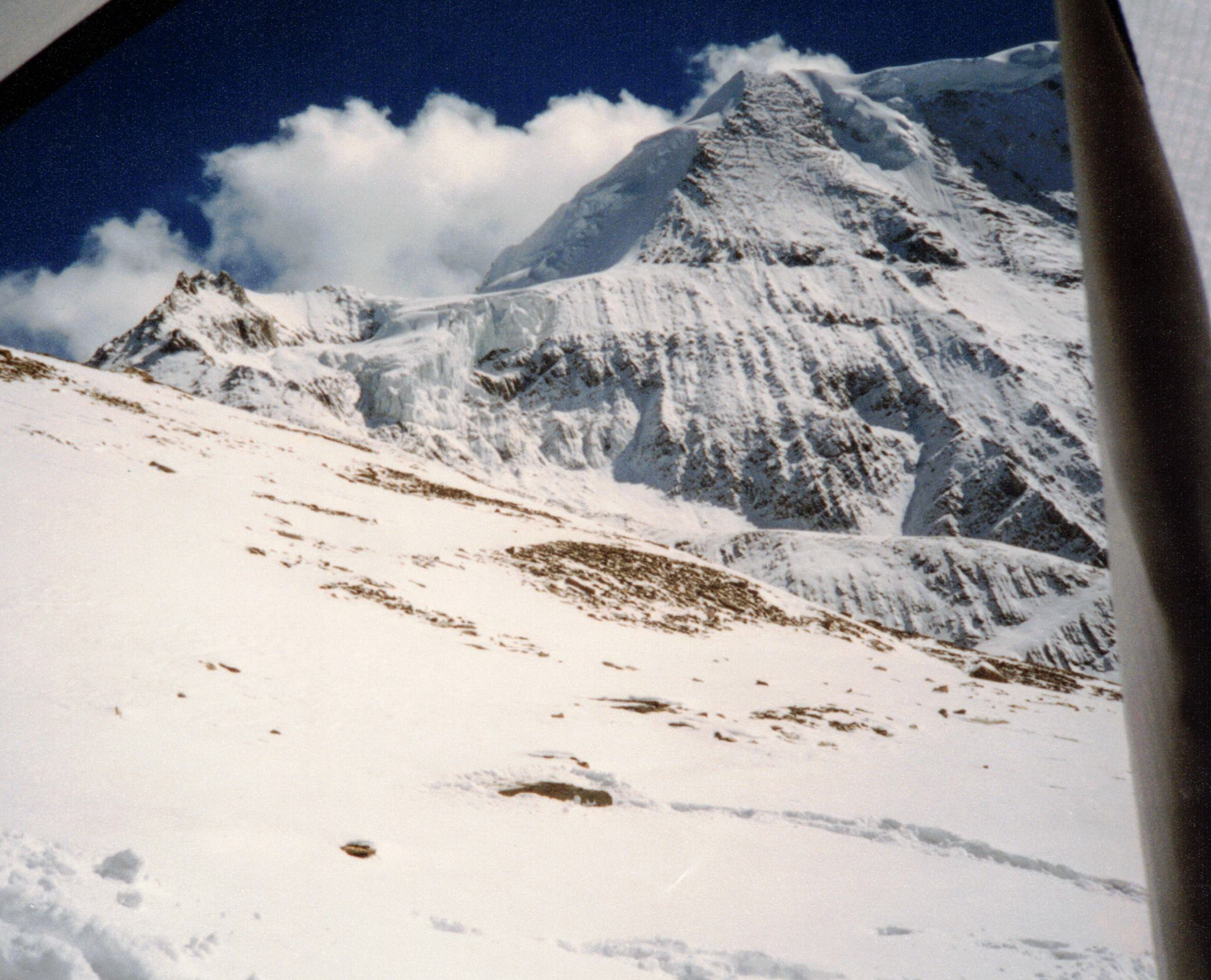
12 octobre
Les trois grimpeurs du camp II partent pour une nouvelle tentative afin d’installer le camp III.
Il est 16h15 et ils se trouvent à une longueur du sommet de la « Pointe de l’Aigle Blanc ».
Après réflexion, Alex décide de monter demain avec les deux sherpas et tout le matériel technique qui se trouve encore au camp I.
Une expédition autrichienne arrivée là il y a quelques jours, et voulant refaire la voie que nous sommes en train d’ouvrir, accepte de nous fournir les cordes fixes qui nous manquent. Par ce geste, les Autrichiens reconnaissent qu’ils vont bénéficier du travail que la Section Genevoise a effectué jusque-là.
Je prête mes crampons à Danou – le sirdar – qui a cassé une lanière des siens. A la vacation du soir nous apprenons que le camp III a été installé sur l’arrête.
13 octobre
Dans la nuit il commence à neiger et ce matin il neige toujours. L’ensemble du massif est pris dans les nuages. Les conditions empirent rapidement.
Nous demandons aux alpinistes du camp III de faire retraite au plus vite. Nous ne savons pas combien de temps va durer la tempête. Ils n’ont de la nourriture et du gaz que pour deux-trois jours. Le crépuscule arrive. La neige forcît et la couche au camp I augmente rapidement. Là-haut à 6200 m. il y a maintenant entre 80 et 100 cm de neige. Notre inquiétude augmente plus vite que la couche de neige. Au camp I nous nous demandons combien de temps nous pourrons tenir avant que les dangers d’avalanche ne nous coupent la retraite vers les camps inférieurs.
14 octobre
Soudain le vent tombe et nous n’entendons plus le crépitement des flocons sur la toile. Je glisse le nez dehors et voit un ciel étoilé. Le soulagement est énorme. Le soleil de 8h30 confirme le retour du beau… mais pour combien de temps ? L’altimètre indique une chute de pression de 70 m.
Le camp III est finalement évacué mais les deux tentes restent sur place. Nos compagnons progressent difficilement dans 1 m. de poudreuse. Il est 11h30 et ils devraient bientôt entamer la descente de la face.
Au camp I, nous brûlons ce qui reste du bois, mais mangeons correctement. En fin de journée Ringi devrait monter du bois et quelques provisions. Les 70 m. de chute de pression ont été récupérés vers midi.
Vers 15h nos amis sont au camp III. A 17h Passang et Ringi arrivent au camp I avec du bois et des provisions. Le soir, Danou, le sirdar, nous propose une stratégie d’ascension qu’Alex et moi trouvons bonne. A savoir : le lendemain 15 octobre, Alex et deux sherpas montent au camp II. Ceux du camp II descendent au camp inférieur. Le 16, Alex équipe toute la paroi de cordes fixes et redescend. Le 17, Alex monte au camp III, et ceux du camp I montent également au camp III directement en utilisant les cordes fixes. Les 18 et 19 octobre, tentatives pour atteindre le sommet.
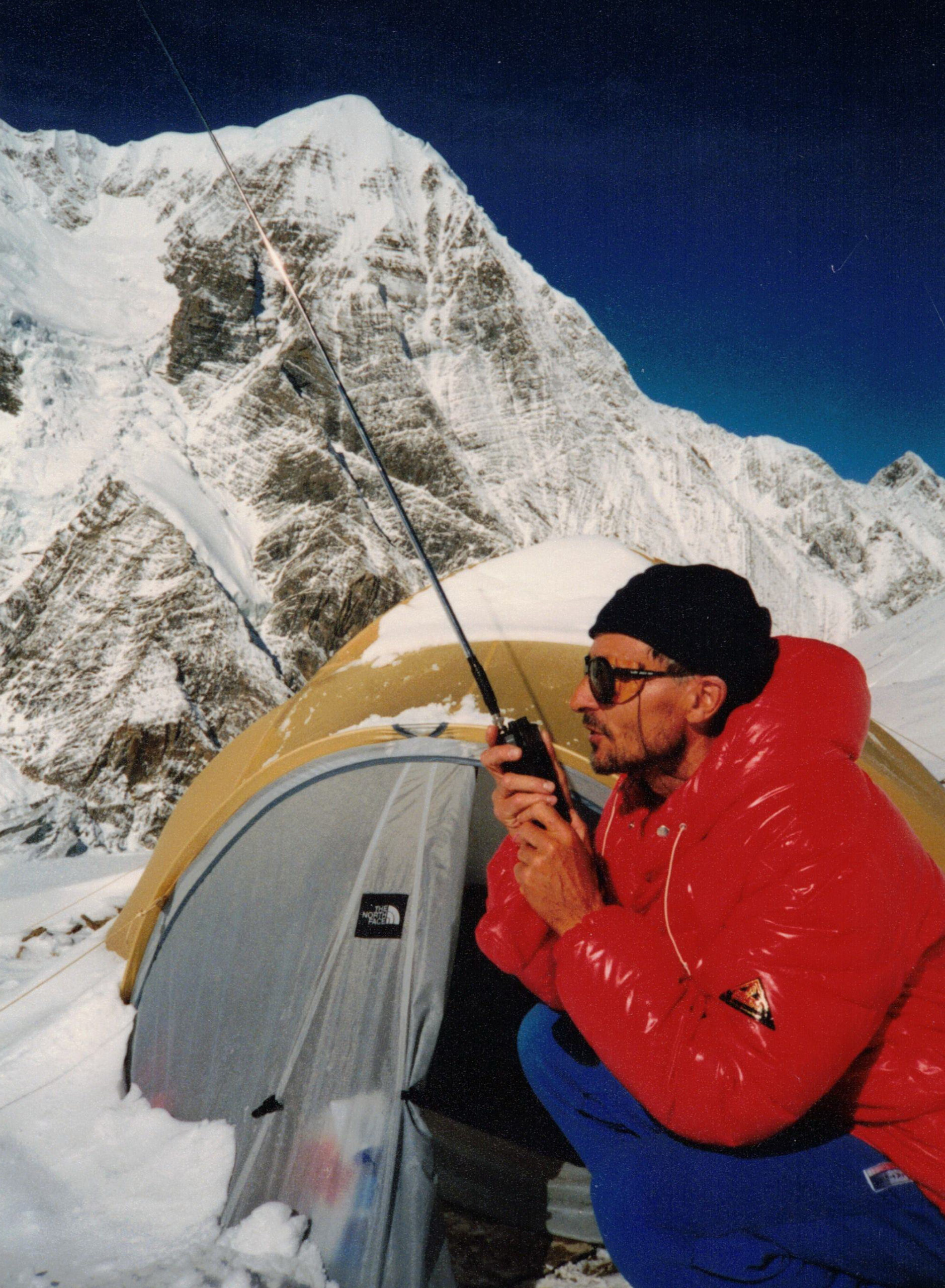
Vacation au camp I
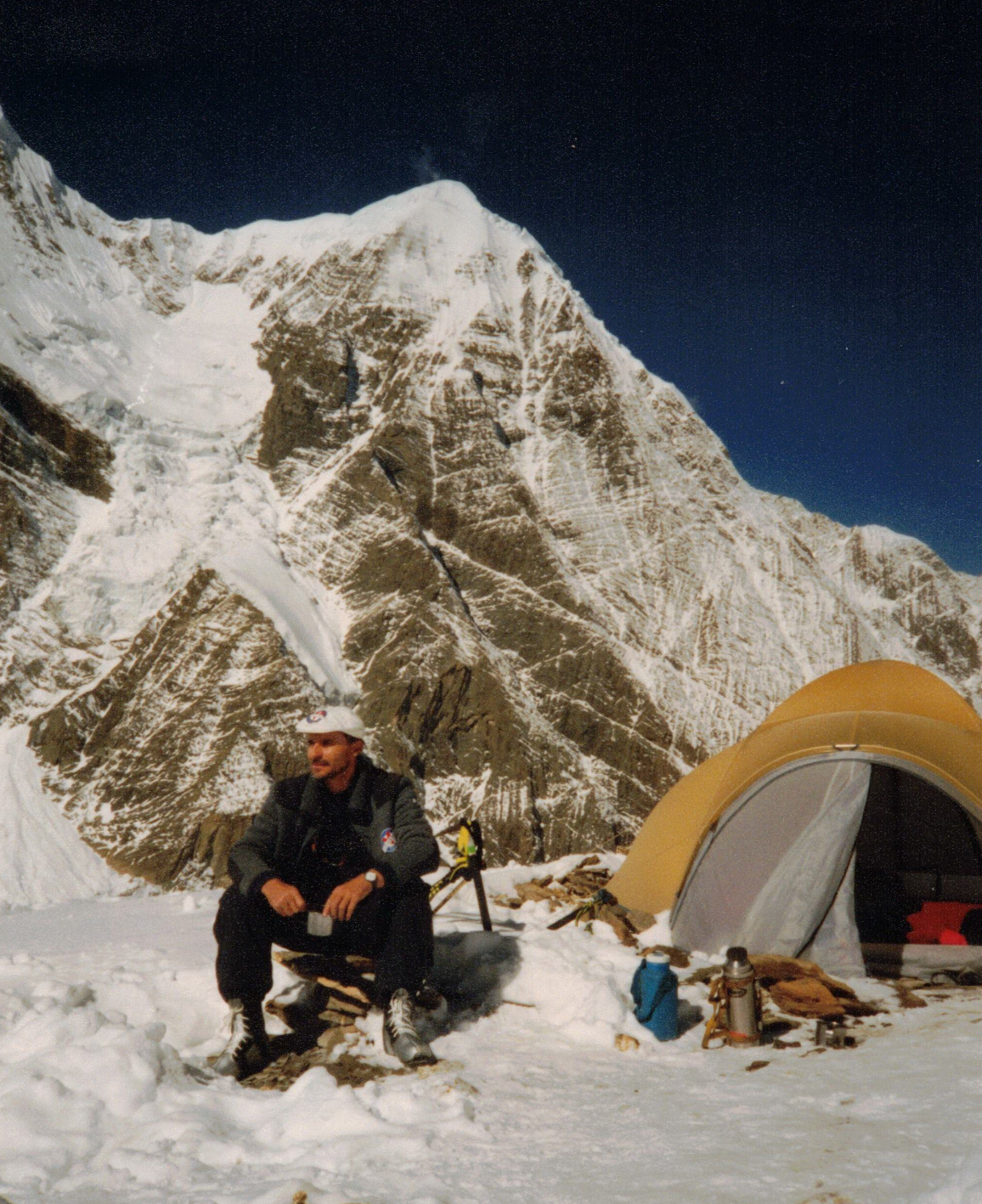
15 octobre
Ce matin il fait -10° sous la tente. Dès l’apparition du soleil la température augmente rapidement.
A 11h je quitte le camp I pour aller au camp de base.
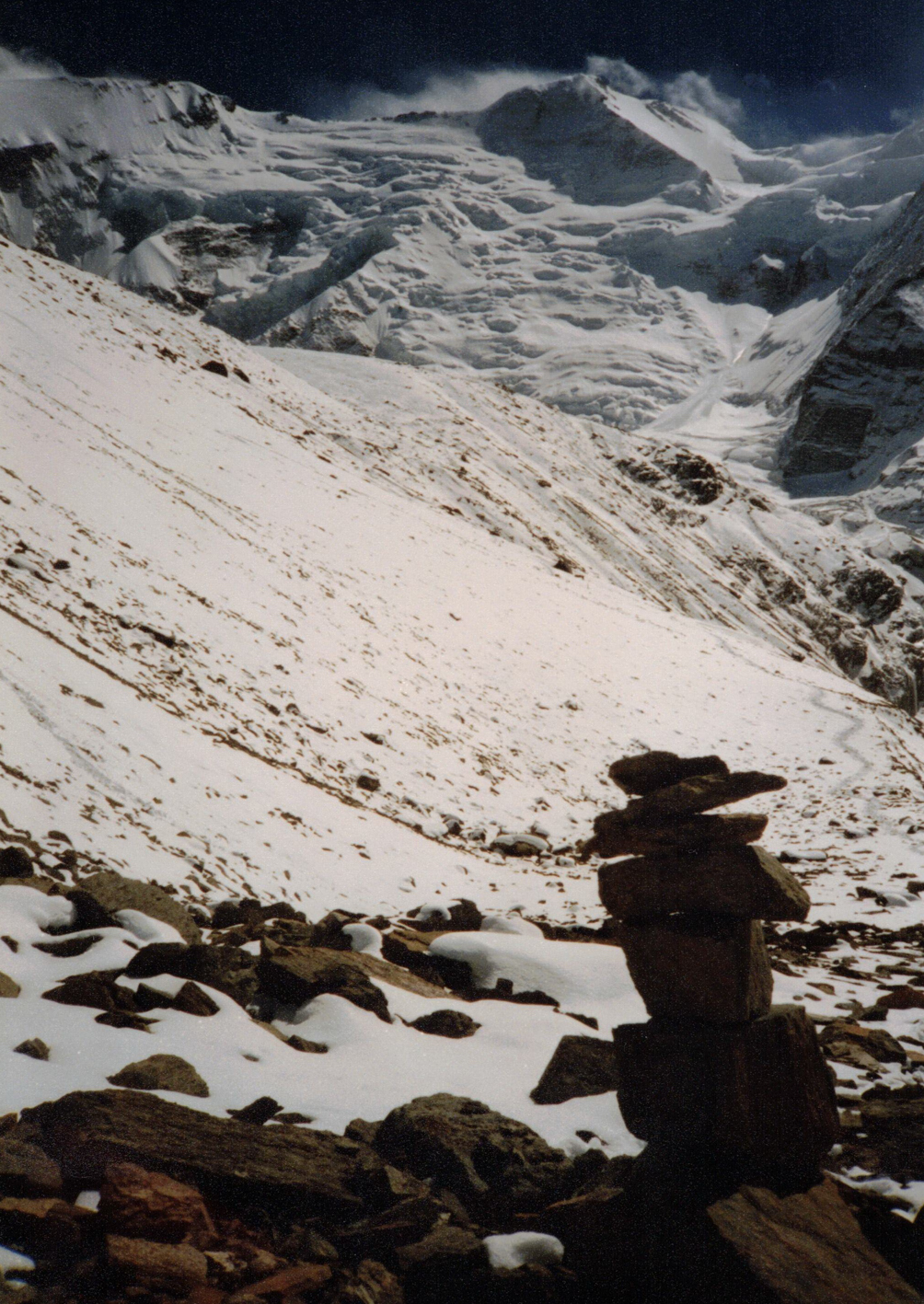
Je suis nostalgique de quitter à jamais cet endroit « sans me douter que je serai de retour ici-même 6 ans plus tard ». Je me retourne plusieurs fois et prend des photos.
J’arrive au camp de base vers 16h30 sous un ciel menaçant. Geneviève et Georges sont montés installer un mini camp à 400 m. au-dessus à l’emplacement d’une ancienne bergerie aujourd’hui en ruine.
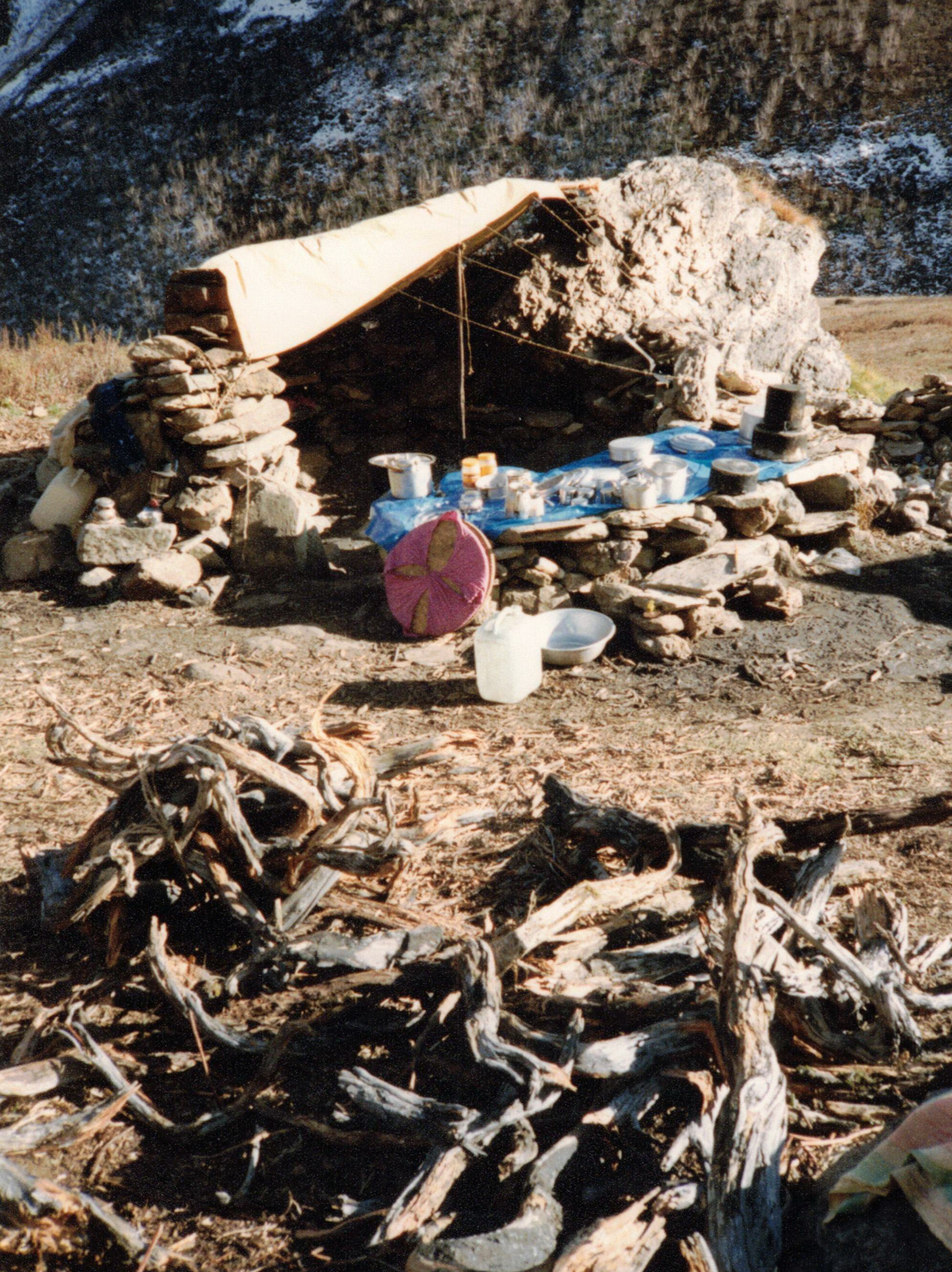
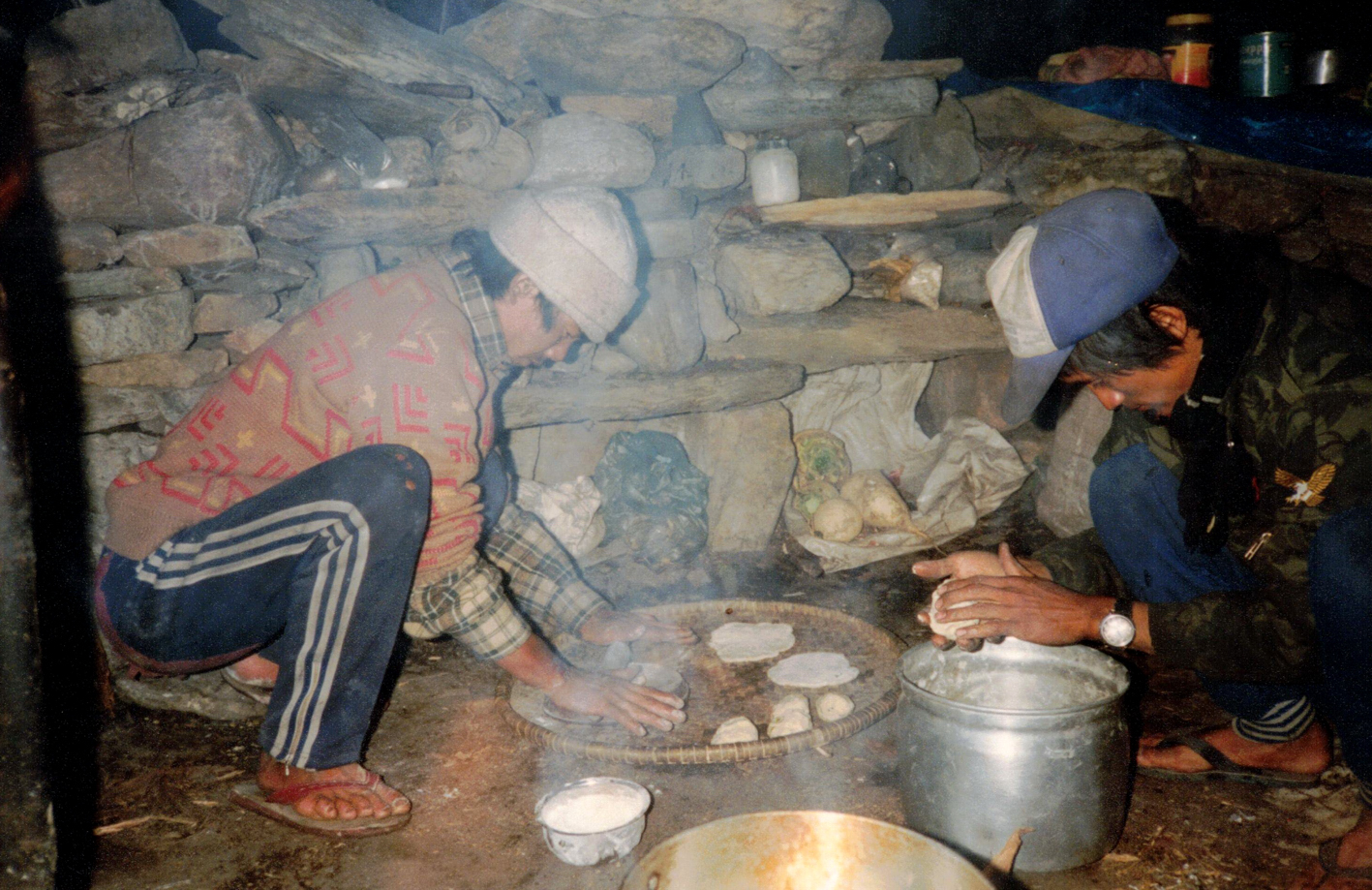
Le soir, l’officier de liaison et moi sommes seuls.
Nous soupons ensemble dans la cuisine du camp de base.
16 octobre
Je prépare un sac avec les dernières rations d’altitude afin que Pasang et Shanka les montent. Je donne mes chaussures hivernales à Shanka. Il devrait payer 4000 Rps pour celles qu’il a endommagées. Cela me fait mal au coeur pour lui sachant qu’il vend un kilo de riz entre 4 et 5 roupies, et un kilo de grains panifiables entre 3 et 4 Rps. En outre, l’écolage de son fils de 13 ans lui coûte 450 Rps par mois et celui de sa fille de 11 ans, 350 Rps par mois. Shanka travaille six mois par an comme sherpa d’altitude, prend deux mois de congé, puis travaille pendant quatre mois sur ses terres.
Si le coût d’engagement népalais nous paraît , en tant que Suisse, peu élevé, pour eux les revenus qu’ils tirent d’une saison d’expédition sont conséquents. Ils leur permettent de faire vivre leur famille et surtout d’envoyer leurs enfants à l’école. Ceux qui prétendent que nous exploitons honteusement le personnel népalais connaissent mal la réalité du terrain.
17 octobre
Pema vient de partir pour Chala afin de ramener les yaks pour notre retour à Simikot. Il a également pour mission de ramener un mouton pour fêter la fin du séjour au camp de base et j’espère la réussite de l’ascension. Pour cela je lui ai donné 1000 Rps. Le prix d’un mouton devant osciller entre 700 et 800 Rps.
Je suis sous la tente, debout dans une bassine d’eau chaude avec l’intention de laver le bas de mon corps (hier j’avais lavé le haut), quand arrive Passang avec une lettre de Gaston réclamant du bois, du lait, du sucre, des piles et du papier toilette. Passang repart le même jour avec les commissions. Nous dinons près du foyer de la cuisine à la lueur d’une bougie à pétrole. Une mèche de papier WC double torsadée trempant dans du pétrole et dont un bout sort par un trou pratiqué au centre du couvercle en fer, d’un pot en verre.
18 octobre
Ciel couvert et vent froid. Je quitte le camp en direction du NNE pour rejoindre Geneviève et Georges dans leur campement. Nous pique-niquons ensemble et je les aide à redescendre du matériel pour le camp de base. Message de Gaston réclamant à nouveau de la nourriture et des médicaments pour Christophe qui souffre d’une angine. Par ailleurs il nous indique que l’ascension pourrait se prolonger jusqu’au 21-22 octobre, alors que les yaks ont été commandés pour le 20. Conseil de guerre. Finalement un des Népalais de l’expédition autrichienne ira demain à Chala pour retarder les yaks jusqu’au 23. Passang fait un portage au camp I.
19 octobre
La lessive pend dans le prolongement des drapeaux de prière. Georges m’apporte deux livres et je lui prête les miens. Comme chaque fin d’après-midi le soleil disparait vers 16h30 et aussitôt la température chute d’une dizaine de degrés en l’espace de quelques minutes. J’enfile collant, surpantalon, veste duvet, bonnet et met les pieds dans mon sac de couchage en attendant le souper. Méditations, rêves et projets envahissent mon esprit.
20 octobre
Nous quittons le camp à 10h30 pour remonter le vallon du torrent en direction du nord. Il fait très beau. Des parfums de plantes s’exhalent à chaque pas. Une brise légère adoucit l’ardeur du soleil. Les pentes sont couvertes de genévriers qui forment des taches vertes sur un tapis végétal aux tons jaune, ocre et roux. Nous atteignons un petit lac partiellement gelé à 5200 m. Soudain nous apercevons aux jumelles un groupe de Tibétains sur une crête à quelques 300 m. de nous. Alors que je m’avance vers eux, ils se lèvent et partent. Je poursuis dans l’espoir de tomber sur une piste.
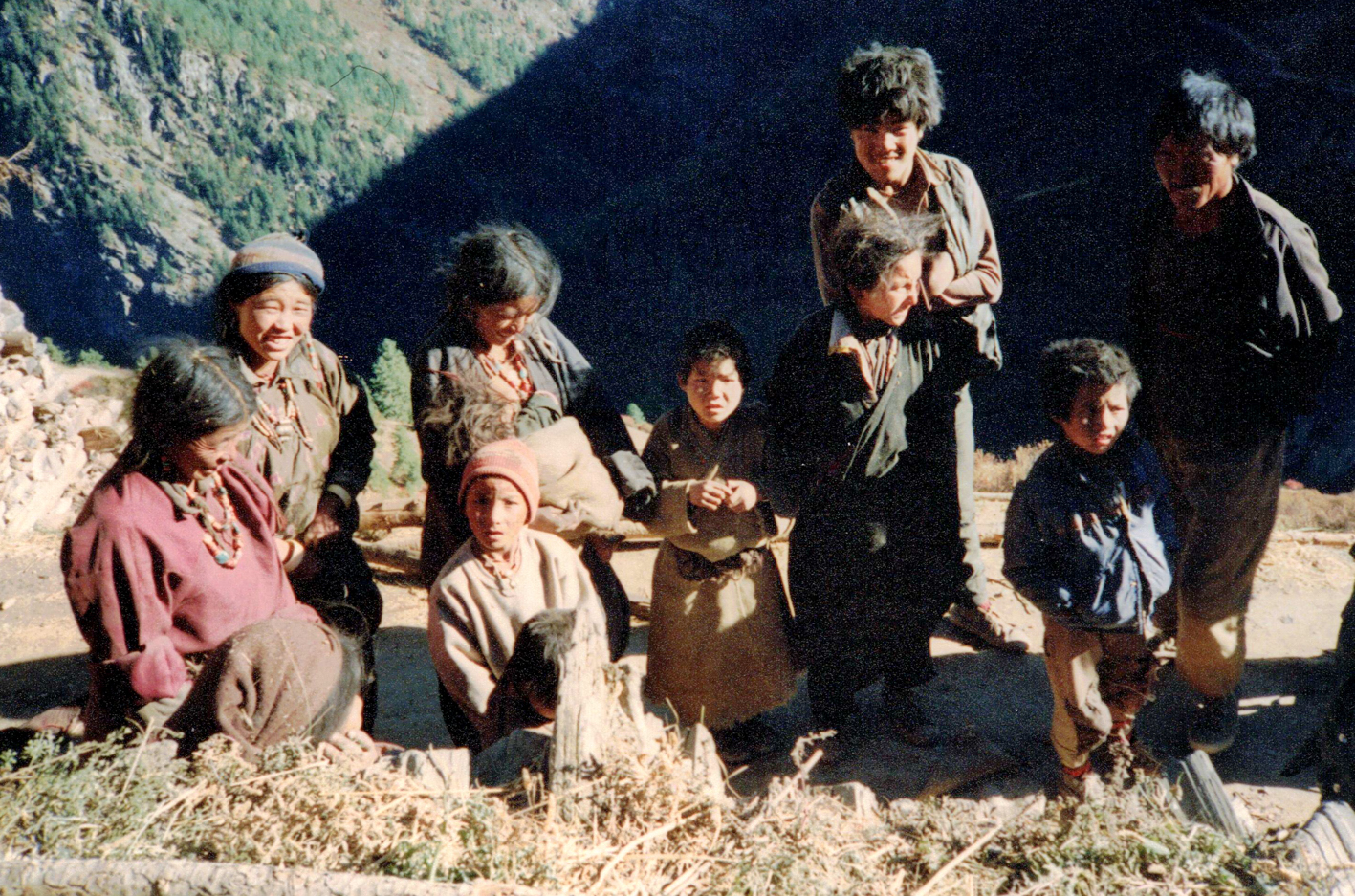
Il n’y en a point mais j’ai la surprise de voir arriver toute une famille. Ils sont encore plus surpris que moi, surtout de croiser un Blanc à cet endroit.
Nous apprendrons plus tard qu’ils sont passés près du camp tout en l’évitant soigneusement.
Ce serait des Tibétains ayant évité le poste de contrôle de Muchu pour entrer clandestinement au Népal.
De retour au camp Nous voyons les yaks ainsi qu’une vieille chèvre, alors que j’avais payé pour un mouton. Je fais connaître mon mécontentement. J’apprendrai le soir que la chèvre a coûté 950 Rps; c’est beaucoup trop cher et j’ai le sentiment de m’être fait avoir.
21 octobre
je réitère mon mécontentement auprès de Pokharel. Il m’apprend que la chèvre sera rachetée pour moitié par les Autrichiens et pour moitié par notre sirdar et le cuisinier. Une fois à Chala un mouton nous sera fourni comme demandé.
Autour de 15h30 nos alpinistes rejoignent le camp de base. La chèvre a été égorgée et la viande massacrée pour finir dans des momos que je ne mange pas. Nous planifions notre itinéraire de retour, il nous reste 14 jours car le vol de Simikot est prévu pour le 6 ou 8 novembre.
Gaston et Jacques nous dévoilent un projet pour refaire une nouvelle tentative vers le sommet du Saïpal en 4-5 jours pendant que nous autres irions à Saïna. La jonction des deux groupes se ferait à Chala autour du 30 octobre.
22 octobre
Gaston et Jacques décident de refaire la tentative envisagée. Nous faisons l’inventaire de la nourriture. Il faudra nous rationner en sucre, en muesli et en flocons d’avoine. Il est prévu d’acheter 40 kilos de pommes de terre, 25 kilos de farine, des radis verts et du beurre de dri (femelle du yak) à Chala.
Les Autrichien nous demandent de prendre leurs deux trekkers avec nous jusqu’à Saïna. Nous acceptons à condition que ces trekkers prennnent leur propre nourriture. Ils nous offrent une bouteille de kirsch.
23 octobre
Il a été décidé la veille que la moitié de la nourriture et tout le matériel de haute montagne seront déposés à Chala et repris là lors de notre retour de Saïna. Nous avons de la difficulté à convaincre l’officier de liaison d’aller à Saïna car ce but n’est pas inscrit sur notre permis de trek. Voyant sa réticence, mais sachant qu’il lui tarde de retourner à Katmandou, nous obtenons qu’il nous laisse aller à Saïna et en contrepartie nous nous engageons à renoncer à toutes réclamations s’il entre dans la capitale avant nous.
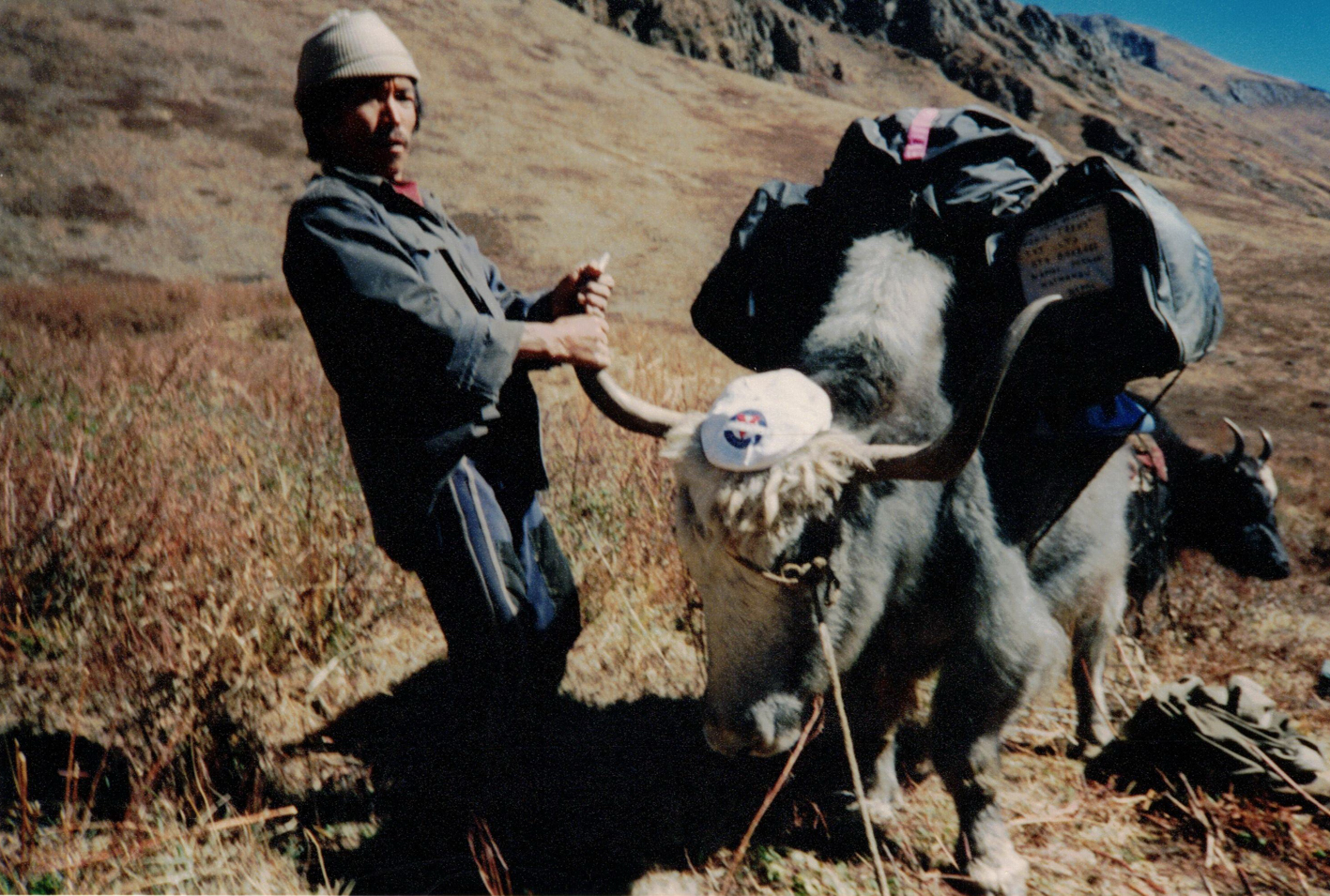
Les yakmen qui sont là depuis le 20 octobre commencent à s’impatienter.
Comme d’habitude Georges peste contre l’inefficacité des Népalais.
Le camp est démonté et les yaks chargés dans le plus grand désordre.
La veille, Gaston et Jacques se sont mis de la nourriture de côté pour quatre jours. Ce soir nos deux alpinistes ainsi que les sherpas Tendi et Ringi souperont et coucheront chez les Autrichiens.
Nous quittons enfin le camp de base, il est 11h15 !
Il était prévu de nous arrêter sur la selle herbeuse qui se trouve à une heure de Chala. Mais sous prétexte que l’on y trouve ni eau ni bois, le cuisto nous traîne jusqu’à Chala, tout cela parce qu’il a la flemme de descendre chercher l’eau à dix minutes et le bois à cinq minutes. Finalement, alors qu’il commence à faire nuit, nous arrivons sur un replat situé sur le contrefort gauche d’une gorge qui nous sépare du village. Nous avons marché quasiment six heures. Après de rapides descentes et de rudes montées, nous n’avons perdu que 300 m. d’altitude par rapport au camp de base.
Geneviève est préposée au rationnement du sucre car il ne nous en reste que trois kilos pour quatorze jours. Cette denrée étant très rare dans la région il n’est pas possible d’en acheter.
Le retour
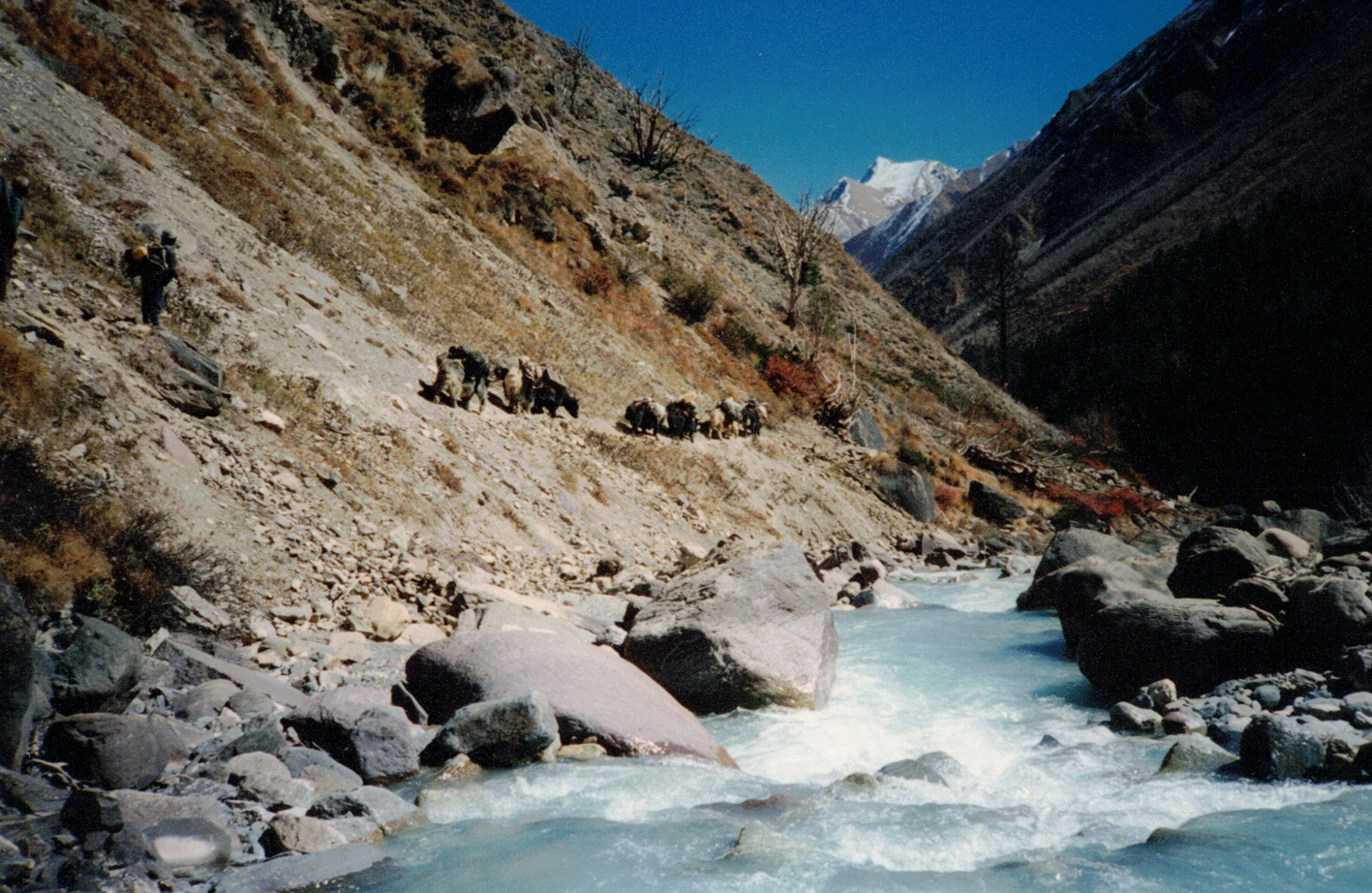
24 octobre
Jour de repos consacré à la visite du village et des environs. Chala compte quelques trente familles d’une taille qui varie entre quatre et douze personnes; cela fait environ deux cent âmes. Une femme peut avoir jusqu’à six maris mais un seul reste au foyer pendant six mois à un an. Les autres partent soit avec les troupeaux, soit pour faire de petits métiers dans d’autres vallées plus au sud.
Alex et Christophe partent faire du parapente. Nous les suivons aux jumelles. Après quelques tentatives infructueuses, les voilà partis ! Les voiles muticolores se gonflent et les villageois ouvrent des yeux émerveillés. Dans l’après-midi Geneviève, (portant un sac à dos rempli de médicaments et de matériel médical), Georges et moi partons à la rencontre des autochtones.
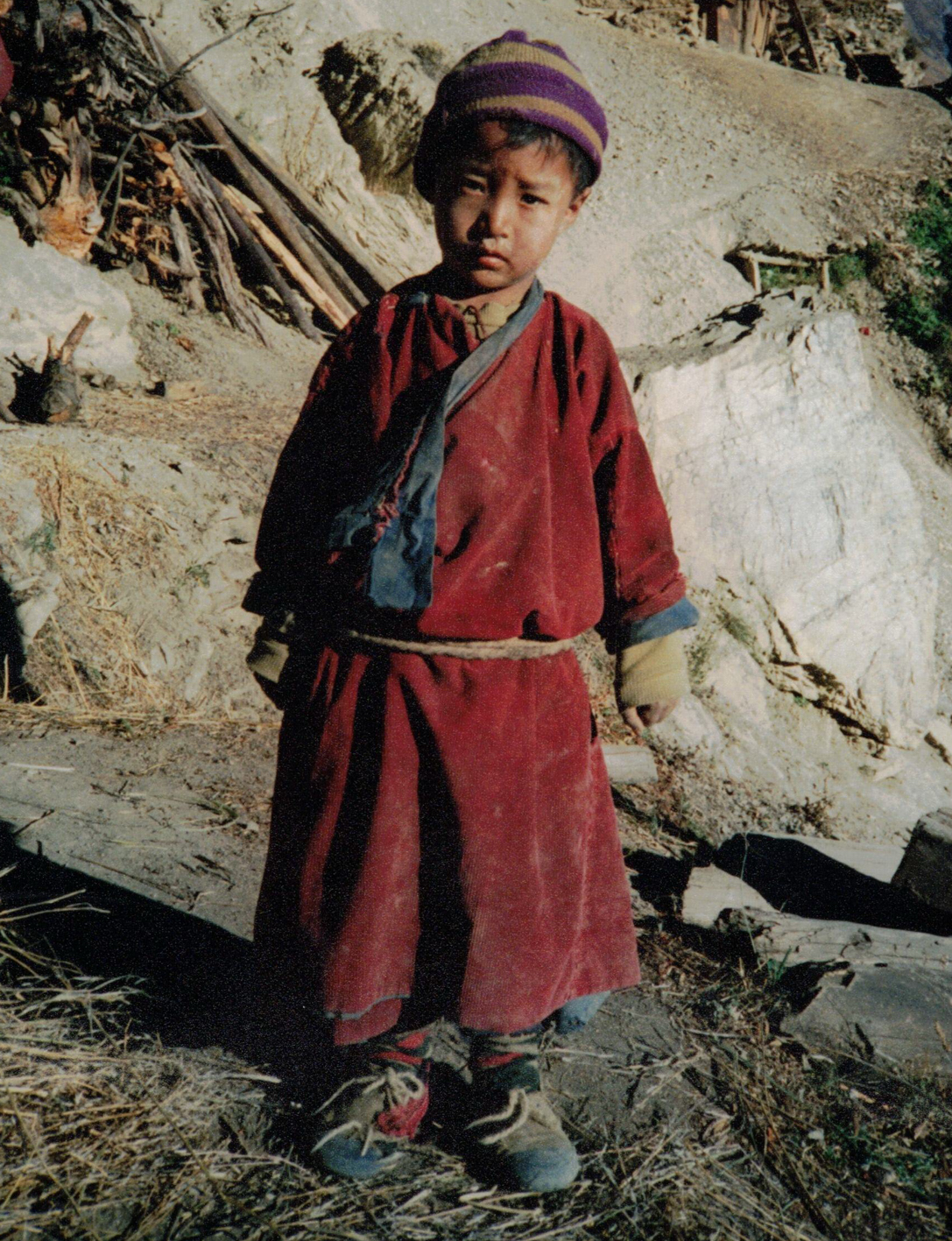
Geneviève prodigue des soins et distribue quelques babioles aux enfants du village.
Certains prennent la pose, d’autres travaillent comme le veut la coutume locale basée sur une économie de subsistance.
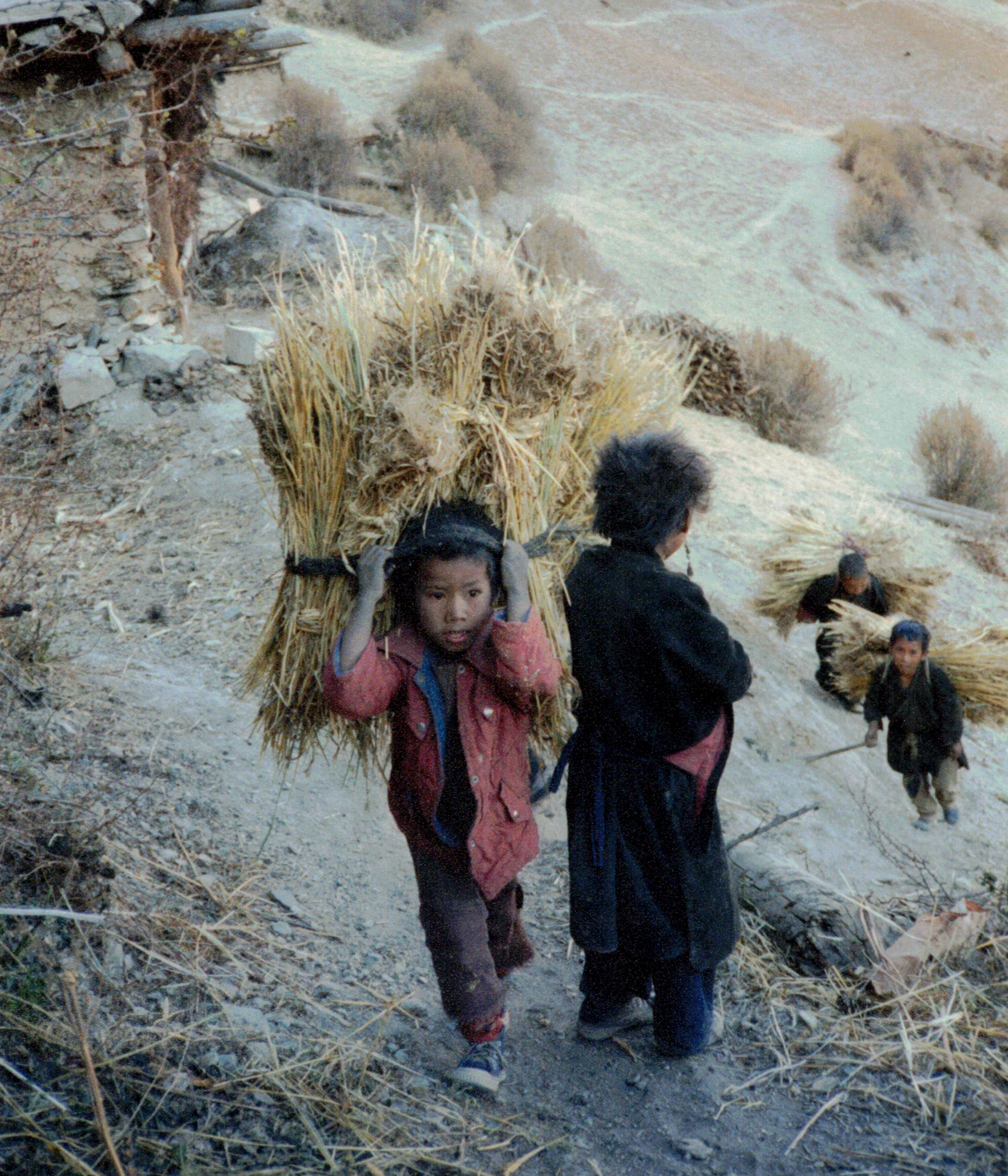
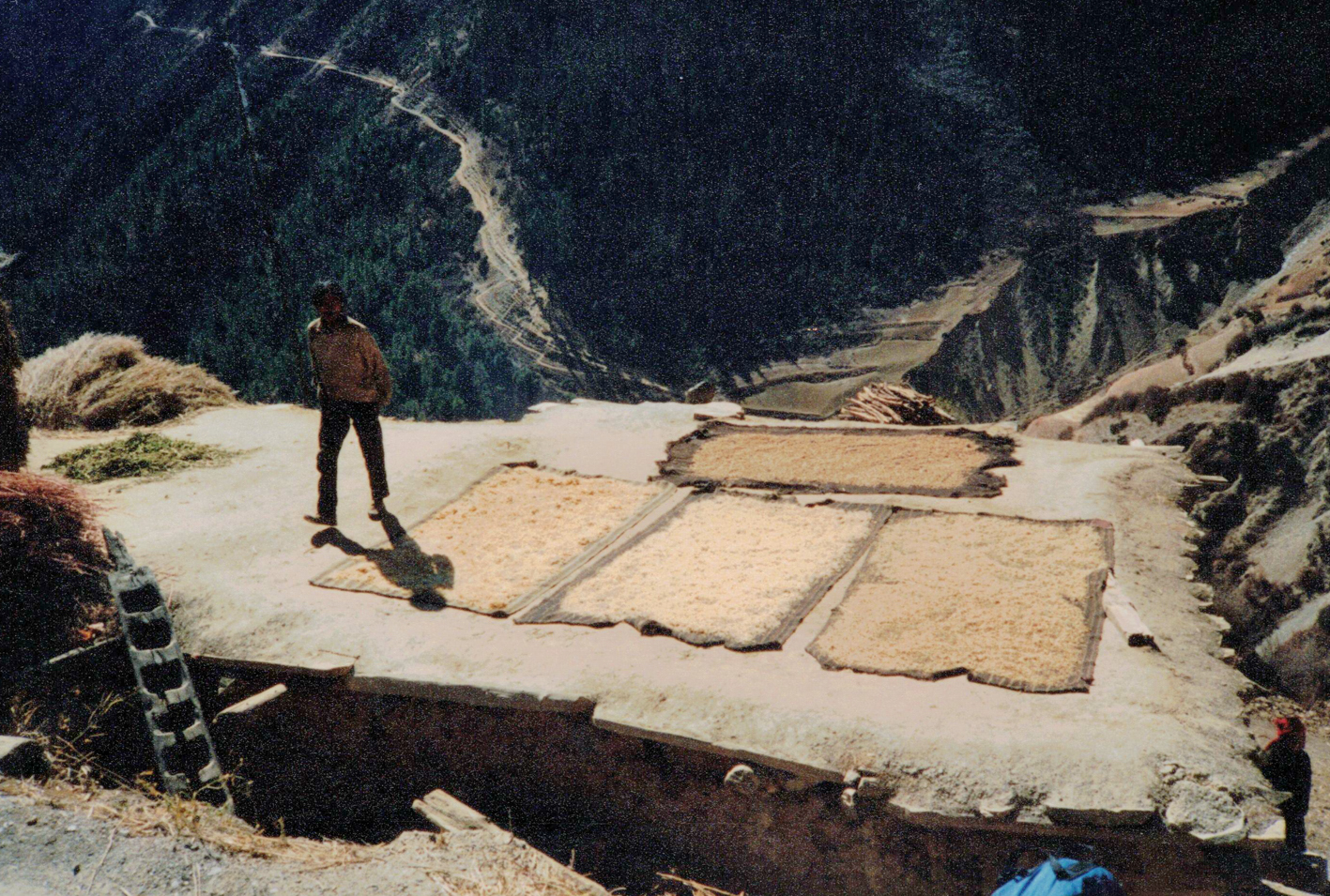
Le toit des maisons construites en pisé est plat. Pendant la belle saison ces toits sont utilisés pour sécher les céréales. Dans cette région au climat rude, seuls l’orge et le sarrasin peuvent être cultivés dans le fond des vallées. En hiver lorsque la neige envahit tout, les habitants circulent d’une maison à l’autre en passant par les toits.
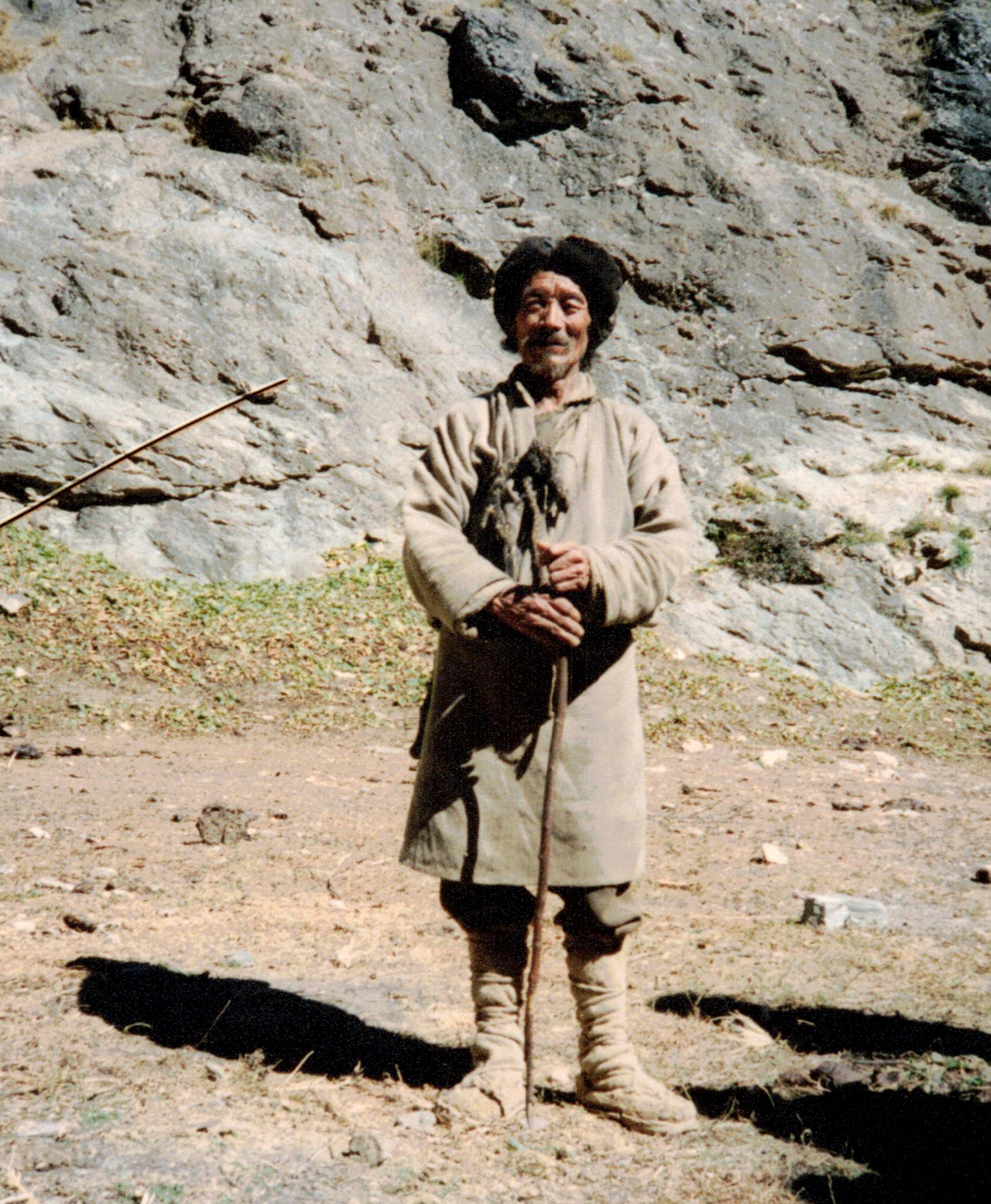
Mail runner
Pema nous avise qu’il va confier du courrier à un « mail runner ».
Un Népalais qui est à même de parcourir rapidement de longues distances pour acheminer lettres et autres documents. Ces personnes peuvent courir pendant plusieurs jours tout en dormant à la belle étoile. Nous nous empressons d’écrire.
Nous apprenons par la bouche de Shanka que le sirdar a décidé de laisser la tente-mess au village. La colère s’empare du groupe. Danou a dû sentir la contestation car on ne l’a pas revu de la soirée, occupé qu’il était à boire des coups avec Pema et à draguer au village.
25 octobre
Finalement, la tente-mess est pliée et chargée sur un yak. Le chemin parcouru il y a quatre semaines à l’aller me paraît encore plus beau. Les couleurs sont magnifiques. Des buissons rouges, des pins vert foncé, des champs aux chaumes roux et des montagnes couronnées de neige.
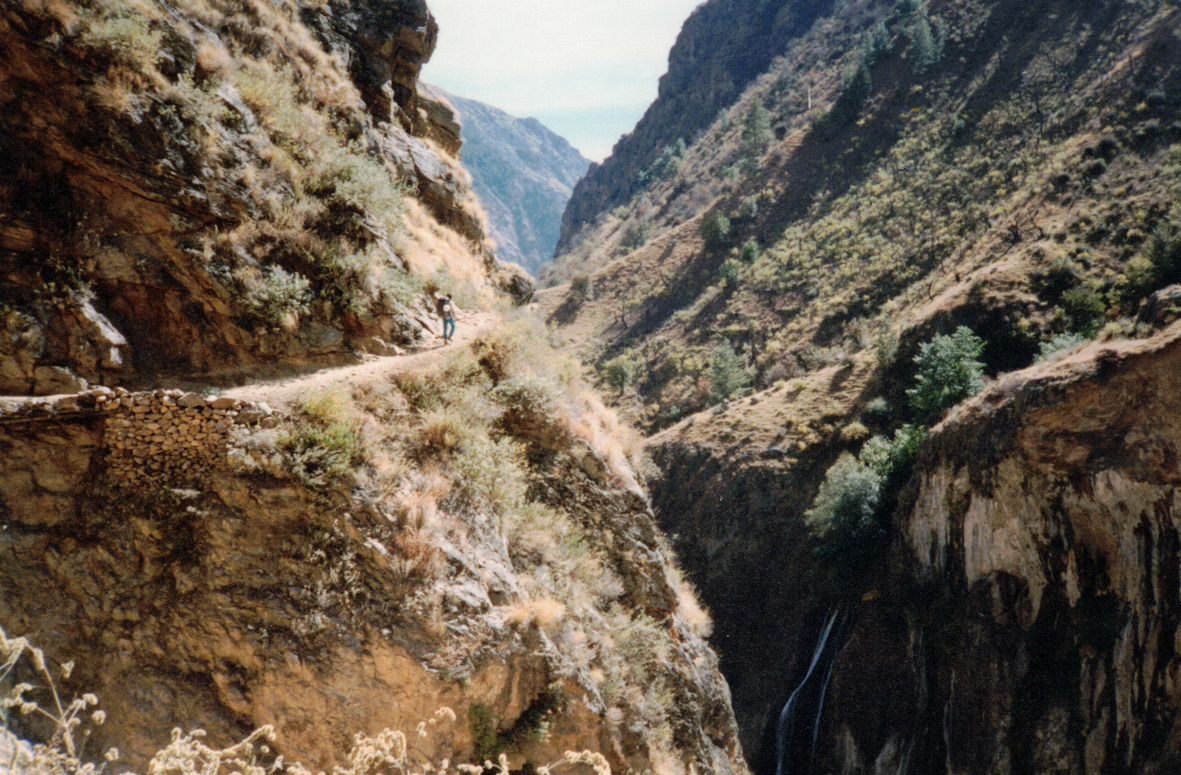

La rivière que nous longeons nous offre un havre de fraîcheur bienvenue. Nous nous y arrêtons deux bonnes heures, les pieds dans l’eau la tête au soleil, comme le riz.
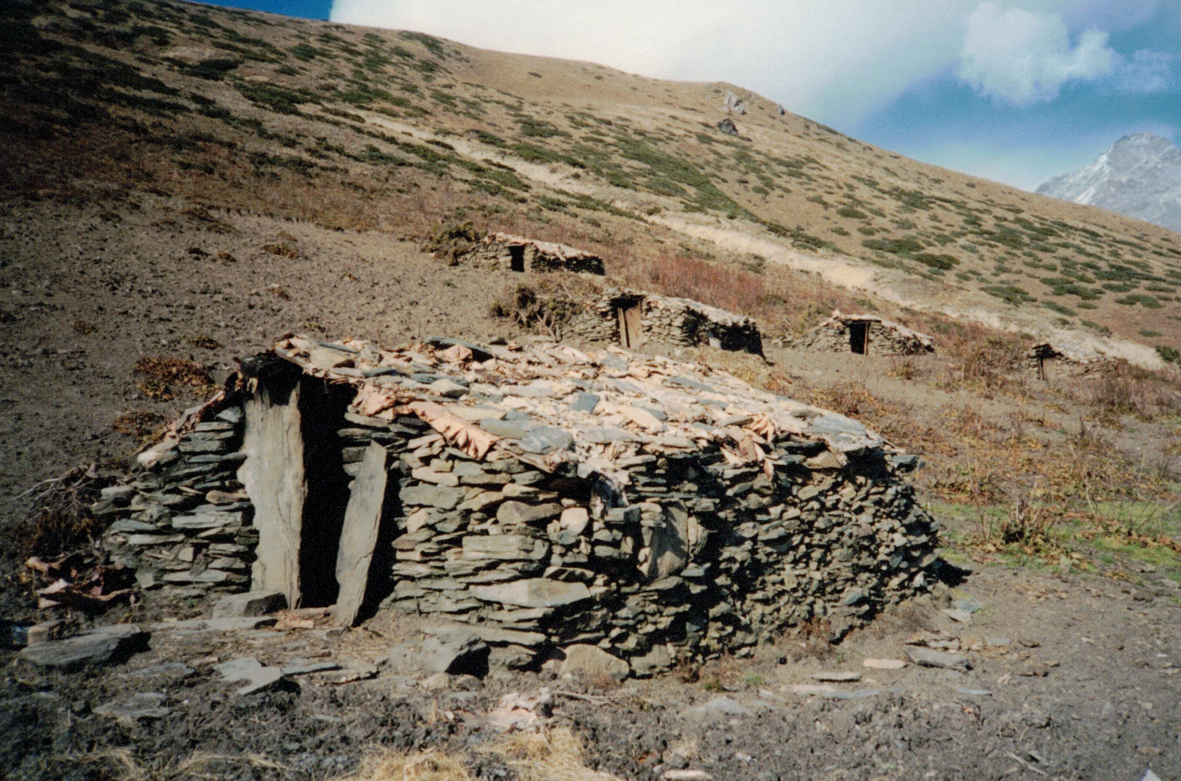
C’est à cet endroit que la caravane de yaks de Chala, revenant des pâturages de Saïna, nous croise.
Quelques jeunes yaks ont du mal à traverser par le gué. Pour qu’ils ne se fassent pas entraîner par le courant, des yaks adultes se placent en aval et offrent leur masse comme point d’appui aux petits.
Les hommes, les enfants et même les femmes (jeunes) se prêtent volontiers à des séances de photos. Pour nous remercier de leur avoir offert une photo « instamatic », deux jeunes filles nous offrent trois poignées de petites boules de fromage, très dur, à sucer.
Après trois heures de marche effective nous atteignons l’alpage de Tothorya. Les yaks avec leur charges arrivent une bonne heure après nous.
Heureusement, Passang est monté avec la hotte de la cuisine ce qui nous a permis de boire le thé en attendant.
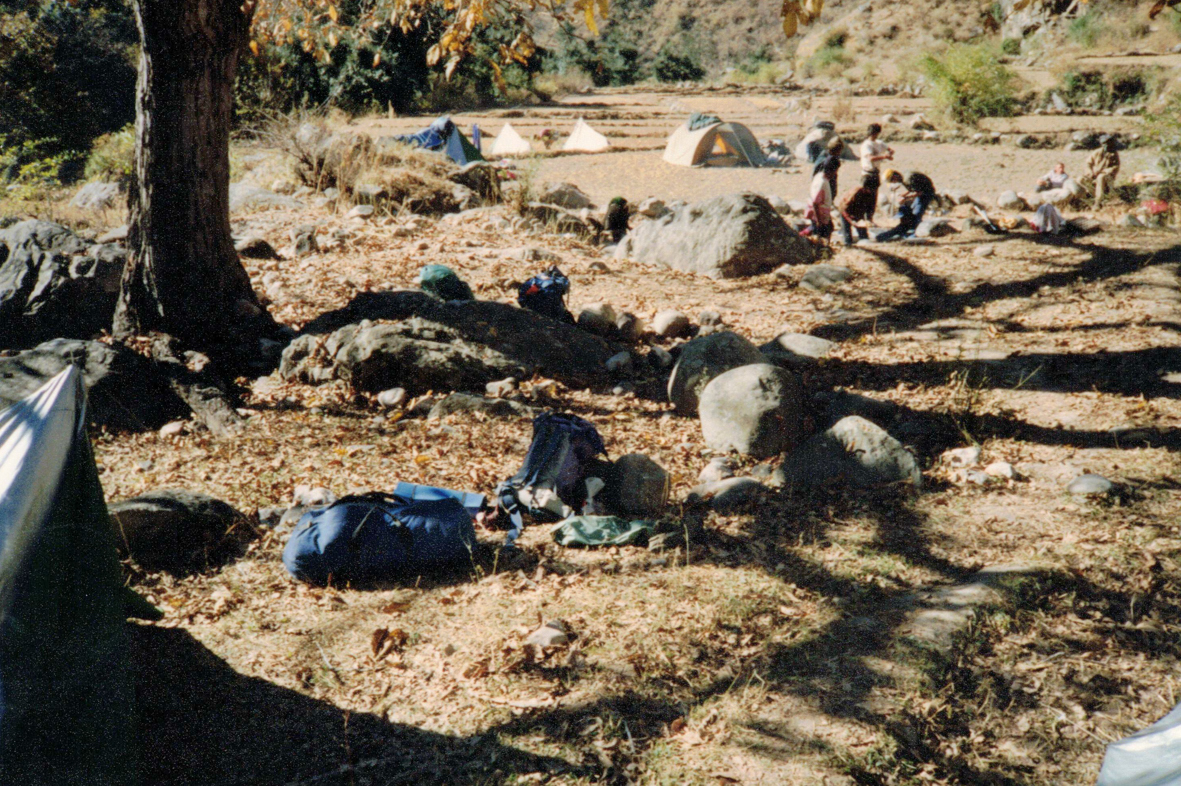
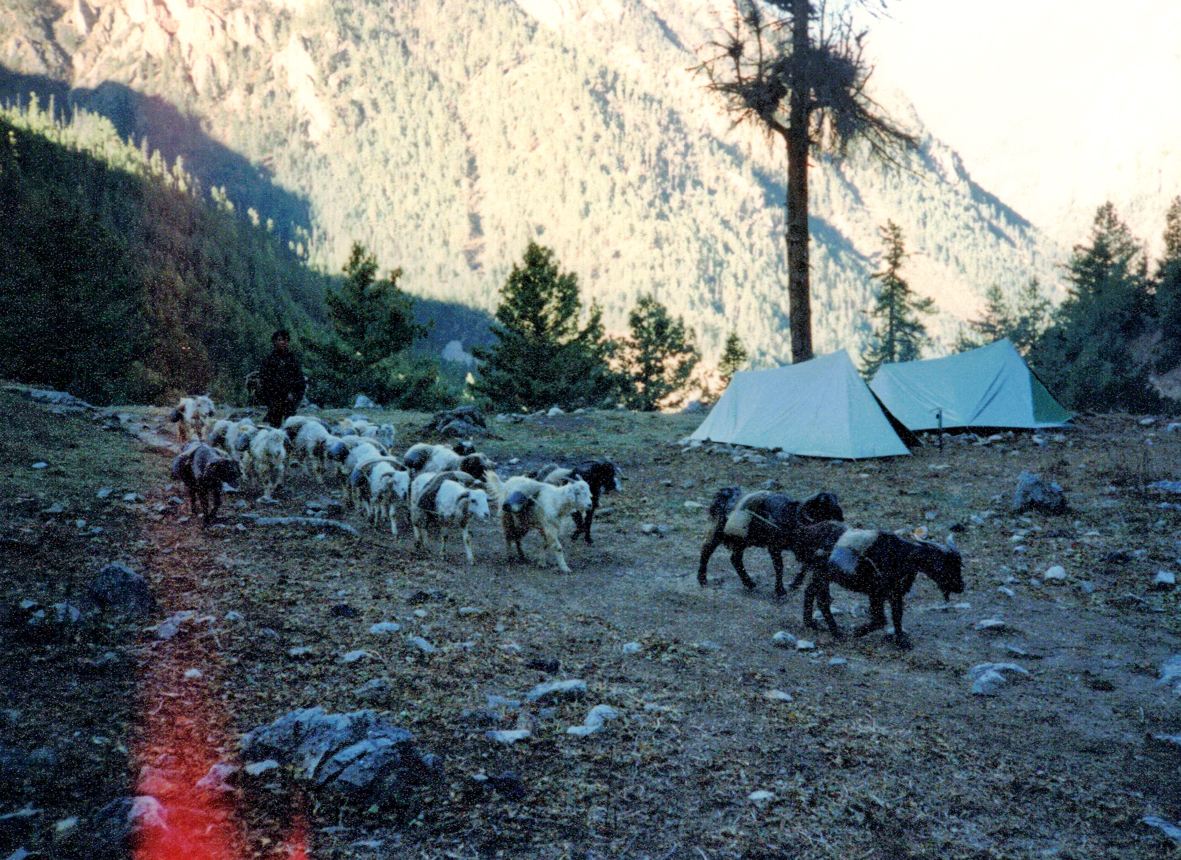
26 octobre
Un bruit de clochettes me fait sortir de la tente.
C’est encore une procession de chèvres transportant de chaque côté de leur flanc des petits sacs de jute à fond de cuir rempli de sel.
Une fois le sel arrivé dans le sud, il sera troqué contre du riz qui partira vers le nord.
Nous sommes à 3650 m. d’altitude et il nous faudra franchir un col, le Chanka-Lagna, à plus de 4700 m.
Pour nous donner des forces, le cuisinier sur ma demande prépare un « dal bhat ». Plat à base de riz blanc avec des lentilles.
A 400 m. en contrebas du col nous nous arrêtons au sommet d’une crête, près de quatre maisons en pierre auxquelles manque le toit. C’est là que nous rejoint Danou qui a passé la nuit à Chala à boire du Chaang (sorte de bière locale). Le camp est installé au bord d’une vaste cuvette où serpente un bras du torrent.
A 18h, une communication avec Gaston nous apprend que Jacques Montaz, accompagné de Tendi Sherpa est parvenu au sommet du Saipal à 15h15.
L’expédition est donc réussie.
La section genevoise du CAS a ouvert une nouvelle voie dans l’Himalaya !
Lire le récit en pdf
27 octobre
Journée consacrée aux lavages en tout genre. Georges, prévoyant, a tendu une corde à linge entre des bâtons de ski. A midi nous partons faire une balade sur l’une des croupes herbeuses qui ceinture le plateau. Un vent glacial souffle du sud et nous voyons le Saipal pris dans la nébulosité. Un aigle tourne au-dessus de nous. Nous apercevons également trois mouflons. Vers le sud-est, la vue s’étend sur plus de 100 km et va buter sur la masse imposante du Kengi Roba.A quelques 1200 m. en-dessous de nous s’étire la plaine de Saïna. En descendant la crête d’une moraine je tombe sur un replat avec des huttes de bergers de yaks. Constructions basses en pierre, avec une porte comme seule ouverture, sans cheminée, couvertes d’écorce de bouleaux et de pierres plates
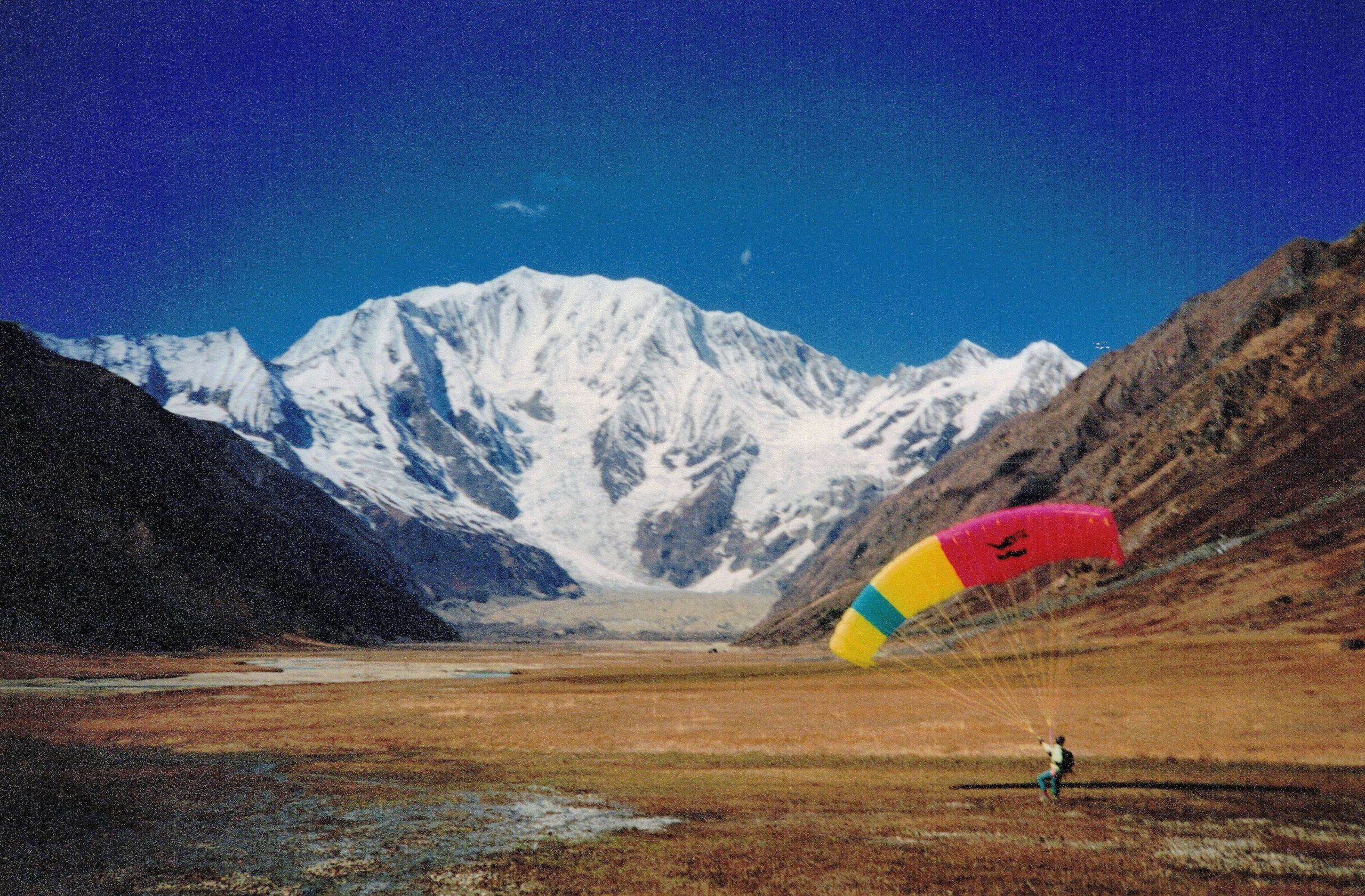
28 octobre
Nous décidons de descendre dans la plaine de Saïna pour aller observer la face est du Saipal. Alex et Christophe décide de monter afin de nous rejoindre en parapente. Nous les voyons faire des essais de gonflage pour décoller sitôt les conditions de vent favorable. Ils partent.
Alex descend assez vite vers nous mais une chute de portance à 20 m. du sol lui fait manquer l’aire d’atterrissage et il se pose dans un marécage.
Je me précipite vers lui pour l’aider à rabattre la voile tant le vent au sol est fort.
Après un casse-croûte nous reprenons le sentier du retour. A mi-chemin je sens venir le coup de pompe dû à une hypoglycémie. Je croque une barre énergétique qui me permet de gravir l’épouvantable sente à chèvres qui me ramène au camp.
Des cris et des éclats de rire me font sortir de la tente. Christophe est en train d’initier Danou et Shanka au gonflage de la voile. Les yakmen se tiennent à distance, pas très rassurés.
29 octobre
La lune est en phase croissante et la demisphère nappe le paysage d’une lueur argentée. Il est 04h30 et je suis sorti du duvet pour une urgence. Plus tard, le « morning tea » de Passang a du mal à me tirer des bras de Morphée.
Après le diner Alex organise une séance photos pour nos sponsors.
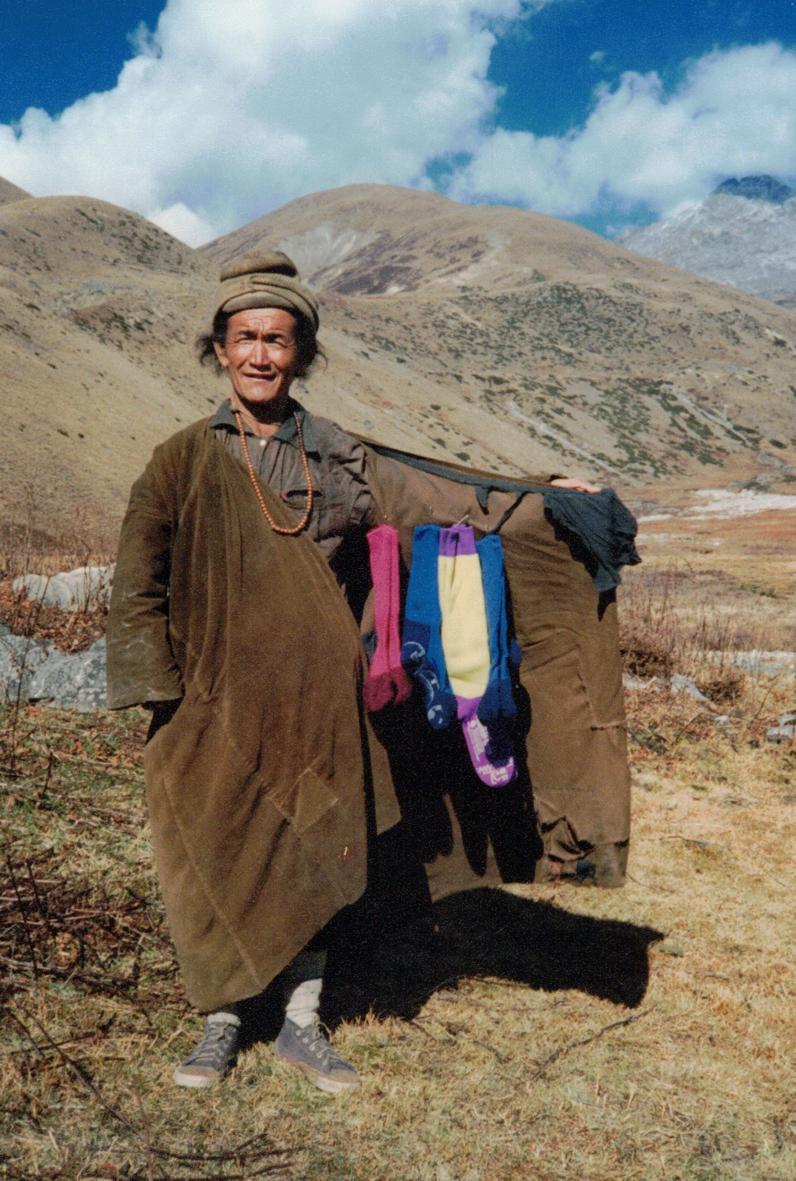
Pour Rohner, nous accrochons des chaussettes à l’envers du manteau d’un yakman.
Il écarte le pan et nous présente la marchandise à la sauvette !
Nous décidons de partir demain pour Chala, avec un jour d’avance sur le programme. Le soir, Temba voit descendre deux lampes depuis le col. Nous pensons tout de suite à Gaston et Jacques. Il s’avère que se sont des Tibétains avec deux guides népalais qui vont vers le sud.
30 octobre
Ciel partiellement couvert. Georges décide de rejoindre le col en passant par les crêtes. Je me résous à le suivre, évitant par là et la poussière du chemin normal et la compagnie de l’officier de liaison autrichien vraiment odieuse. Nous gagnons rapidement de l’altitude, mais par la suite, nous perdons du temps à zigzaguer entre des buissons nains qui font un bruit d’aluminium froissé sous les pieds.
Au col, le vent nous glace et nous plongeons sans attendre vers les 1200 m. de descente qui nous attendent.
Nous inaugurons un nouvel itinéraire pour éviter le sentier des yaks qui est vraiment raide, en dévers, et couvert d’une poussière pulvérulente qui tapisse les narines et crisse sous les dents.
J’arrive le premier au camp et me régale d’un café très allongé et sans sucre que Passang a eu la bonne idée de préparer. Cette fois ça y est, la réserve de sucre est épuisée. Je me réconforte en pensant à la petite boîte d’Assugrin que j’avais eu la perspicacité de glisser dans mes bagages au départ de Genève.
Pour monter les tentes nous bataillons contre un vent violent. Sitôt la première sardine plantée, le vent tombe et le soleil refait son apparition.
Quelques propos timidement avancés concernant l’évolution du temps me font prendre conscience que mes compagnons, tout comme moi, se demandent s’il nous sera possible d’échapper à d’éventuelles chutes de neige. D’après les locaux, si chutes de neige il y a, celle-cis ne devraient pas être importantes. En fait, le vrai mauvais temps ne s’installe qu’à mi-décembre voire en janvier.
C’est à partir de ce moment-là que toute vie s’arrête jusqu’en avril. Les villages d’altitude amassent bois et provisions pour hommes et bêtes afin de pouvoir vivre calfeutrés pendant trois à quatre mois.
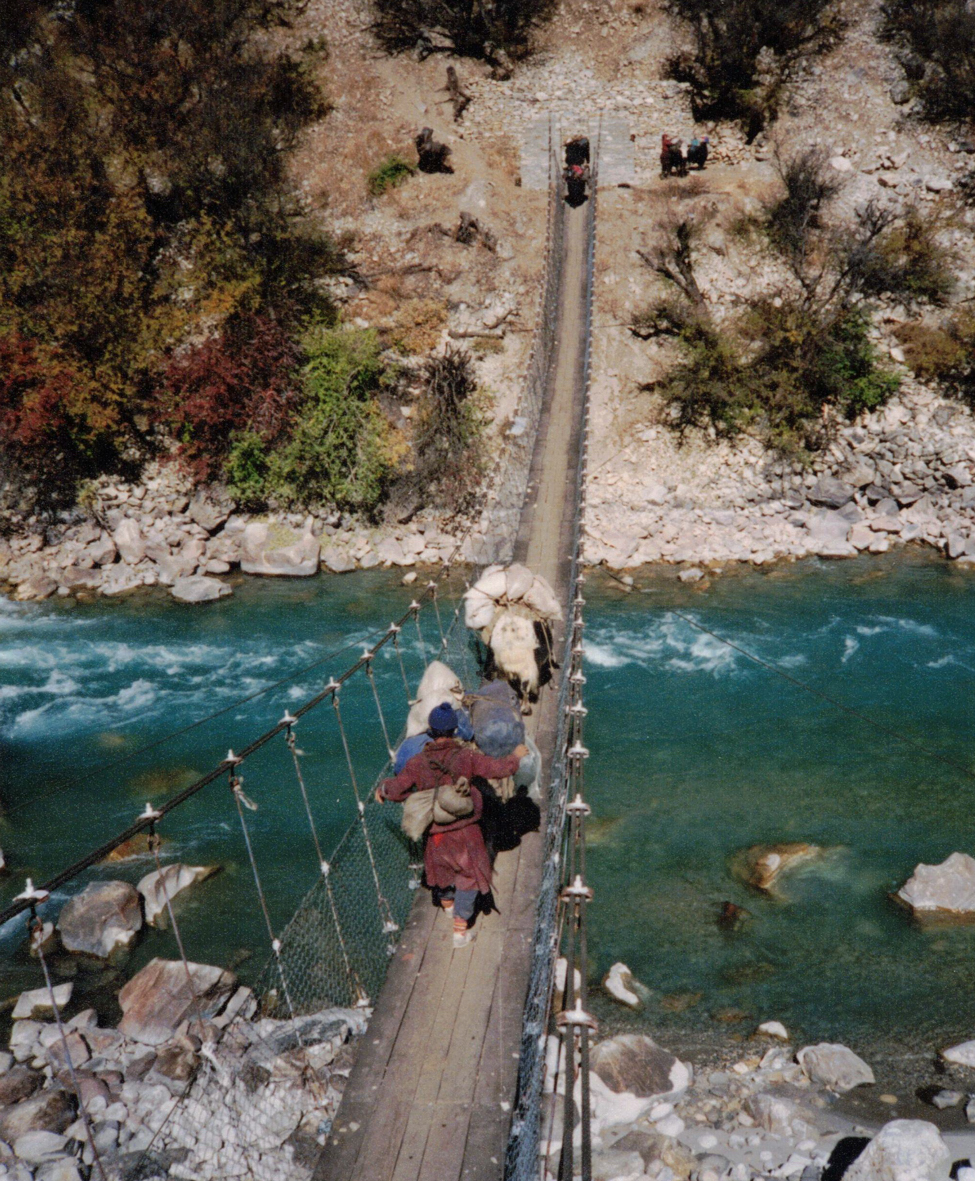
L’apport d’une expédition comme la nôtre est loin d’être négligeable.
Un yak se loue 300 Rps soit deux fois le prix d’un porteur car il transporte deux charges.
Dix jours de location rapporte donc 3000 Rps au propriétaire, soit la somme nécessaire pour acheter un yak supplémentaire.
Il est 17h et le froid devient vif. Curieusement, c’est mon stylo à bille qui fait office de thermomètre : l’encre se fige de plus en plus et il commence à bégayer. Il est temps d’enfiler doudoune et bonnet. A partir de ce moment, ma vie au camp se déroule selon un processus immuable.
Ecriture ou lecture tant que la clarté déclinante du jour le permet.
L’obscurité venue, vers 18h, je ferme la tente et à la lueur de la frontale je prépare la gourde pour l’eau chaude du soir, les deux cachets d’Aspirine à prendre pendant le souper, les mouchoirs en papier pour la nuit ainsi que les boules Quiès.
Ceci fait, je rentre mes mains à l’abri du sac de couchage et attend l’appel de la soupe.
Après le repas, je rempli la gourde avec de l’eau chaude et la place au fond du sac vers mes pieds.
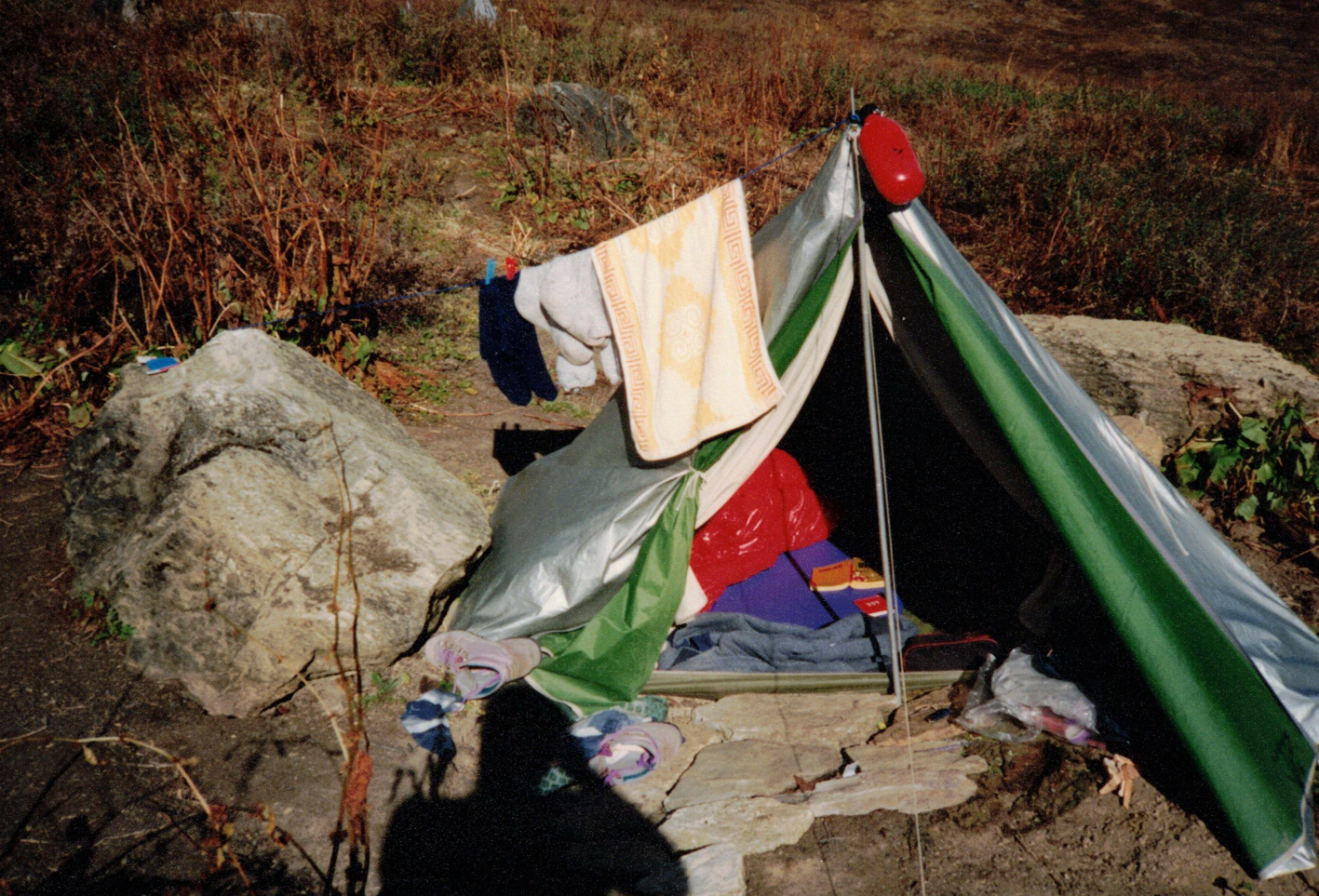
Je m’habille pour la nuit, allume la bougie, et déguste quelques carrés de chocolat (chocolat acheté avant le départ et planqué dans le sac de voyage). Puis je me brosse les dents et me glisse dans le sac de couchage en espérant que le liquide absorbé en abondance pendant le souper ne m’obligera pas à sortir de la tente plus d’une fois au cours de la nuit.
Ce soir, la discussion s’est éternisée pour savoir s’il a été opportun d’envoyer quelqu’un à Muchu afin d’essayer de faire avancer notre vol au départ de Simikot. Un échange de point de vue sur le même sujet aura lieu le lendemain en présence de Gaston et Jacques. Quant à moi, je partage le point de vue de Georges selon lequel il n’est pas sage de précipiter notre arrivée à Simikot dans l’espoir de gagner un, voire deux jours, avec le risque important de devoir traîner quatre jours sur place à attendre le vol.
Comme chaque soir, deux feux de camp brillent dans la nuit. Celui des yakmen et celui de notre cuisinier autour duquel se rassemble les sherpas. Autant le premier est calme et paisible, autant du second nous parviennent éclats de voix et rires.
Les yakmen sont autonomes. Ils transportent leur propre nourriture et cuisinent dans leur coin. Galettes de céréales, céréales grillées, parfois un peu de riz, le tout accompagné de thé salé au beurre de dri.
31 octobre
Les sherpas, de nouveau, déploient la bâche du petit déjeuner à l’ombre, alors que l’herbe est encore couverte de givre. A quelques mètres de là le soleil réchauffe déjà la prairie. Je leur demande de déplacer la toile. Il est curieux de voir à quel point les notions de confort simple, pour ne pas mentionner l’organisation générale, leur fait défaut. Les mêmes remarques s’étendent au respect du matériel et à la prévoyance. Ils agissent comme si le présent était l’ultime instant et que le passé et le futur n’existaient pas.
Départ à 10h30 et arrivée à Chala à 13h. En cours de route, Georges a eu le loisir de s’ébrouer dans la poussière tel un moineau. Nous l’avons surpris à la rivière en train de laver la poussière qui le recouvre des pieds à la tête.
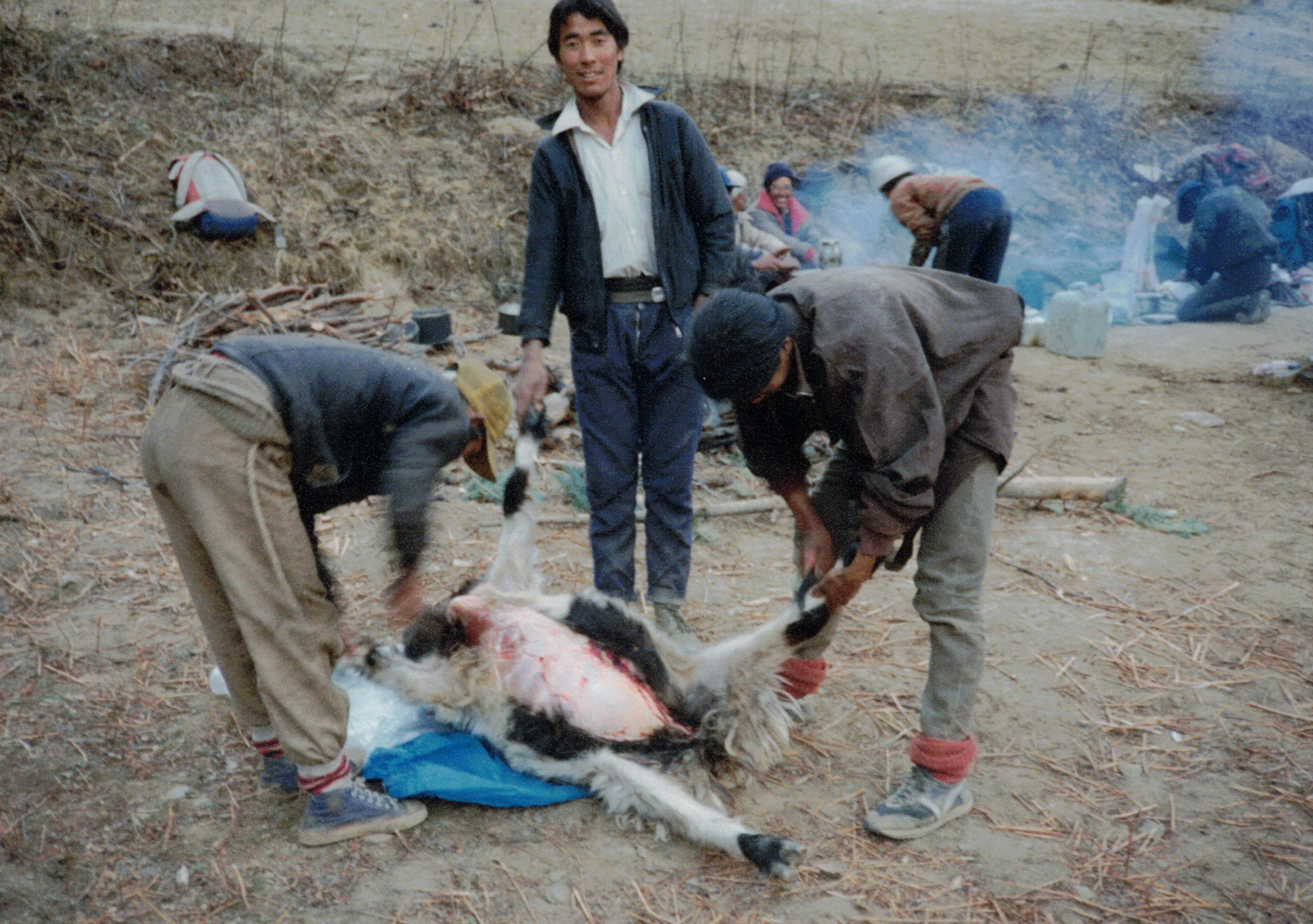
Comme promis, le mouton était là. Il a été vidé, écorché et coupé en quatre.
Il sera transporté le lendemain dans un sac en jute jusqu’à Pouilla.
C’est à cet endroit que nous fêterons la réussite de l’expédition.
Enfin, en début de soirée, Gaston et Jacques regagnent le campement sous les applaudissements et les félicitations pour avoir atteint le sommet du Saipal.
Pour fêter l’événement le cuisinier nous prépare un gâteau au chocolat.
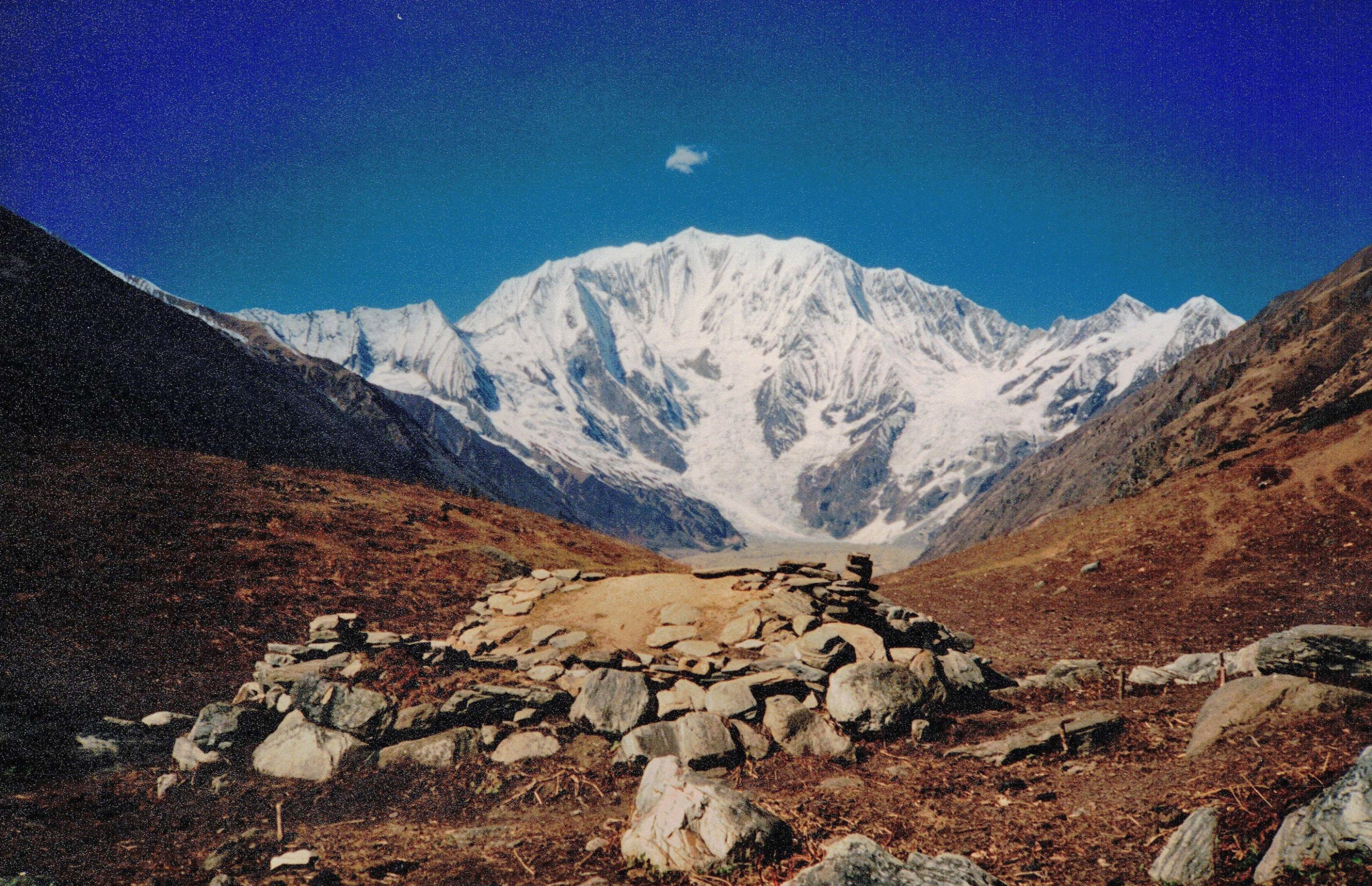
Face est du Saipal
vue depuis Saïna
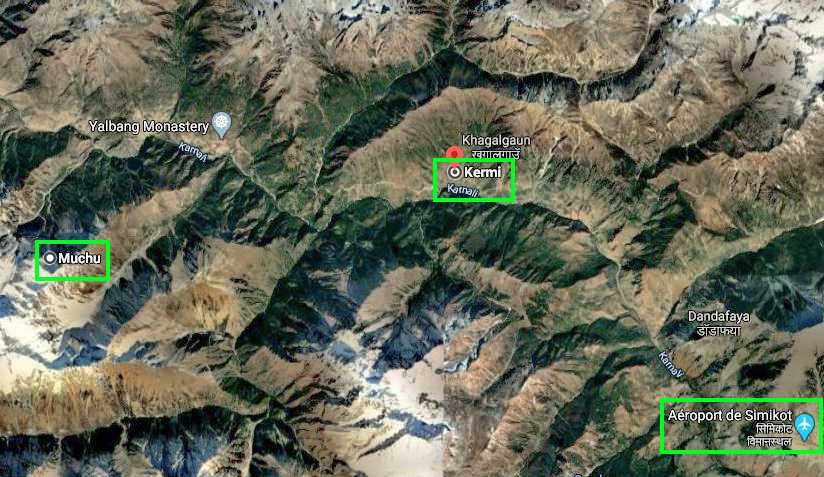
Pokharel envoie un messager à Muchu afin que le poste de police du coin puisse informer le ministère, la police et Pabil Treks (tous trois à Katmandou) de la réussite de l’expédition.
De son côté, Danou envoie un messager à Simikot pour confirmer notre vol vers Nepalganj. Ce dernier a également pour mission de ramener quelques nourriture pour la fin du trek. Il devrait nous retrouver à Kermi qui est notre étape suivante.
Aux dernières nouvelles, le roi du Népal est sommé d’avaliser la dernière constitution. S’il ne le fait pas, nous redoutons des troubles. Pokharel nous rassure, les étrangers ne risquent rien.
1er novembre
Nous traînons un peu car le chemin jusqu’à Pouilla n’est pas long. Alors qu’à 11h. Danou et les yaks ne sont toujours pas là, Georges se fâche et part pour les débusquer. Le sirdar se fait houspiller. Il rejoint le camp tout penaud et un peu pompette.
Pokharel et moi sommes invités, par le seul adolescent qui ait obtenu l’équivalent de notre certificat d’études à venir visiter sa maison.
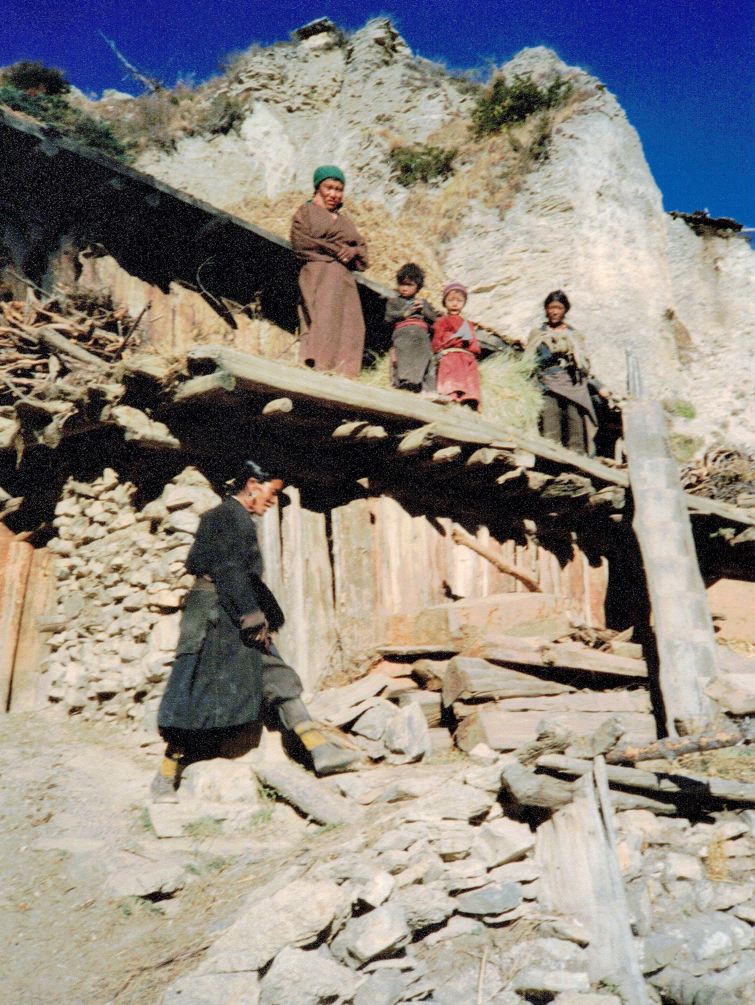
De ruelles en terrasses nous arrivons devant une maison relativement cossue.
Elle est bâtie sur deux étages.
Au rez-de-chaussée les bêtes, à l’étage, auquel on accède par un tronc d’arbre dans lequel sont taillées des marches, on trouve une petite pièce un appentis et la pièce principale.
Cette dernière est très sombre, car seule une petite ouverture pratiquée dans le plafond laisse pénétrer un peu de jour. Cette ouverture fait en même temps office de cheminée.
Le centre de la pièce principale est occupé par un foyer ouvert.
Contre l’un des murs on devine un bas-flanc et contre un autre quelques étagères.
Des jarres contiennent l’eau.
Tous les murs et le plafond sont noirs de fumée.
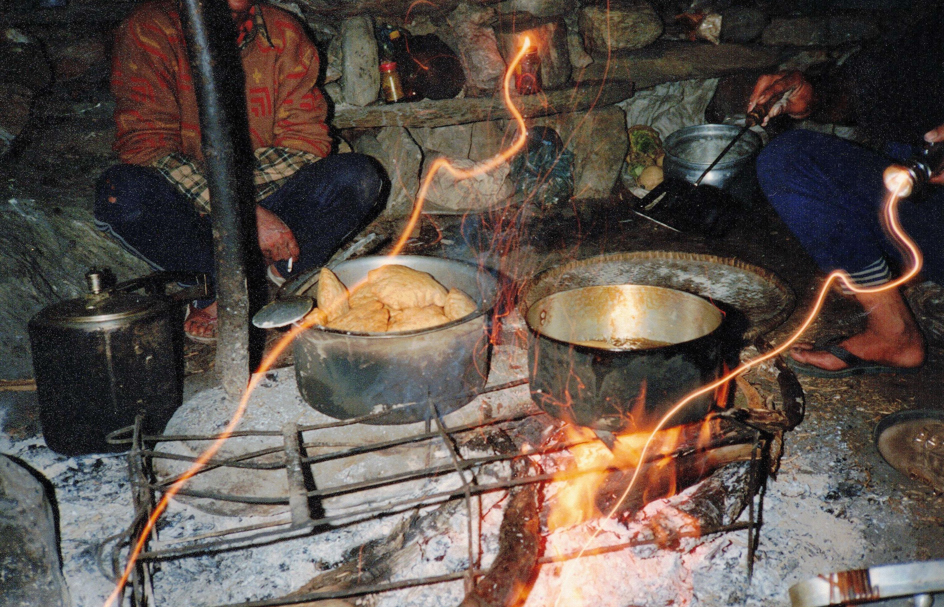
La mère est assise en tailleur près du feu de bois et allaite le dernier-né des neuf enfants. Elle sert son mari qui occupe la meilleure place.
Le petit-lait et le thé tibétain nous sont offerts dans de petits bols chinois en faïence qui témoignent d’une certaine aisance. On nous fait goûter une galette de blé noir obtenue d’un village voisin contre du sel. Sel qui provient du proche Tibet, à deux jours de marche.
Nous apprenons que le village compte 362 habitants, qu’il y a 36 familles et environ 500 yaks. Nous apprenons également que le fils aîné, celui ayant quinze ans et le certificat, sera marié dans quelques jours à une fille du village suite à une série de tractation entre les deux familles.

En ressortant, nous retrouvons Geneviève qui, comme d’habitude est entourée d’adultes et d’enfants en quête de soins et de jouets.
Pendant ce temps, Christophe a survolé le village en parapente en créant la sensation, l’étonnement et parfois la crainte.
Nous poursuivons en direction du col à 4300 m.
Après la pause nous plongeons en direction de Pouilla. Hameau de quelques maisons déjà déserté pour l’hiver et qui se situe au fond de la vallée où coule la Karnali 700 m. en contrebas.
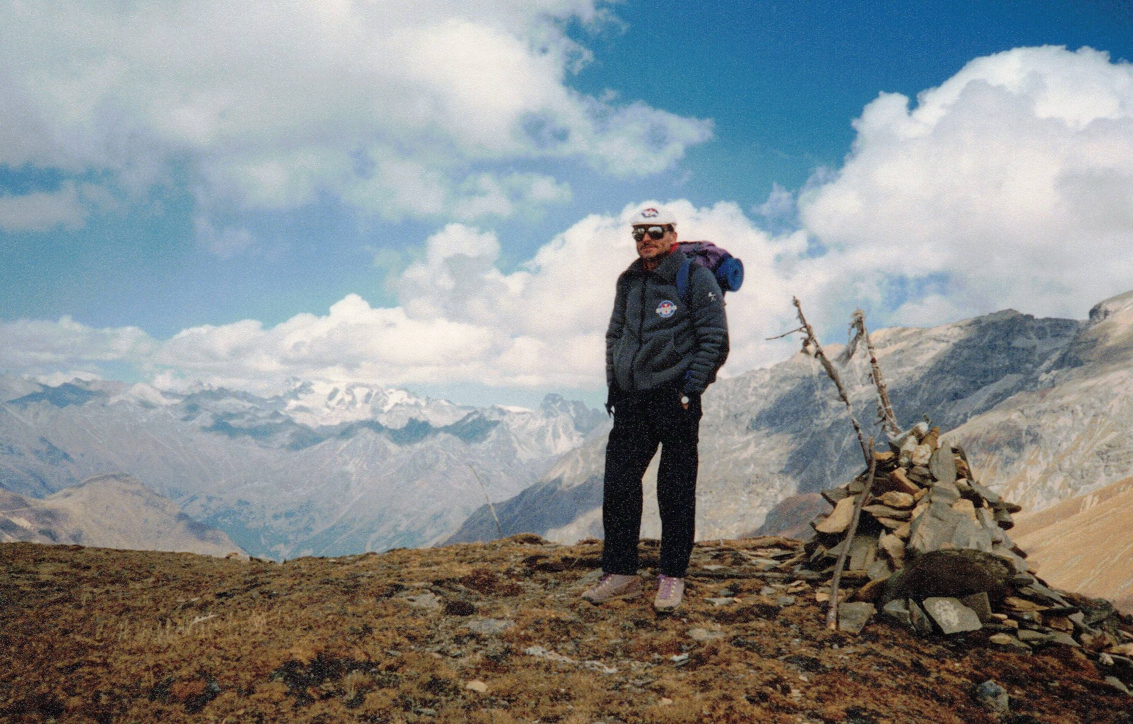
Depuis là partent deux pistes. L’une remonte vers Muchu, village frontière avec le Tibet, l’autre longe la rivière en direction de Kermi.
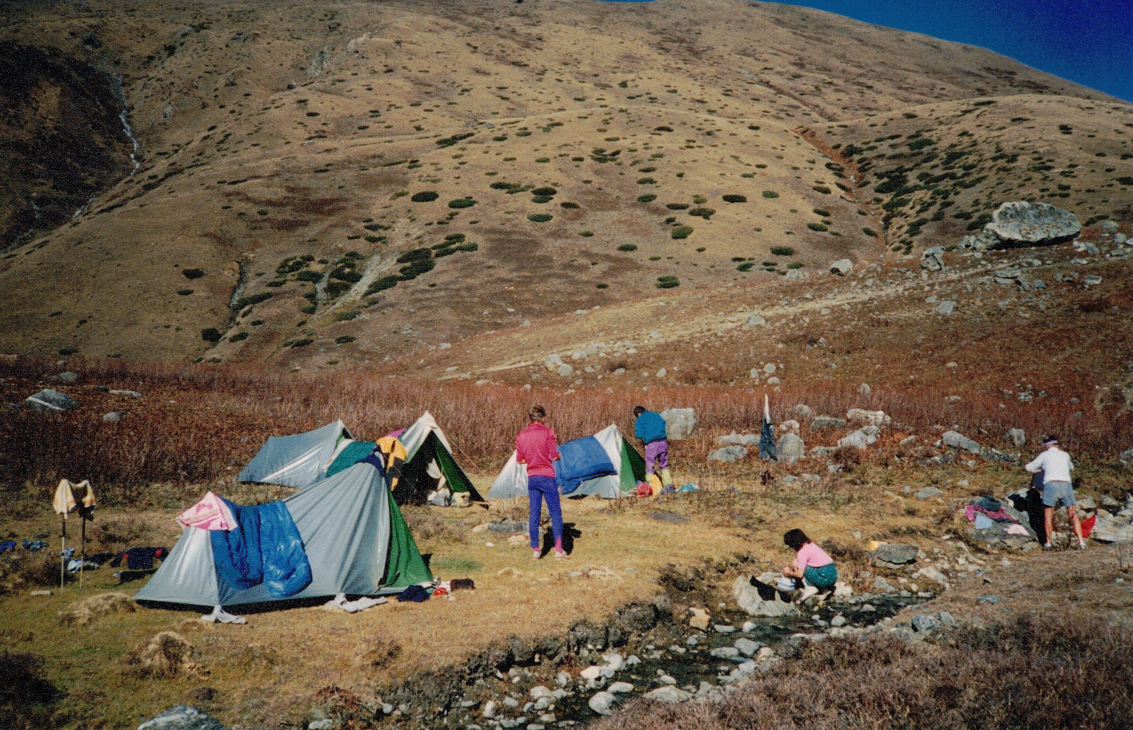
Nous plantons nos tentes à l’emplacement de deux champs de céréales fraîchement coupés.
Les yaks arrivent peu après. Nous apprenons que l’une des bêtes a perdu pied dans la descente et que son chargement a dévalé la pente pour se perdre parmi les pins et les rhododendrons qui couvrent le flanc de la montagne. Demain les yakmen essaieront de retrouver les bagages.
Nous fêtons à nouveau l’ascension du Saipal en débouchant une bonne bouteille de whisky achetée par Alex lors de notre escale à Francfort. Vu l’heure tardive, il est décidé de griller le mouton le lendemain pour le diner. La viande est suspendue au mas de la tente-mess pour la soustraire aux éventuels prédateurs.
Gaston qui a dignement fêté la veille le succès de l’entreprise a le teint jaunâtre et se contente d’un « Saipal tea ».
2 novembre
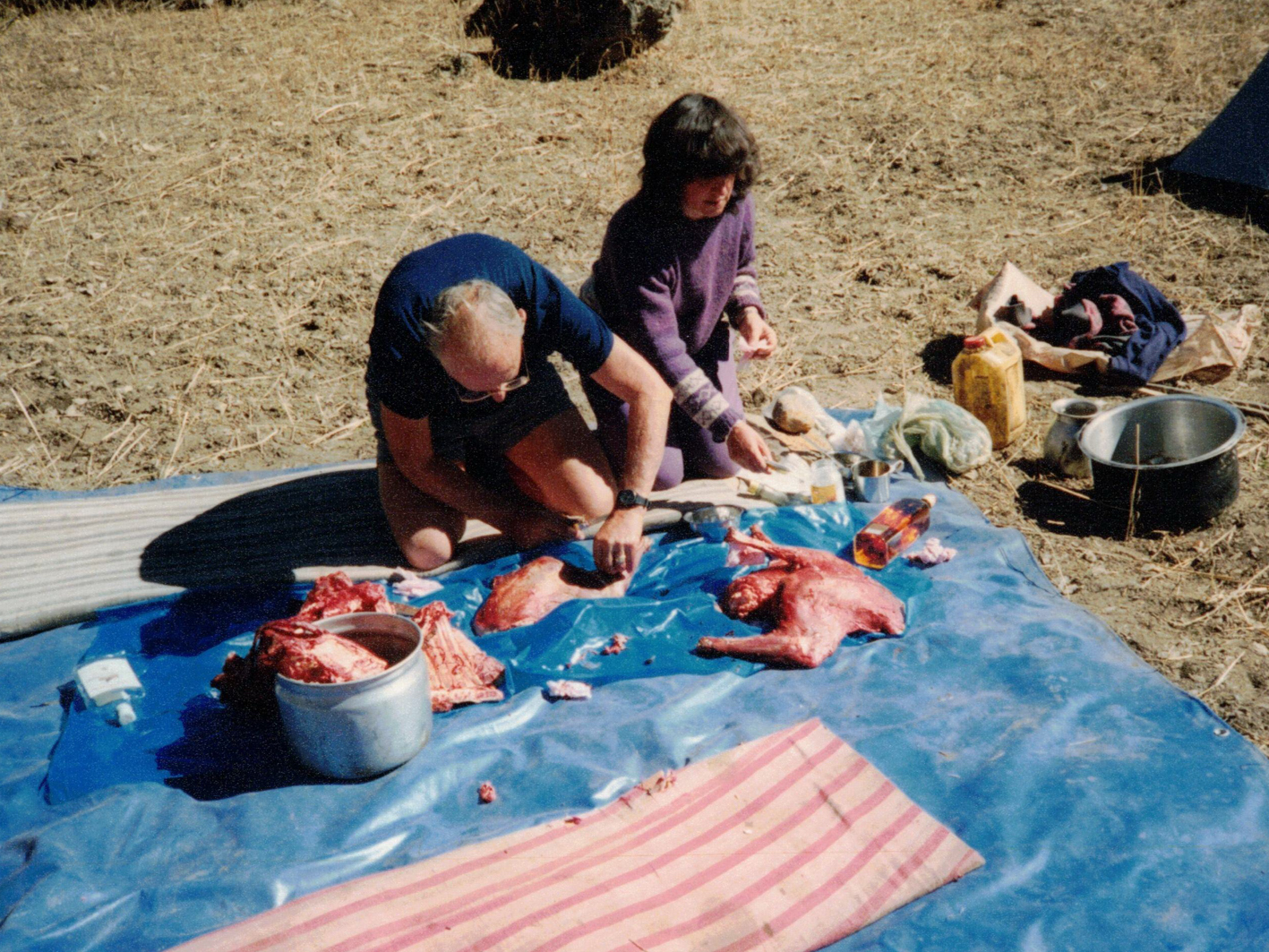
Geneviève et Georges préparent les pièces de viande.
Nettoyage, badigeonnage à l’huile, massage aux herbes aromatiques, truffage à l’ail et… injections de whisky (pour aseptiser ?).
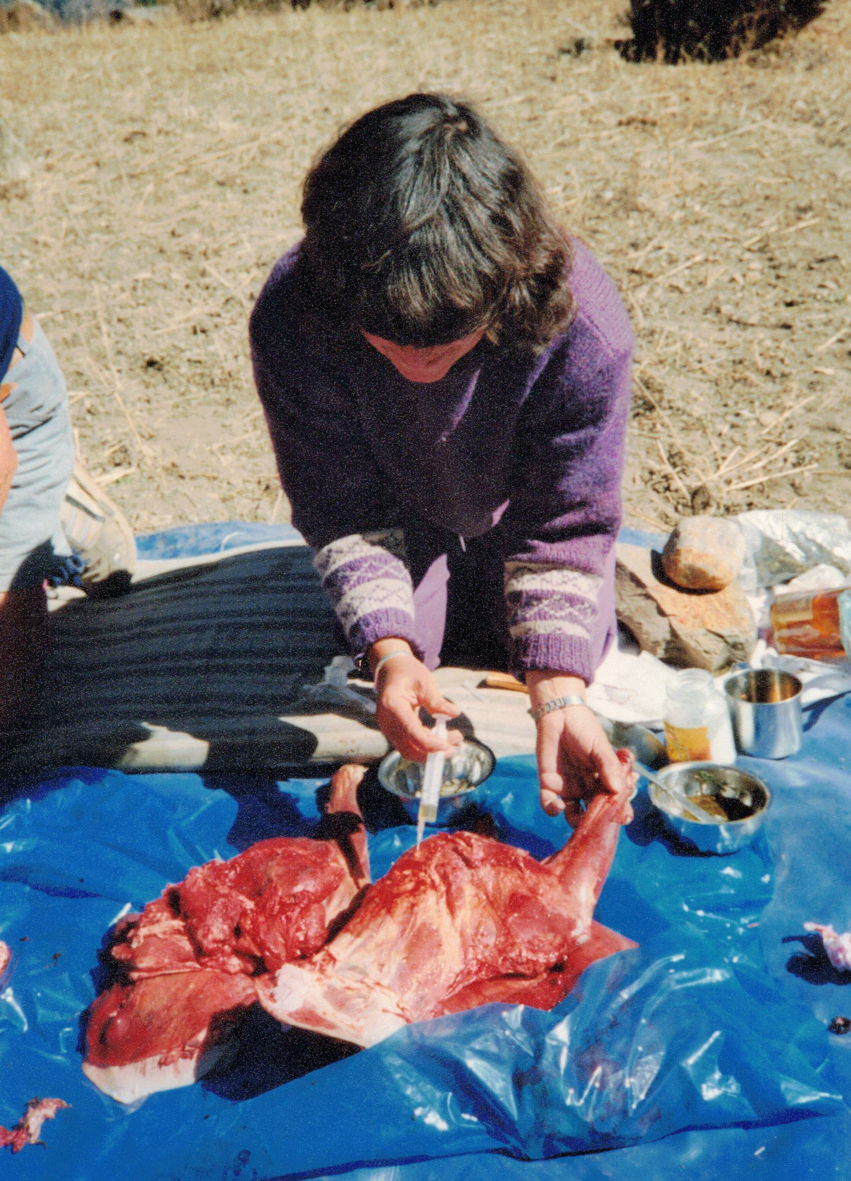
Shanka creuse un trou rectangulaire dans lequel il place la cage à oeufs qui nous servira de grill et allume un grand feu pour faire les braises. Nous dégustons un délicieux mouton accompagné de pommes-de-terre en robe des champs.
Il est décidé de faire une liste du matériel que chacun de nous est prêt à offrir au staff népalais et une certaine somme d’argent sera mise de côté pour récompenser notre officier de liaison pour sa coopération et sa courtoisie.
J’apprends aussi que le kilo de viande se vend autour de 70 Rps. étant donné que le mouton nous a donné treize kilos de viande, les 1000 Rps (soit environ CHF 8.-) payés pour l’animal me semblent correct.
Nous soupons léger. Une heure après les agapes, le cuisinier nous convie à prendre le thé. » J’espère qu’il y aura des biscuits » dis-je en plaisantant. Ce n’était pas une plaisanterie juste le reflet d’une certaine connaissance des us et coutumes du peuple népalais.
La soirée est égayée par un échange de vue, vif mais courtois, entre Geneviève et Jacques sur les qualités respectives des médecines orientales et occidentales. Ce soir c’est la pleine lune et l’ambiance est magique.
3 novembre
Réveil à 7h, soit une heure trente avant l’apparition du soleil. Il est très difficile de sortir du sac de couchage. La journée sera longue, il faut partir tôt. Les yaks partent à 9h et nous à 9h30. Nous les dépasserons peu après.
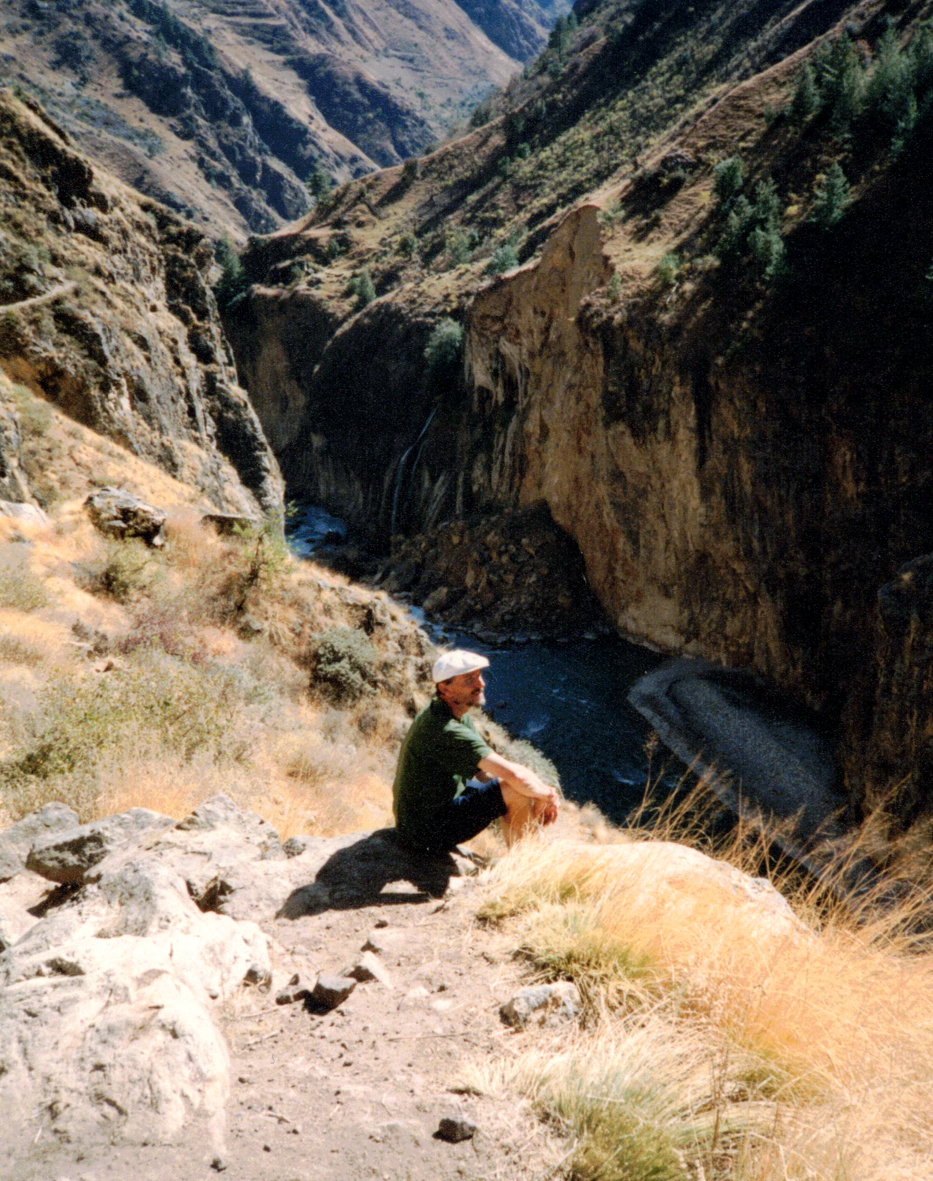
La descente vers la rivière Karnali est superbe. Depuis Yalbang jusqu’à Kermi le cheminement est tout aussi beau. De nouvelles essences d’arbres apparaissent. Des noyers et des abricotiers sauvages.
De l’ancien pont il ne reste que deux ancrages.
Il a été remplacé par un pont suspendu en amont de la rivière.
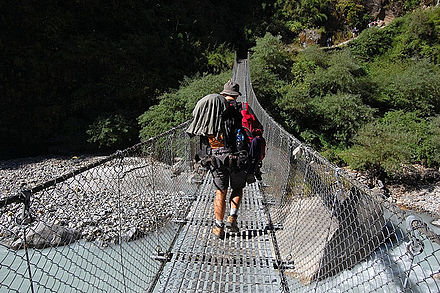
Nous vivons là un des épisodes hilarant de notre trek.
Les yaks qui ont peur de cette passerelle mouvante se refuse à l’emprunter. Les yakmen doivent s’y mettre à quatre pour faire traverser une bête. Cette une véritable bataille entre l’homme et l’animal.
Un des yak, voyant cet affrontement, échappe à la vigilance et saute à l’eau avec tout son barda. Il nage, lutte contre le courant et finalement réussi à prendre patte sur l’autre rive. Les bagages prennent l’eau et parmi eux se trouve mon sac de matériel.
En montant vers Yalbang, au détour d’un sentier, nous tombons sur un moulin à eau et une belle surprise. Il abrite une jeune meunière en train de moudre du grain.
Au village nous sommes accueillis par Pema qui nous présente son épouse.
Comme dans chaque village traversé Geneviève prodigue des soins.
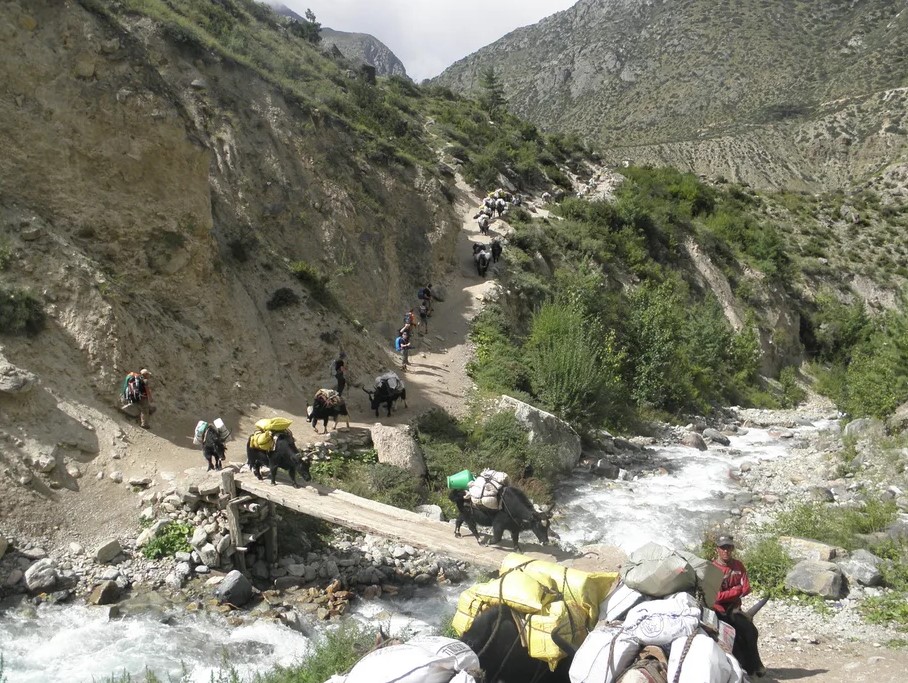
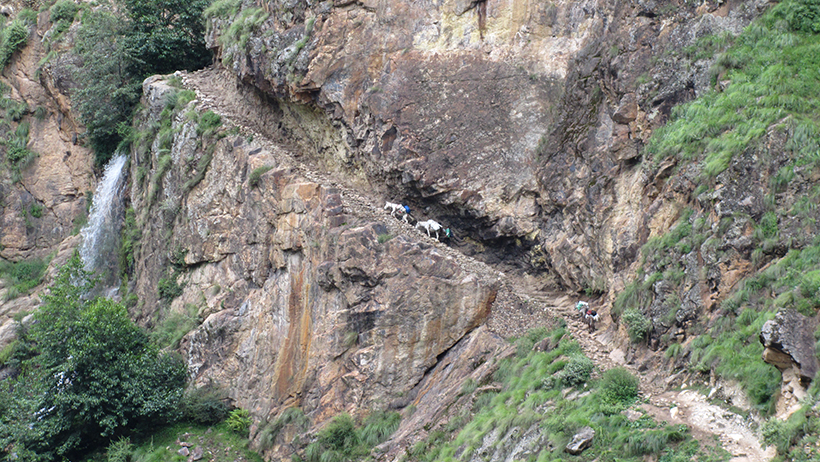
Après la pause de midi, nous entamons le passage clé une sente taillé à flanc de rocher.
Il y a deux ans les yaks devaient être déchargés pour pouvoir traverser.
Cette fois cela ne fût pas nécessaire car le passage a été amélioré.
Puis nous rencontrons un enfant borgne qui nous propose des noix. Gaston lui offre un carnet et un crayon. Le gamin est tout de suite adopté et surnommé « Vendredi ». Il ne lâchera plus son carnet jusqu’à Kermi.
A la bifurcation, Gaston part à gauche vers Kermi pour rendre visite à un lama (chef religieux) et surtout à sa jeune sœur ! Nous ne le reverrons plus de la soirée. Georges et moi, poursuivons le chemin de Dara Pori, à la recherche d’un emplacement pour le camp. Ringi est là aussi. Il est revenu le jour-même de Simikot en six heures de marche en nous apportant trois kilos de sucre et en nous certifiant avoir envoyé le télégramme demandant à ce que le jour de notre vol soit avancé. Nous sommes cependant très septiques quant au résultat. La compagnie qui gère les vols intérieurs au Népal porte d’ailleurs le nom de ARNAC.
4 novembre
Le camp de Kermi est bien placé et le soleil nous réchauffe déjà dès 7h. Vu la chaleur qu’il fait pendant la journée (25°), les yakmen de Chala ne veulent plus continuer car leurs bêtes supportent mal ces températures.
Nous arrivons à obtenir trois chevaux et quelques dzos (mâle hybride d’un yak et d’une vache) à Kermi. Dans le même temps, les yakmen de Chala réussissent à vendre leurs bols en bois et quelques cordes en poils de yaks à Alex et Christophe qui pensent avoir fait une bonne affaire.
En chemin nous croisons pas mal de monde. Cet axe paraît très fréquenté. Une halte dans une auberge (cahutte en bois) permet à Christophe d’offrir à Georges et moi un gobelet de thé au lait pour trois roupies (prix touristique).
Toute la journée nous longeons la Karnali. Un peu avant Dara Pori (Dara = source et Pori = derrière) nous dépassons le pont qui nous avait permis de traverser la rivière à l’aller et ainsi nous sûmes que la boucle était bouclée. Courte halte à Dara Pori où un autochtone nous vend des pommes à 1 Rps pièce. Puis descente vers un torrent affluent de la Karnali.
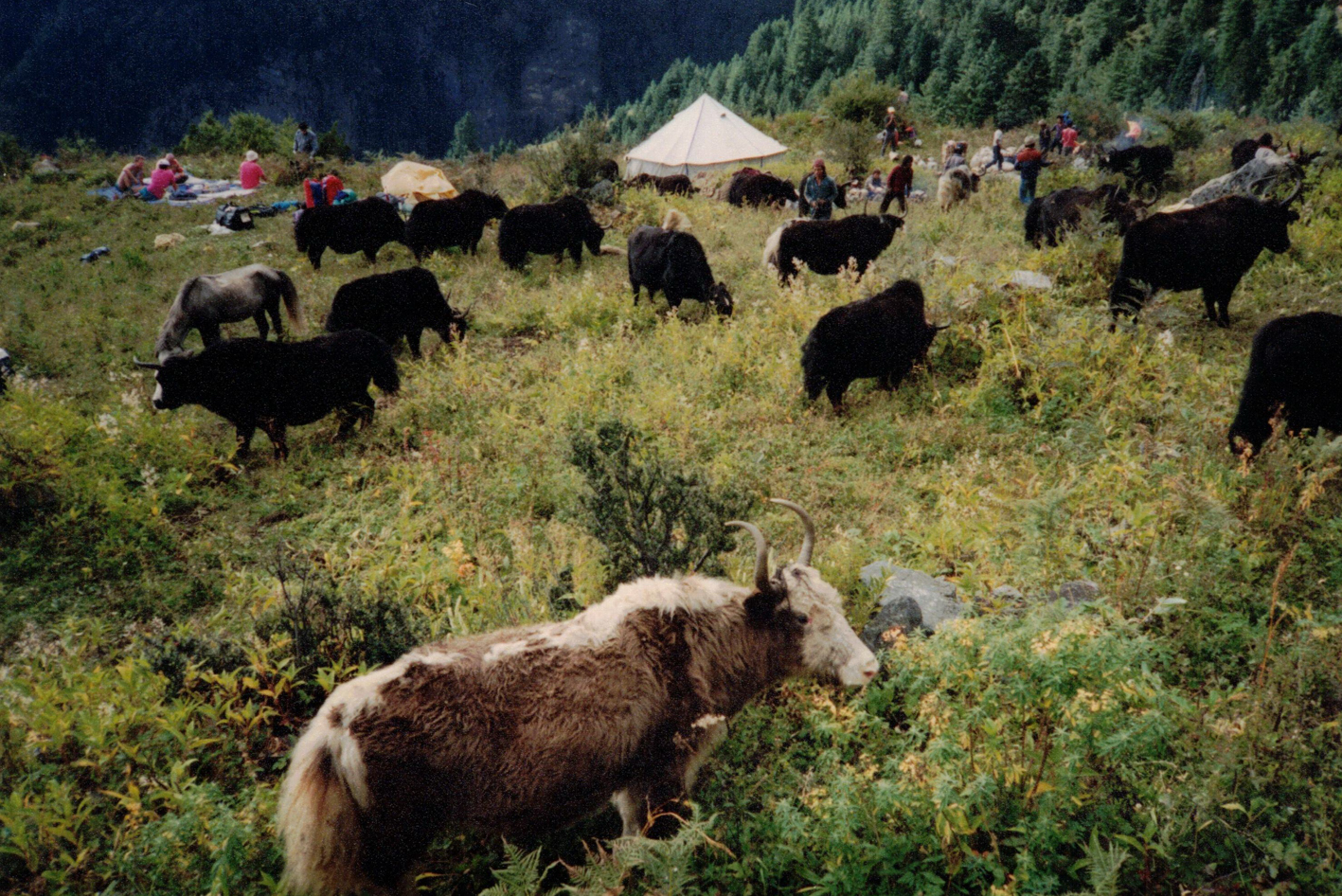
Le camp est monté. Il est 16h et nous sommes à 2800 m.
Sur un champ jouxtant le nôtre, un groupe de marchands avait déjà établi leur camp. Ils sont en route vers le Tibet avec un chargement de riz.
Nous sentons tous qu’il est temps de mettre un terme à notre voyage.
Hormis les petits bobos qui prolifèrent, nous constatons que le matériel fatigue et les habits malgré quelques lavages à l’eau froide commence à s’imprégner de l’odeur locale.
Aux nouvelles du soir de Radio Katmandou il est fait mention de la réussite de l’expédition
5 novembre
La montée au col à 3400 m. qui mène à Simikot est fastidieuse, mais la descente rapide car nous sentons déjà la bière humecter nos lèvres.
En route les sherpas ont acheté deux poules de course (une heure pour attraper la deuxième).
Lors d’une soirée, il est décidé d’inviter notre staff népalais à un souper à Katmandou pendant lequel nous distribuerions les « cadeaux » sous forme de matériel et habits.
Finalement nous quitterons Simikot le 8 novembre
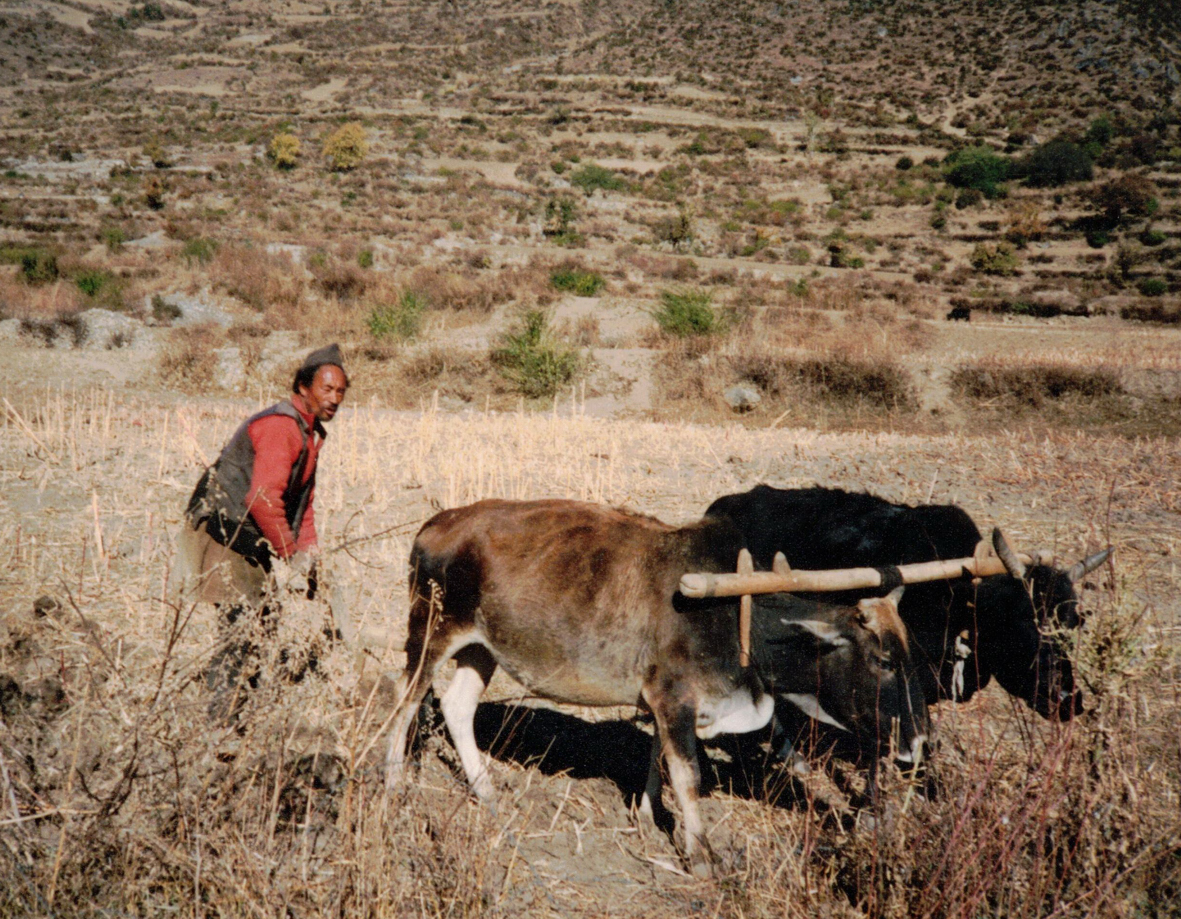
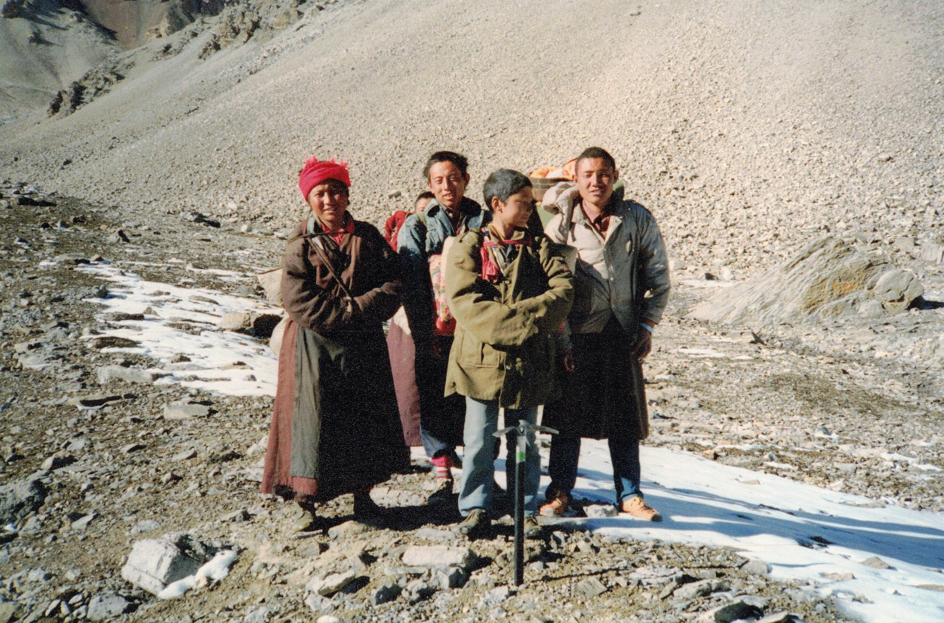
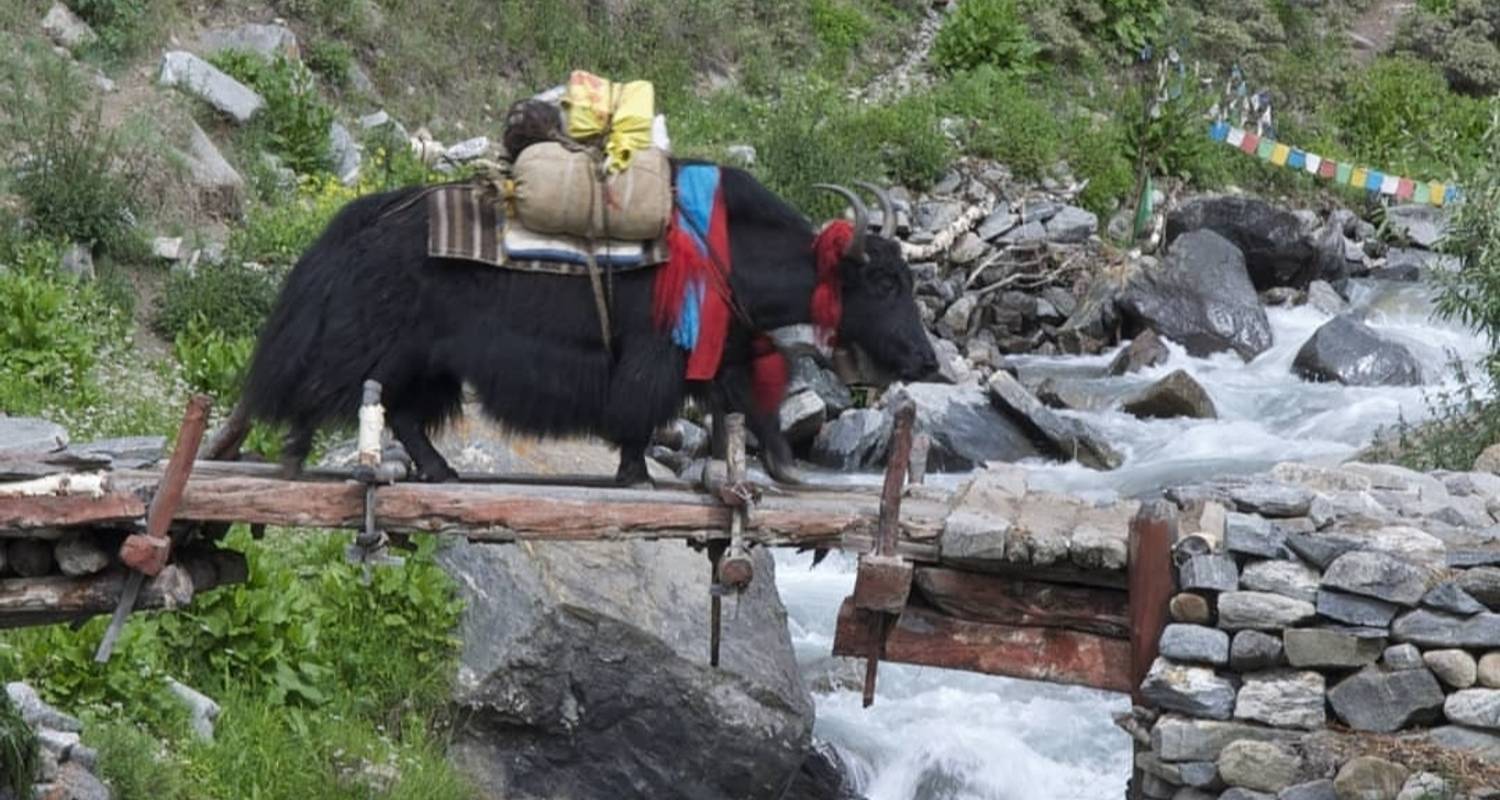
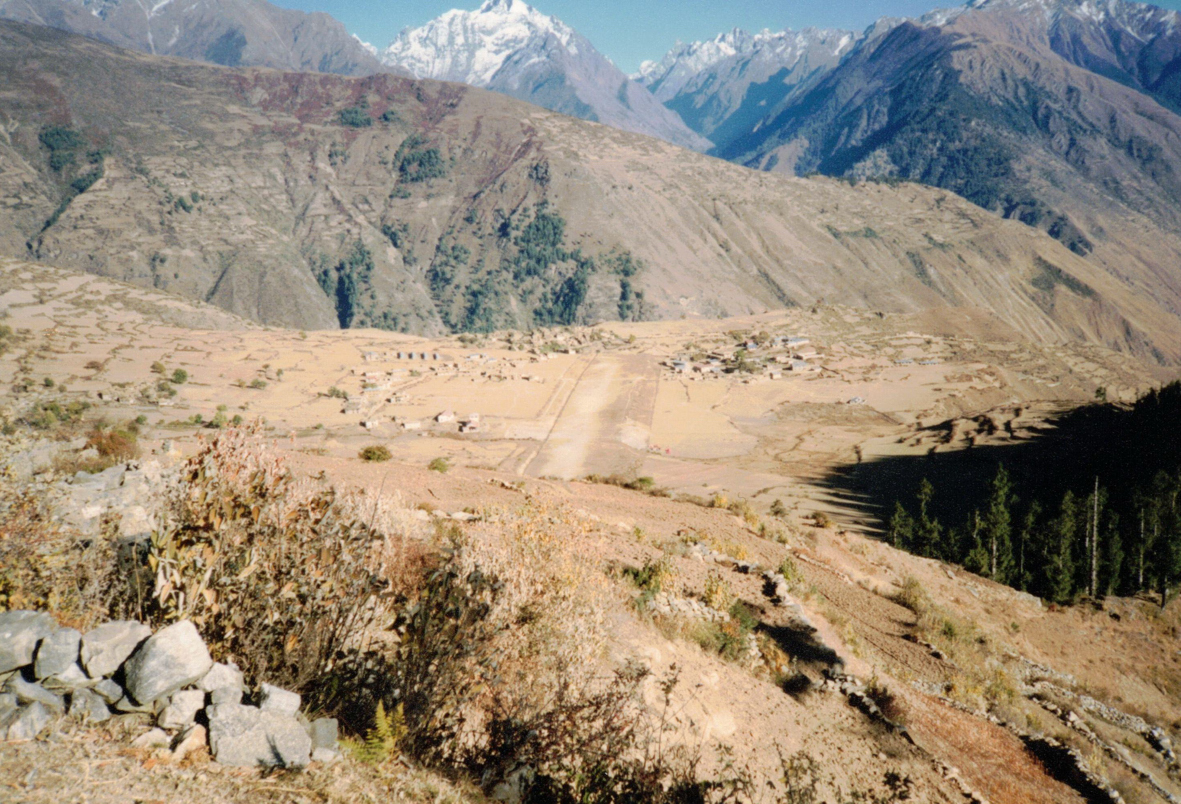
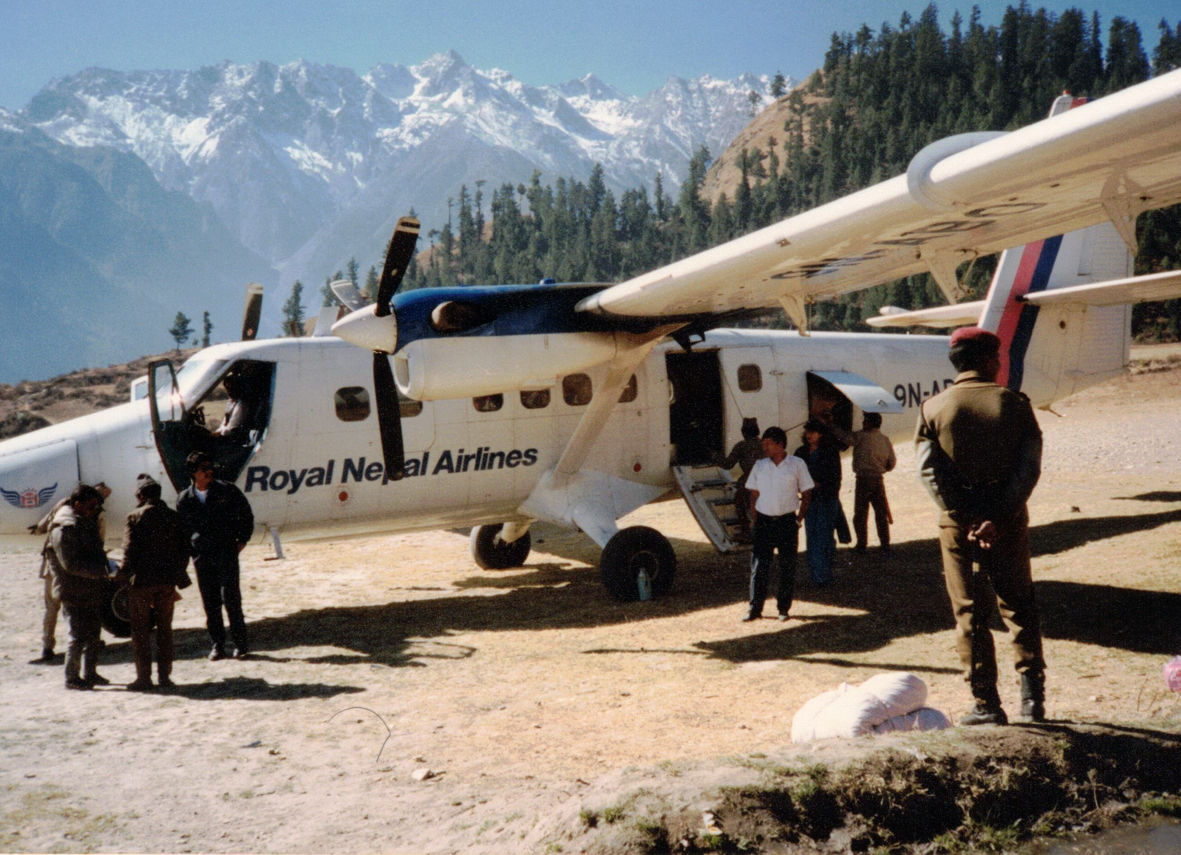

Introduction à l’alpinisme / Foreword to mountaineering
Introduction à l’alpinisme
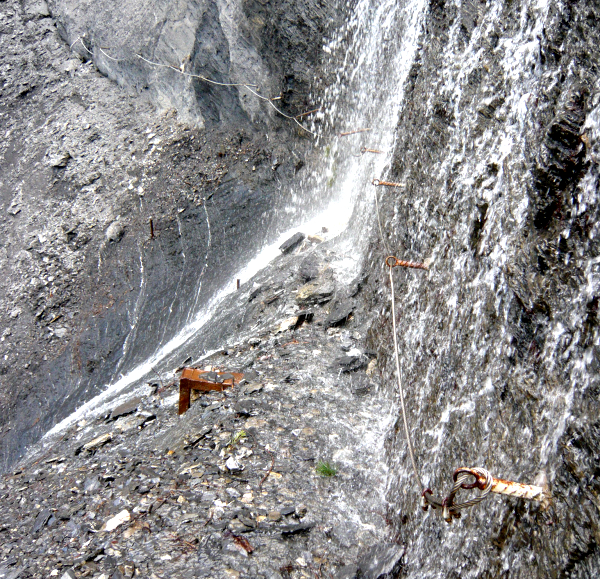
L’alpinisme, pris dans son sens le plus large,
est une activité variée et enrichissante
Varié, car il fait appel à un large éventail de connaissances et de techniques.
Enrichissante, car elle permet à ceux qui la pratiquent d’acquérir et de perfectionner ces connaissances et ces techniques et surtout de développer un certain nombre de qualités physiques et morales.
Mais c’est aussi une activité risquée
⇒ Suite à la disparition du permafrost prenez garde aux chutes de pierre !
« Grimpez si vous voulez, mais n’oubliez jamais que le courage et la force ne sont rien sans la prudence, et qu’un seul instant d’inattention peut détruire le bonheur de toute une vie. N’agissez jamais à la hâte, faites attention à chaque pas. Et dès le début, pensez que cela pourrait être la fin » Edward Whymper
Dans les chapitres suivants, j’essaierai de vous donner un aperçu des différents aspects de l’alpinisme d’été. C’est volontairement que je n’aborde pas l’alpinisme et le ski d’hiver, laissant à d’autres plus expérimentés le soin de vous en raconter les joies et les peines.
Mon intention n’est pas de traiter tous les aspects de l’alpinisme d’été de manière approfondie et exhaustive, et je n’ai pas les compétences pour le faire. Mon approche est plus pragmatique. Il s’agit de faire un inventaire aussi complet que possible des éléments qui composent cette activité, en mettant l’accent sur les points que l’expérience m’a permis de juger importants.
L’expérience dont je parle n’est pas celle d’un alpiniste de haut niveau. Pas de « premières », pas de « solos ». C’est l’expérience d’un alpiniste moyen, qui a fait de la moyenne et de la haute montagne par tous les temps, soit en tant que chef de course, soit en tant que participant. En fait, cela correspond aux aspirations de la plupart d’entre vous qui lisez ces lignes.
Dans les pages qui suivent, j’abandonne volontairement le terme « alpiniste » pour le remplacer par « montagnard« . Le mot « montagnard » me semble plus proche de la conception que nous avons de notre activité dans le milieu que nous aimons. Il recouvre à la fois la joie d’atteindre un sommet et le bonheur de vivre en parfaite communion avec la nature, dans le respect de la flore, de la faune et des hommes qui y vivent.
Car la montagne, avant d’être un « terrain de jeu », est un milieu vivant, avec une civilisation ancienne, forte et originale. Pour l’alpiniste, la montagne n’est souvent qu’une sorte d’abstraction physique qui ne prend sens que lorsqu’elle est utile – parois, sommets, glaciers… – le reste n’est qu’un amalgame à traverser, sans intérêt. L’alpiniste parle plus de temps et d’envie que de botanique ou de minéralogie ; il grimpe avec un « Condor » et un « Makalu » plutôt qu’avec un piolet et des crampons. Le sommet de l’alpiniste est un but à atteindre, celui du Montagnard est une manière de vivre la montagne. En cas d’échec, les premiers seront déçus, les seconds non.
De plus, le préfixe « alpin » est restrictif. Il est possible d’escalader des montagnes dans d’autres endroits, comme les Andes ou l’Himalaya.
Avant de parler technique, voyons les dimensions spatiales et temporelles de notre activité. Quelques repères historiques pour mieux comprendre la démarche intellectuelle de nos ancêtres montagnards, et quelques repères géographiques et géologiques pour situer et décrypter notre terrain d’évolution.
Foreword to mountaineering

Mountaineering, taken in its broadest sense,
is a varied and rewarding activity
Varied, because it calls on a wide range of knowledge and techniques.
Enriching, because it allows those who practise it to acquire and perfect this knowledge and these techniques and above all to develop a certain number of physical and moral qualities.
But it’s also a risky activity
⇒ As the permafrost disappears, beware of falling rocks!
« Climb if you like, but never forget that courage and strength are nothing without caution, and that a single moment’s carelessness can destroy a lifetime of happiness. Never act hastily, take care with every step. And from the beginning, think that this could be the end » Edward Whymper
In the following chapters, I will try to give you an overview of the different aspects of summer mountaineering. I’m deliberately not mentioning winter mountaineering and skiing, leaving it to others with more experience to tell you about the joys and sorrows.
My intention is not to deal with every aspect of summer mountaineering in depth and exhaustively, nor do I have the skills to do so. My approach is more pragmatic. The aim is to make as complete an inventory as possible of the elements that make up this activity, emphasising the points that experience tells me are important.
The experience I’m talking about is not that of a high-level mountaineer. No ‘firsts’, no ‘solos’. It’s the experience of an average mountaineer, who has done medium and high mountains in all weathers, either as a race leader or as a participant. In fact, it’s similar to the aspirations of most of you reading this.
In the following pages, I’m deliberately abandoning the term « alpinist » and replacing it with « mountaineer« . The word « mountaineer » seems to me to be closer to the conception we have of our activity in the environment we love. It covers both the joy of reaching a summit and the happiness of living in perfect communion with nature, respecting the flora, fauna and people who live there.
This is because the mountain, before being a « playground », is a living environment, with an ancient, strong and original civilisation. For the « alpinist« , the mountain is often no more than a kind of physical abstraction that only takes on meaning when it is useful – walls, peaks, glaciers… – the rest is just an amalgam to get through, of no interest. The « alpinist » talks more about time and inclination than botany or mineralogy; he climbs with a « Condor » and « Makalu » rather than an ice axe and crampons. The « alpinist’s » summit is a goal to be reached; the « mountaineer’s » summit is a way of experiencing the mountain. If they fail, the former will be disappointed, the latter not.
What’s more, the prefix « alpine » is restrictive. It is possible to climb mountains in other places, such as the Andes or the Himalayas.
Before we talk technicalities, let’s take a look at the spatial and temporal dimensions of our activity. A few historical points of reference to help us better understand the intellectual approach of our mountain ancestors, and a few geographical and geological points of reference to situate and decipher our evolutionary terrain.

